The document describes a machine learning certification training offered by Edureka. It covers topics like introduction to data science, machine learning applications, types of machine learning including supervised, unsupervised and reinforcement learning. For supervised learning, it discusses algorithms like linear regression, logistic regression, decision trees, random forest and Naive Bayes classifier. It also explains machine learning life cycle and concepts like model fitting, clustering and applications of machine learning.
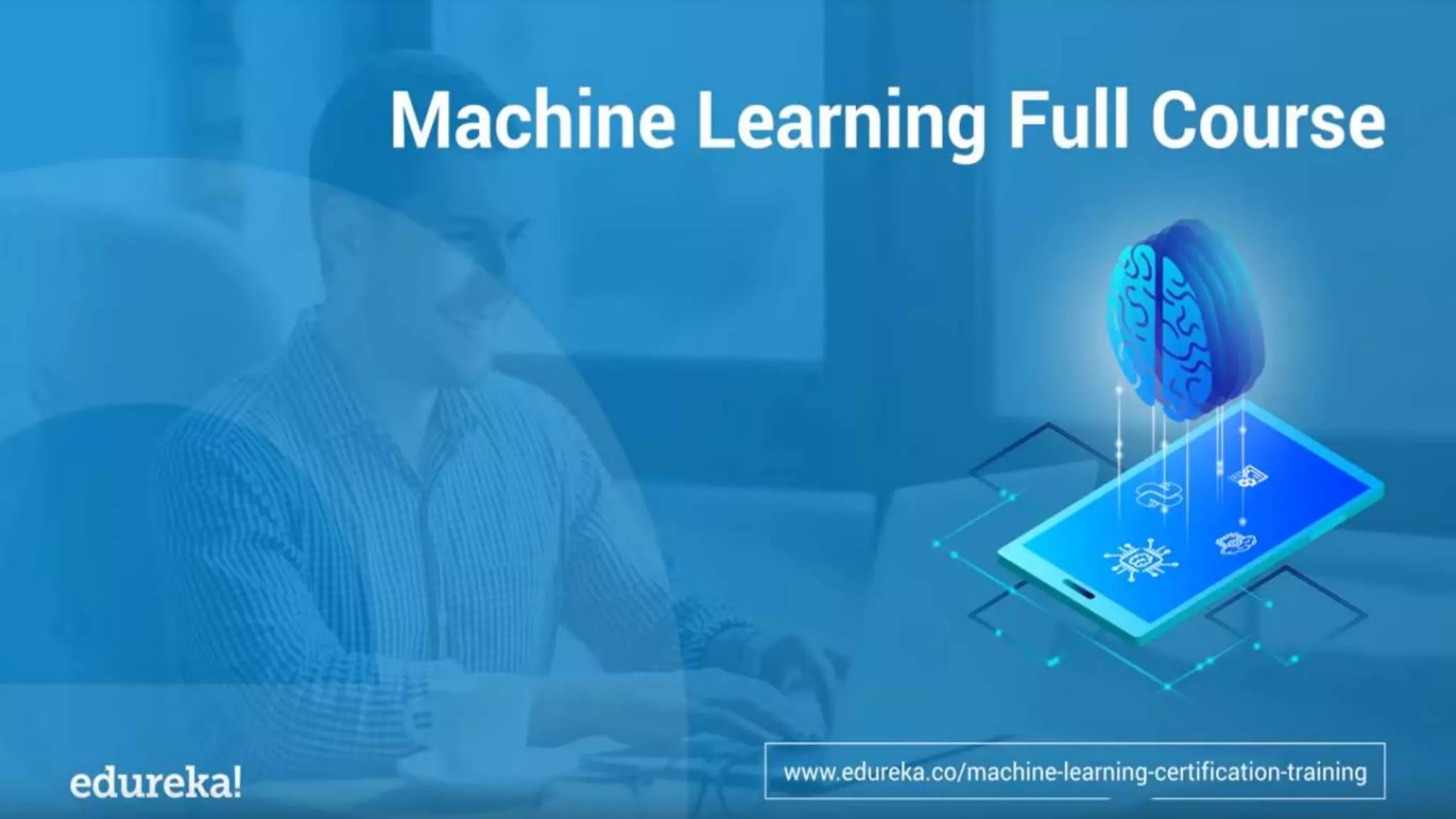
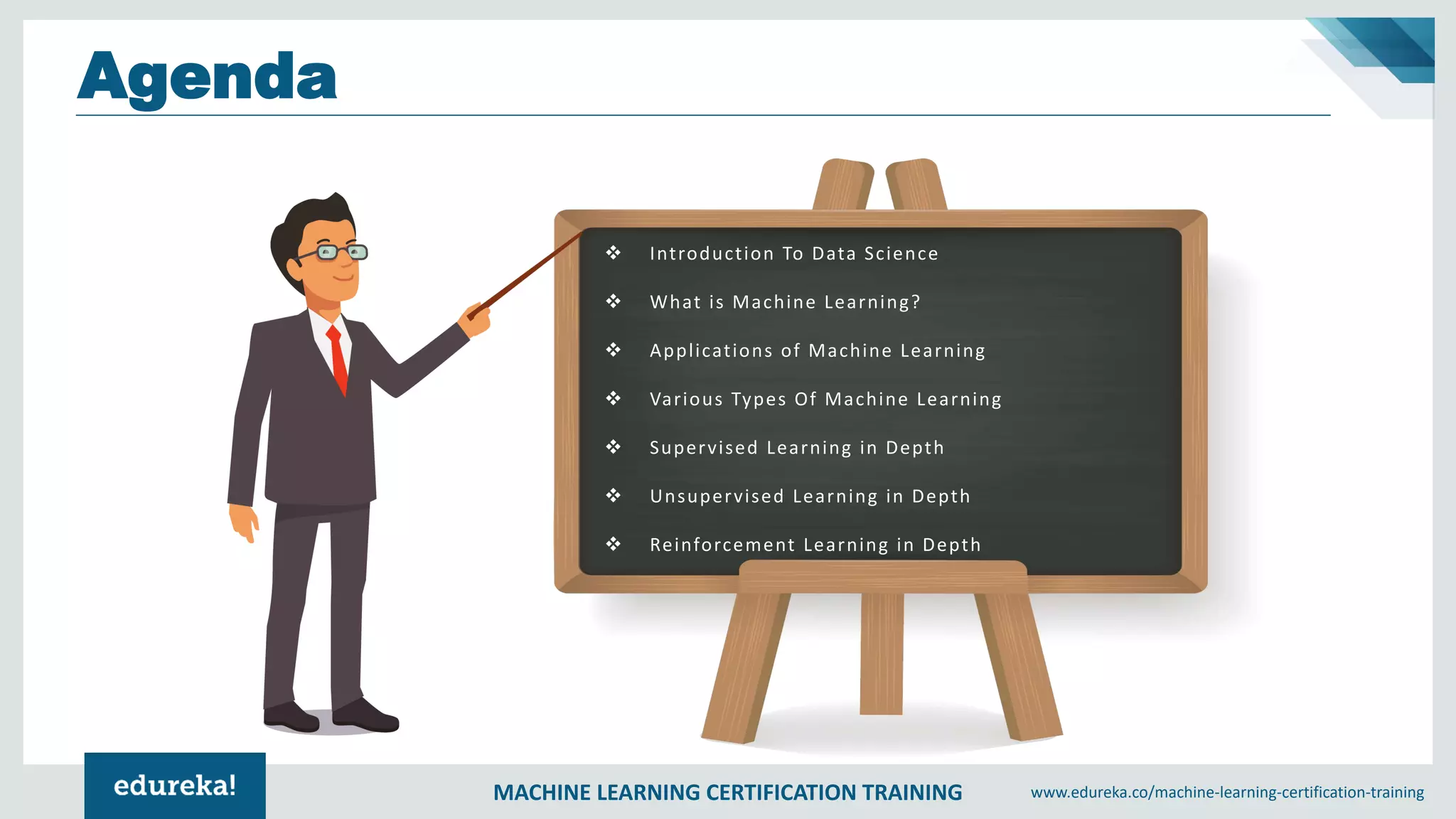


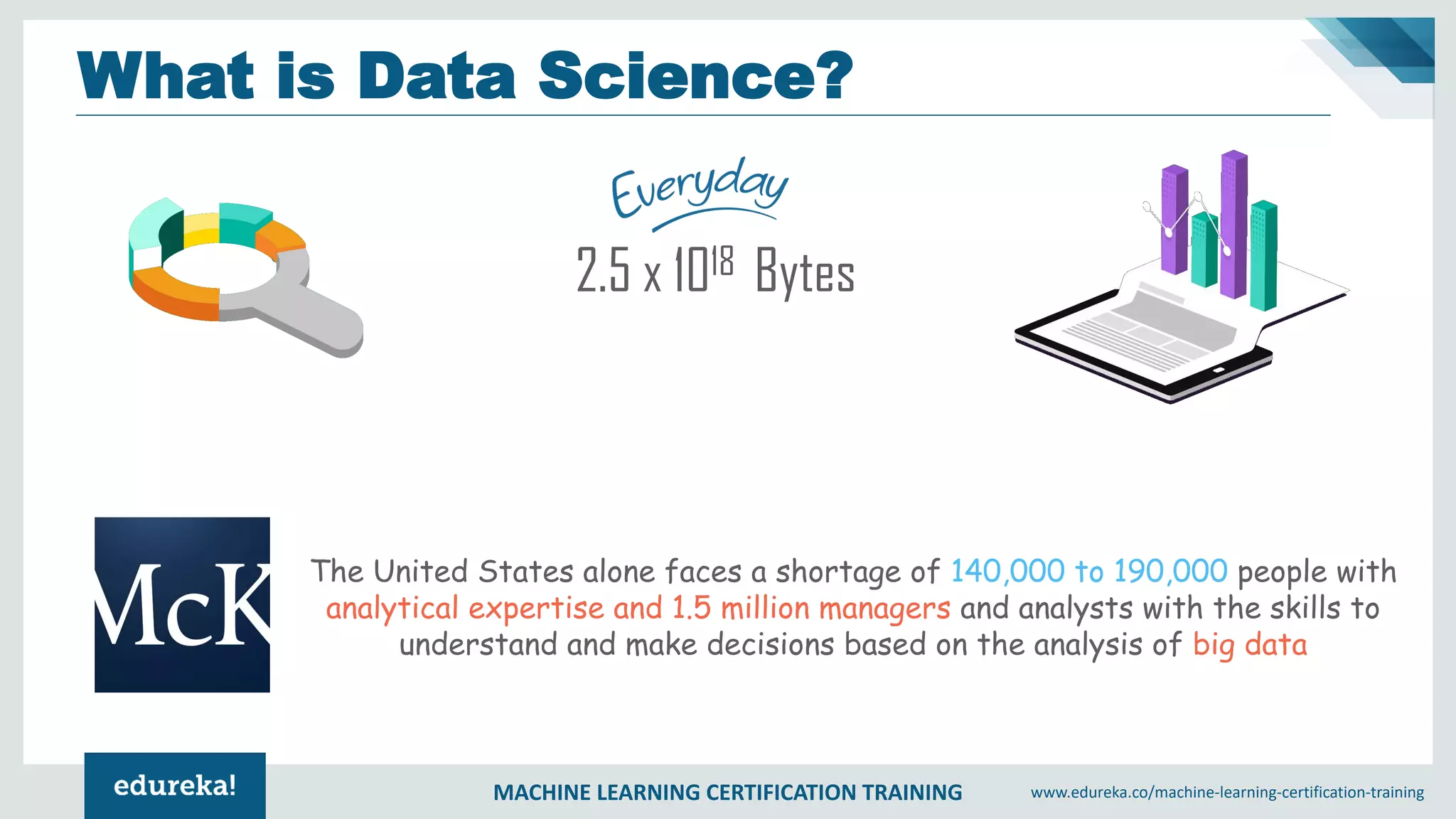
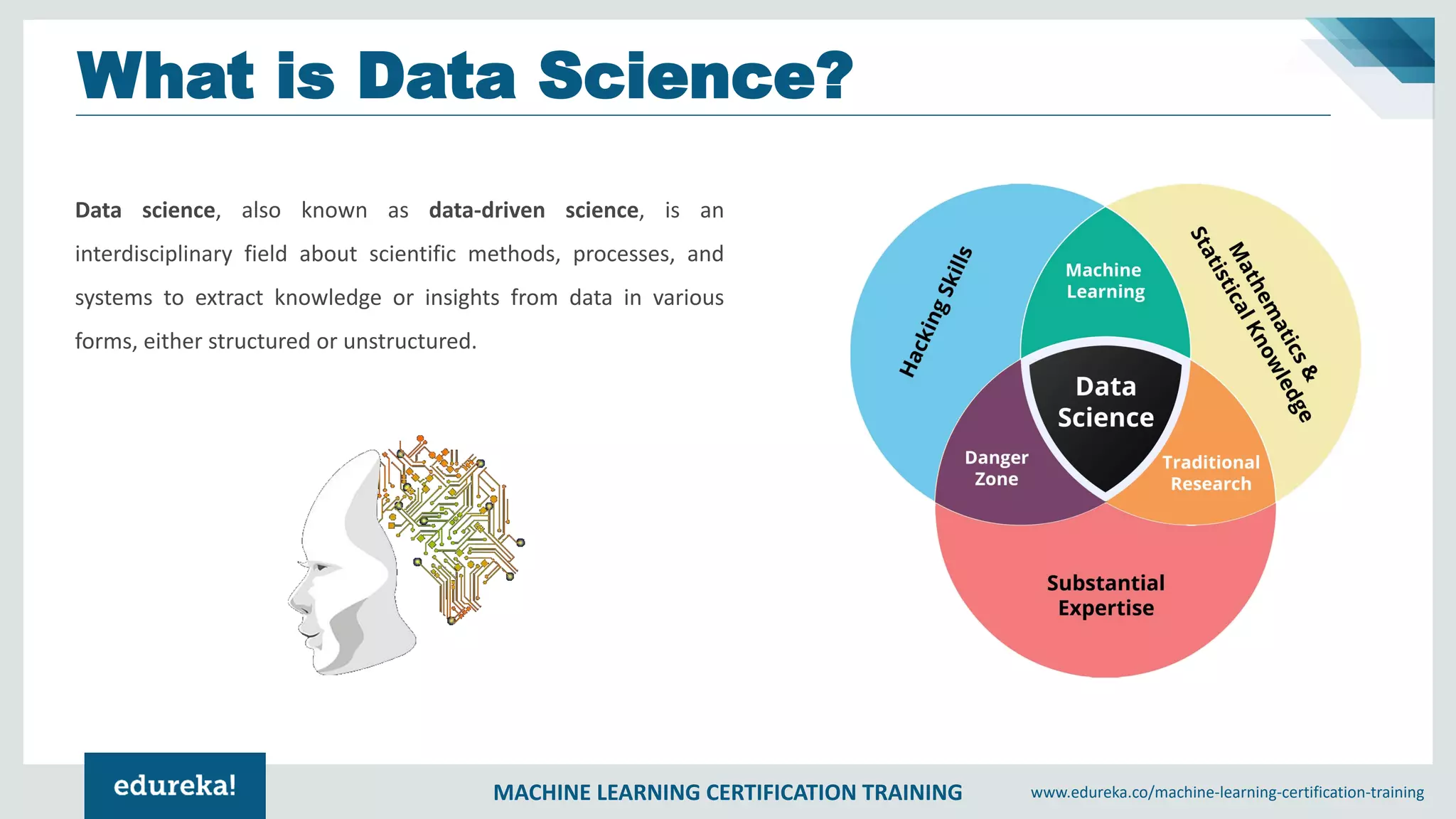

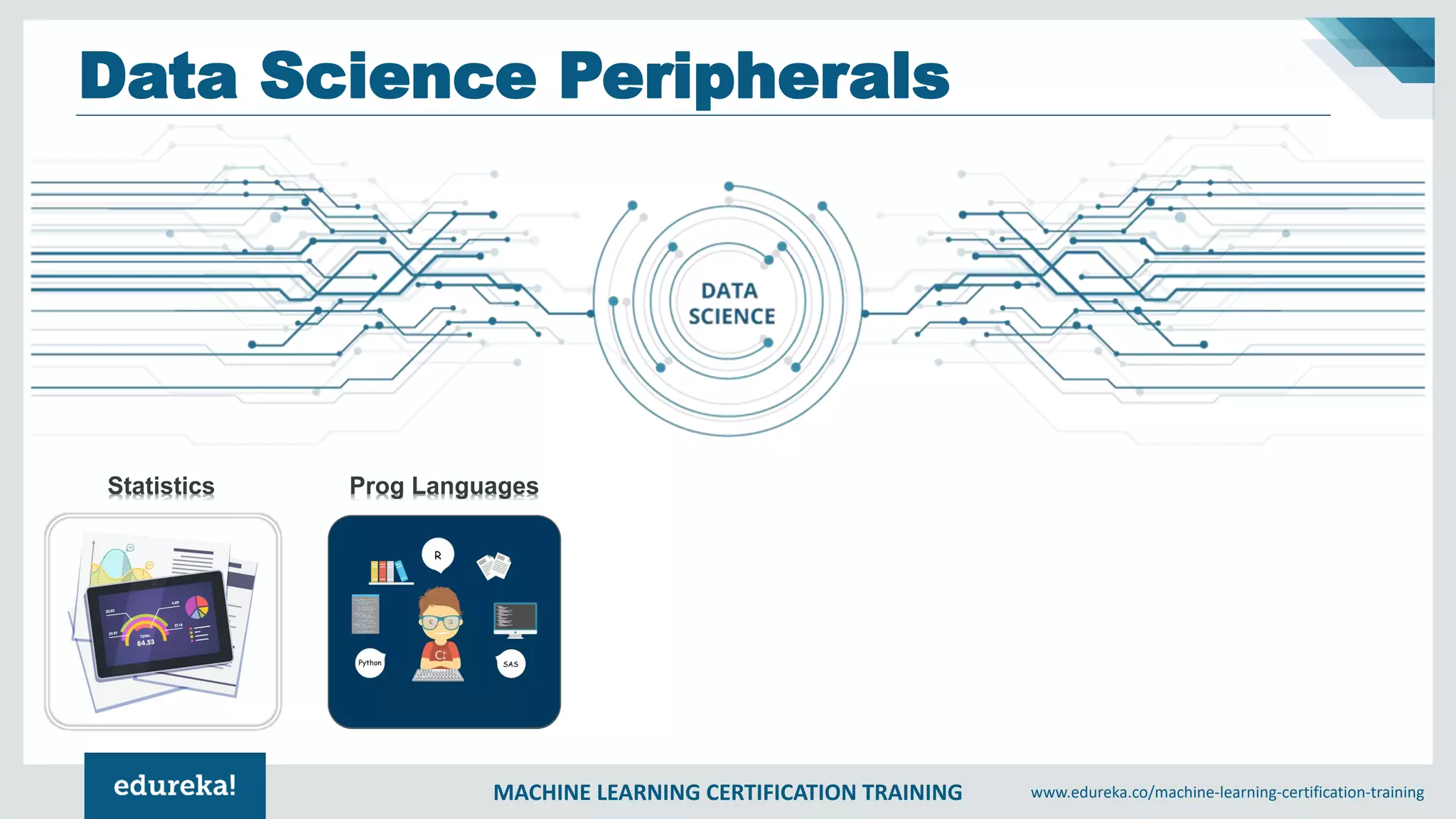
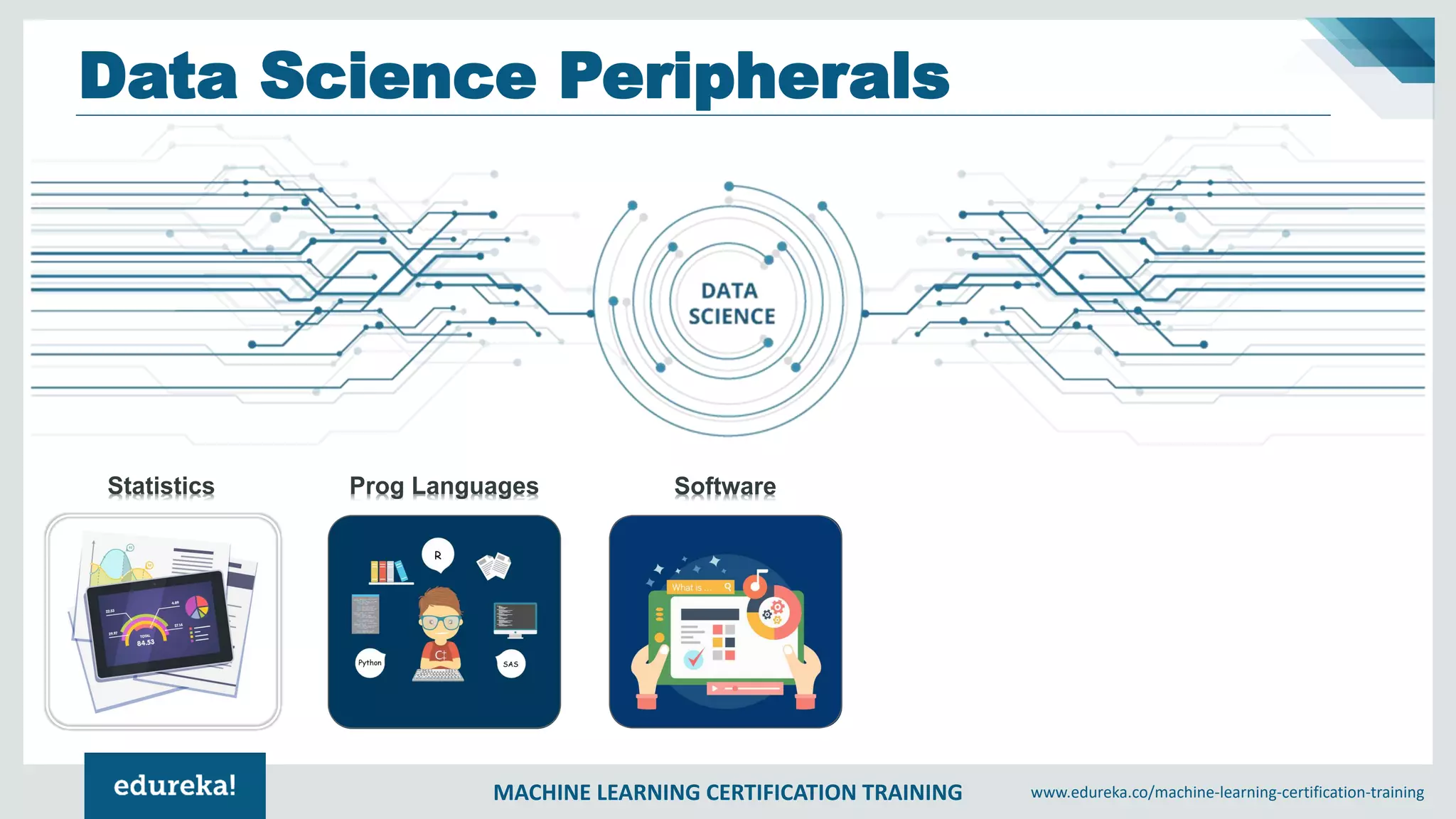
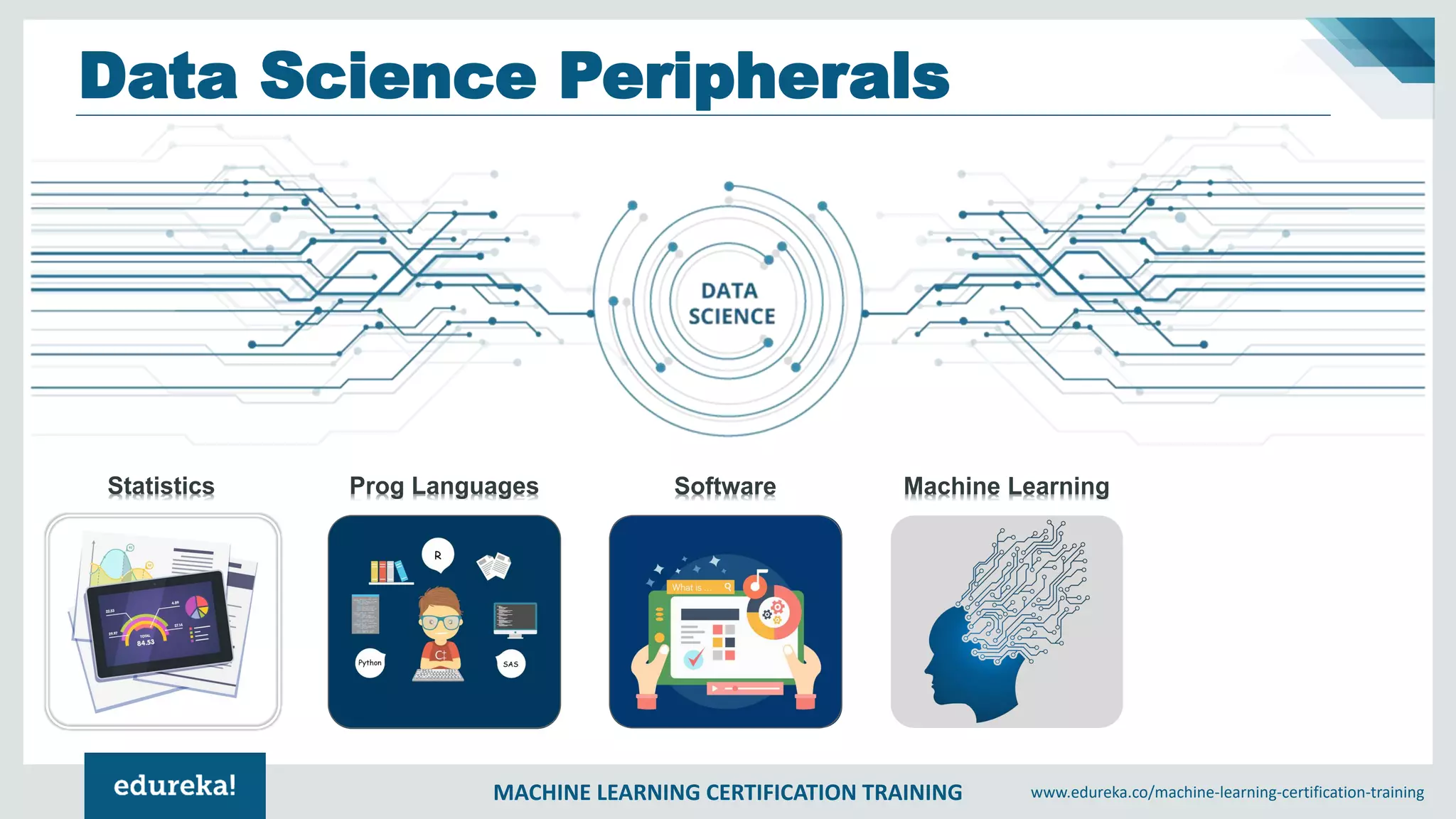
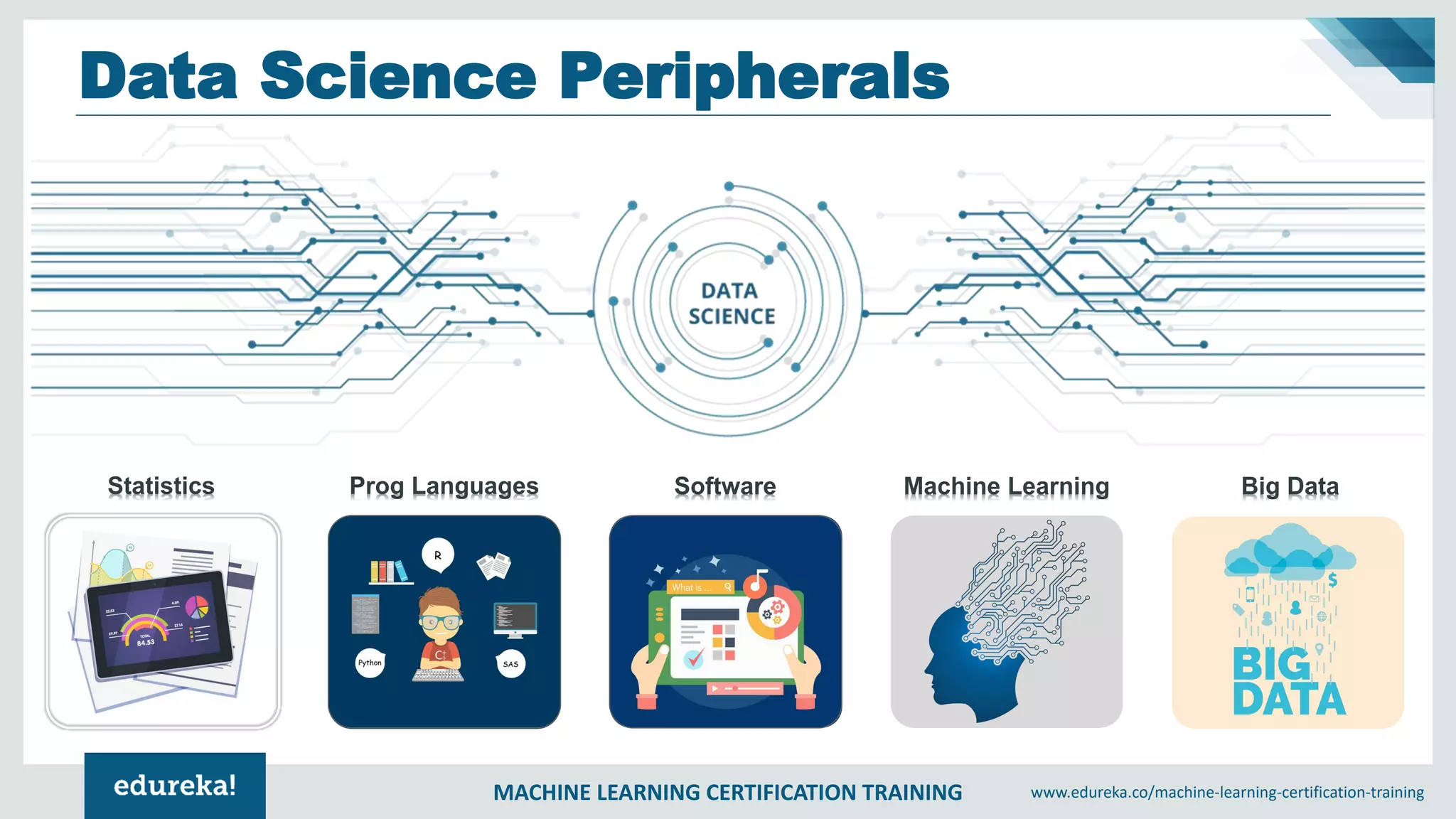
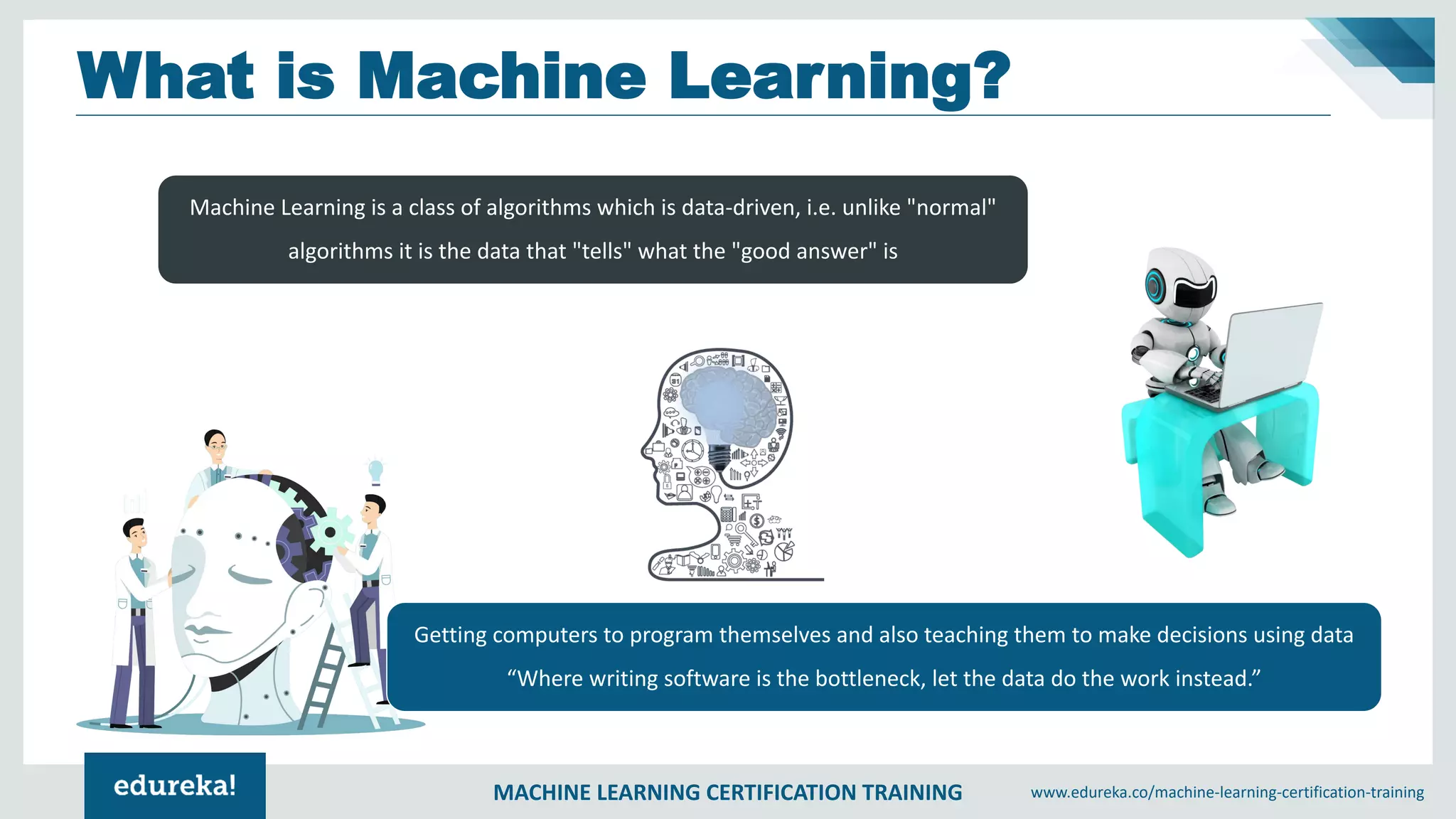
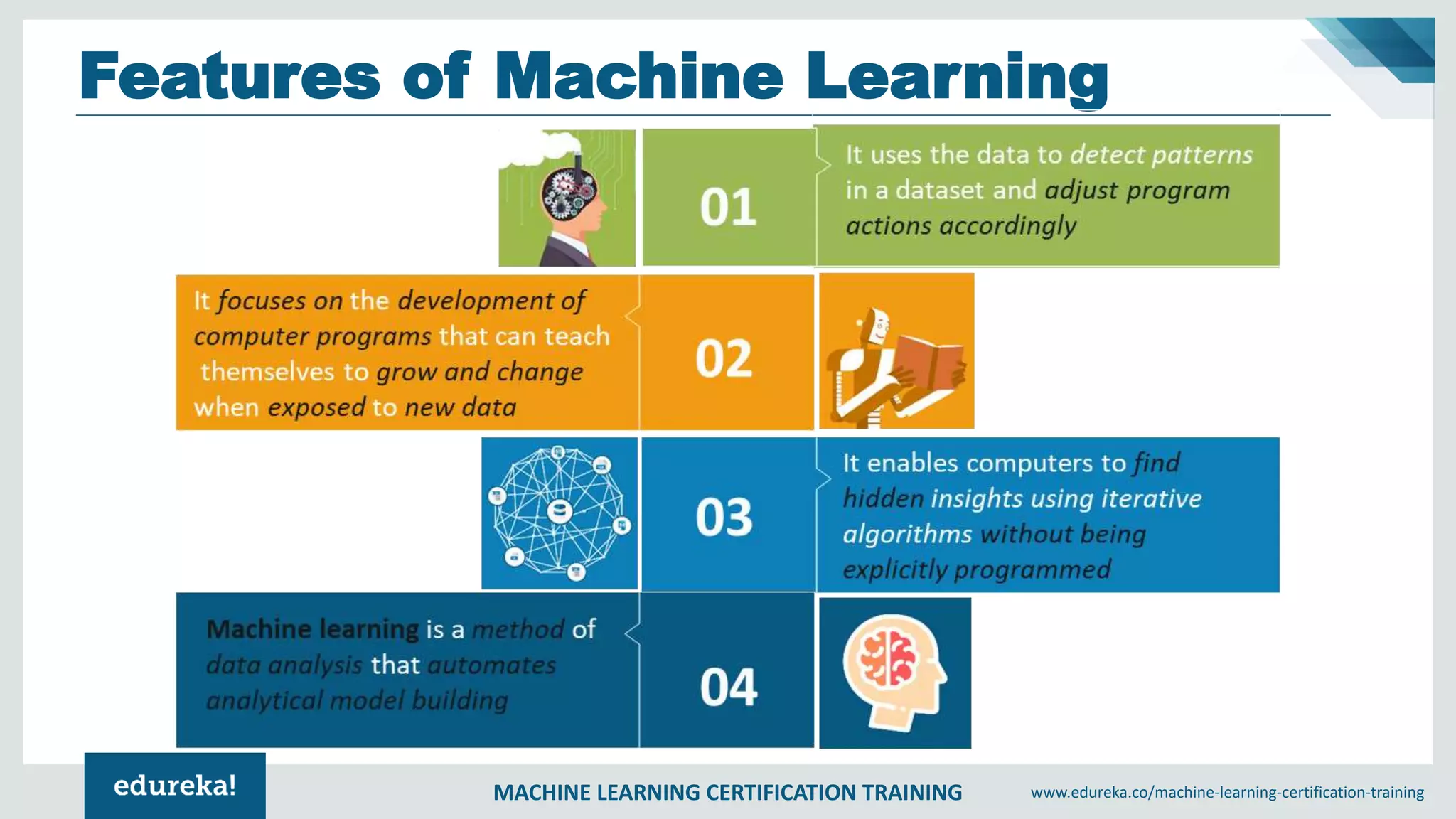
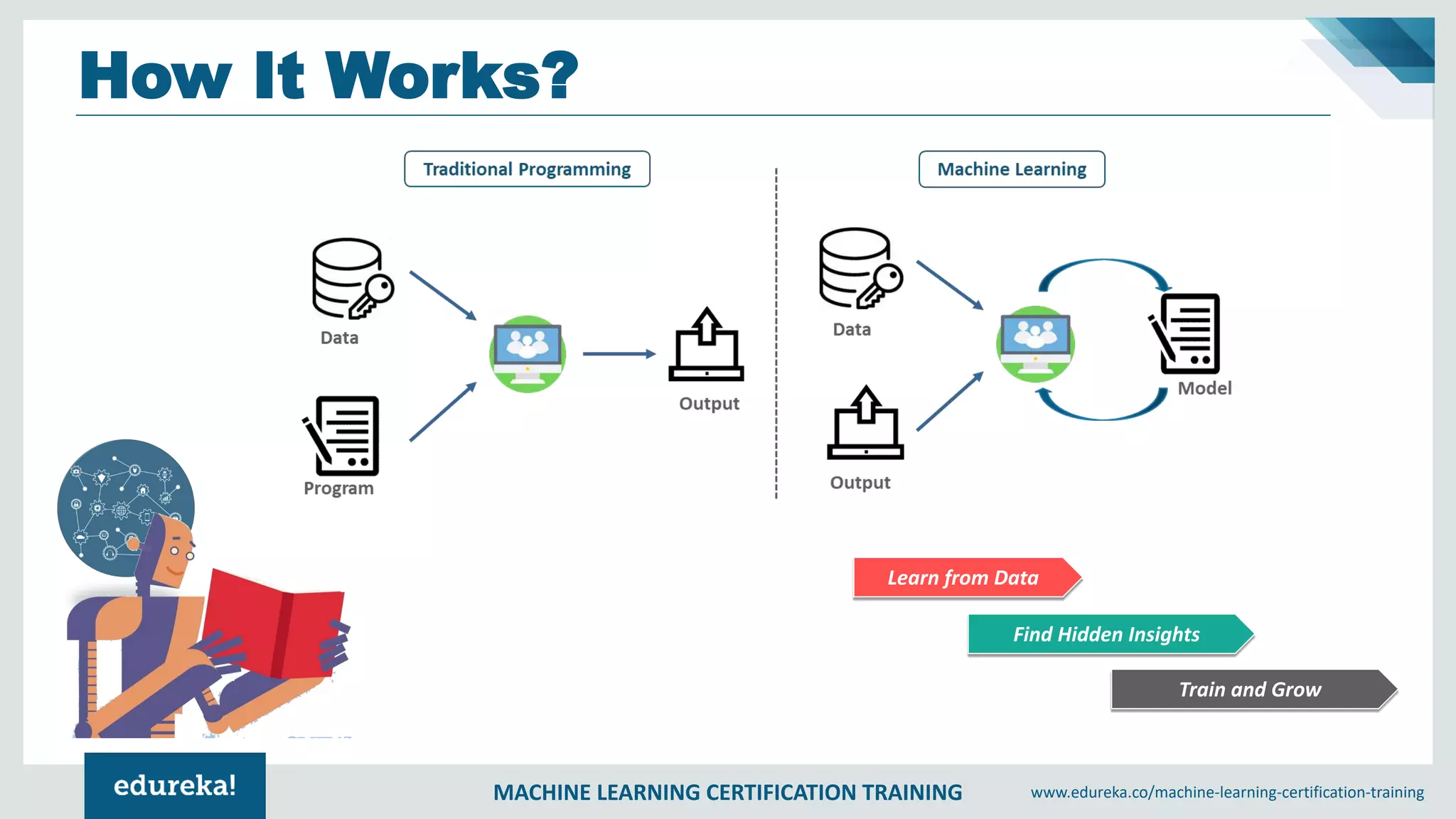
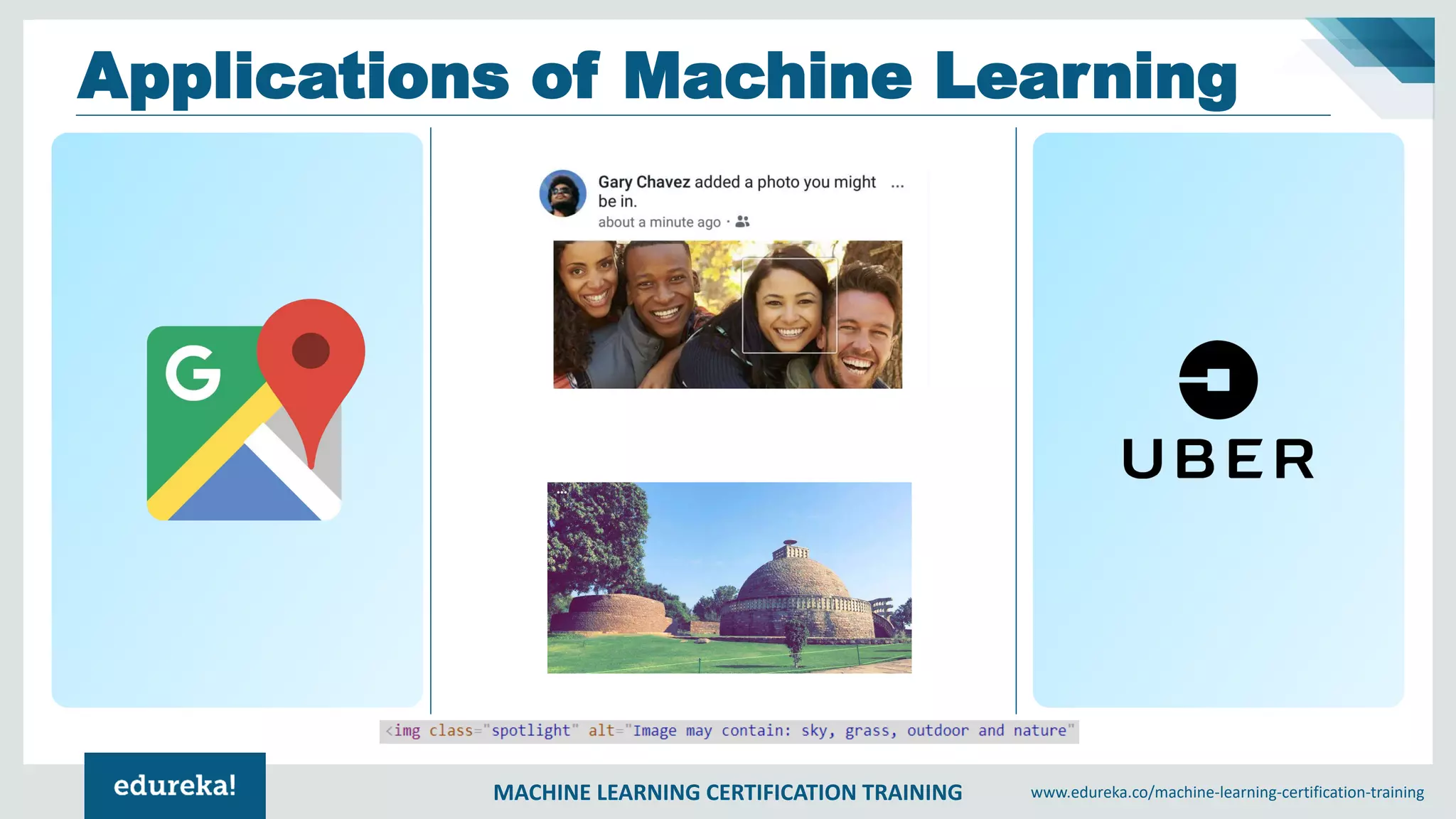

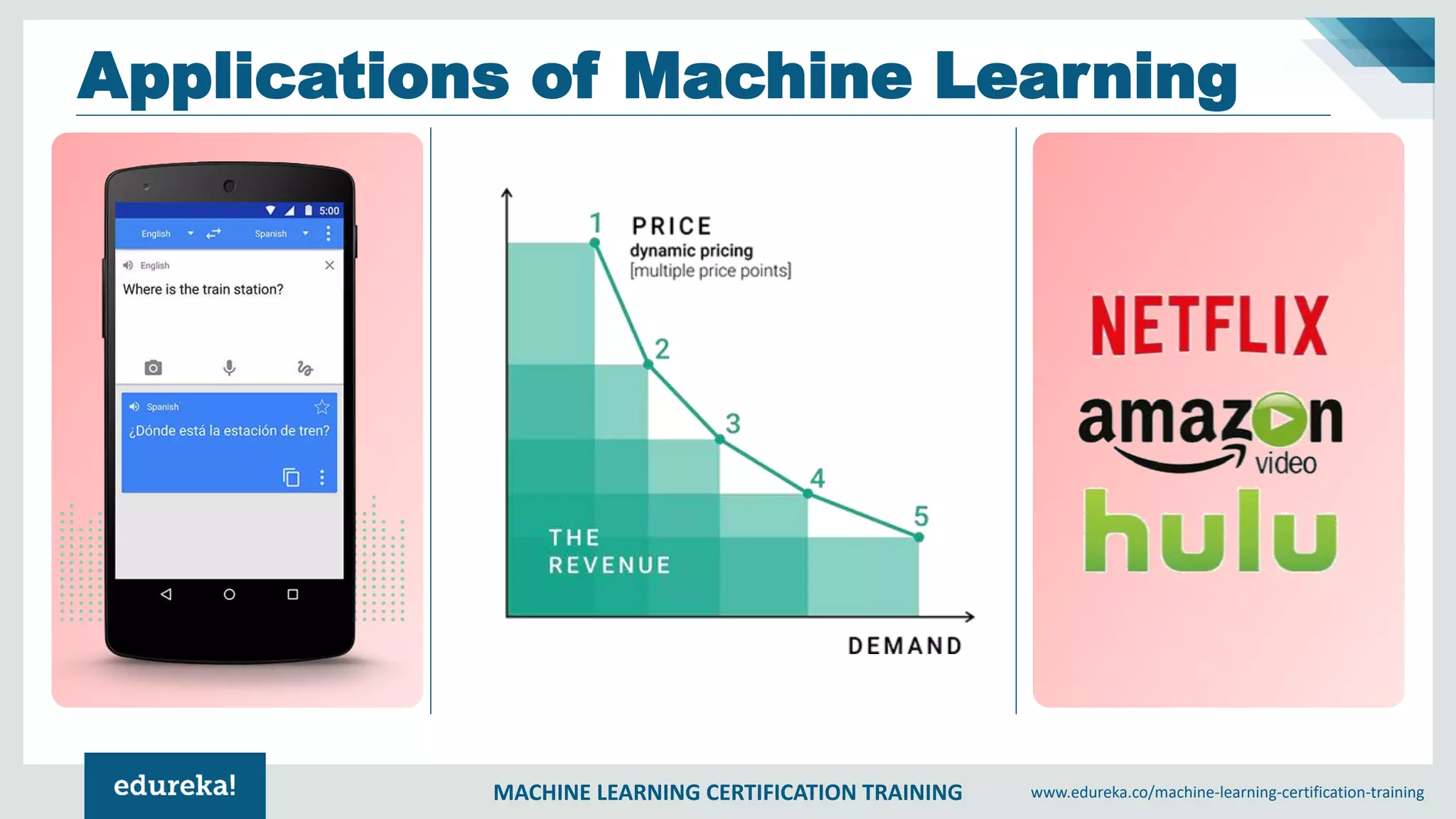
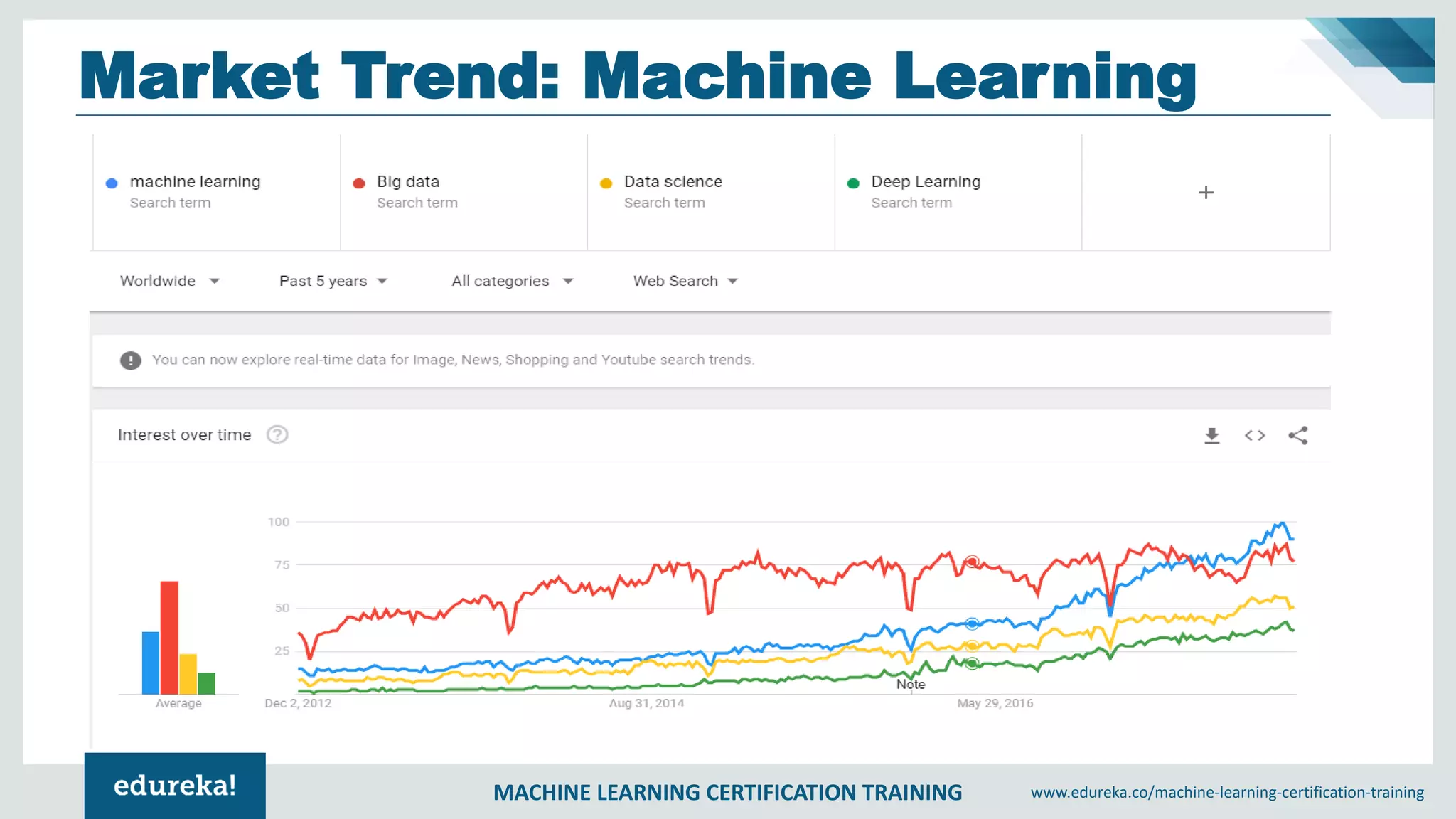
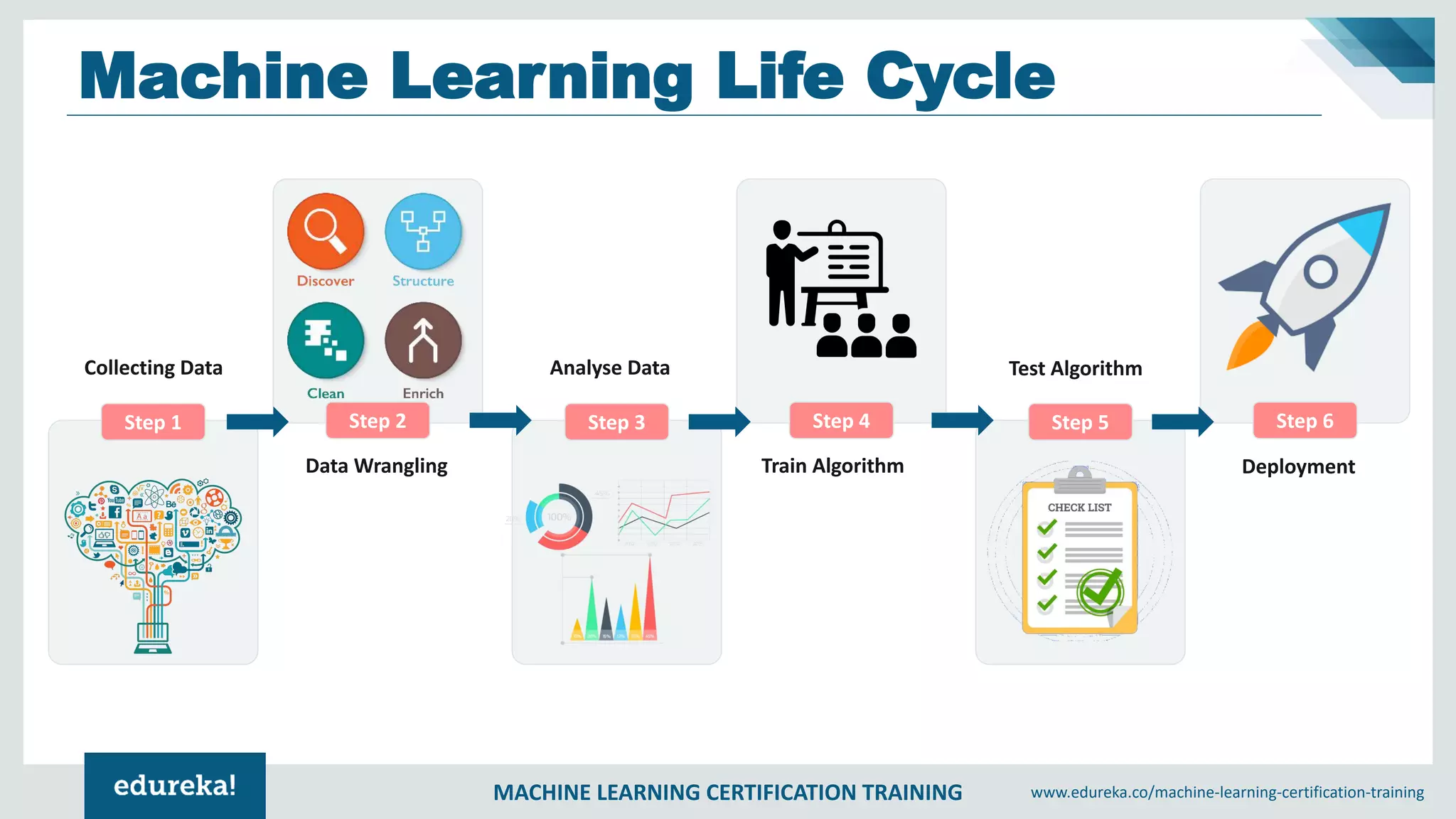

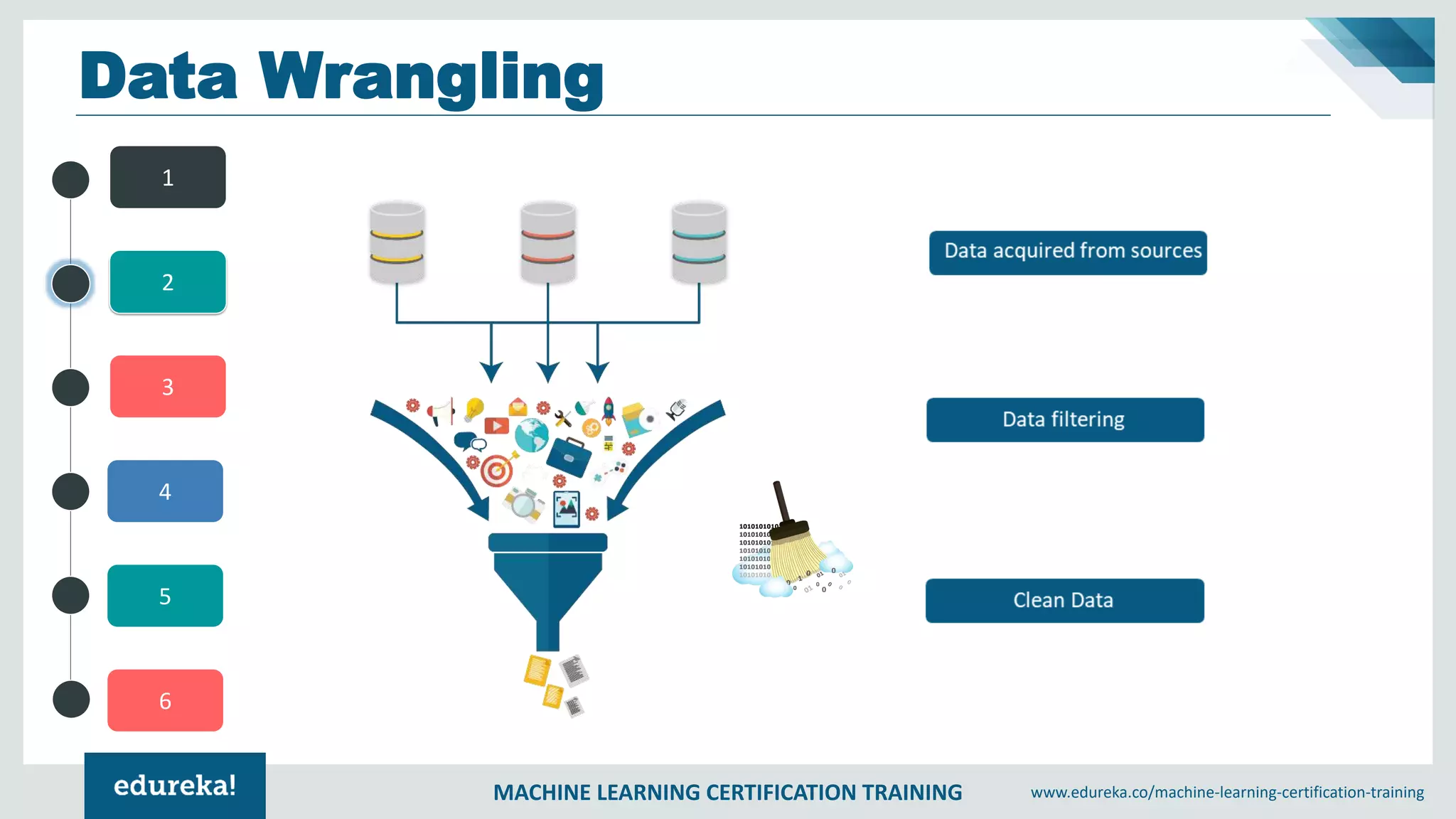
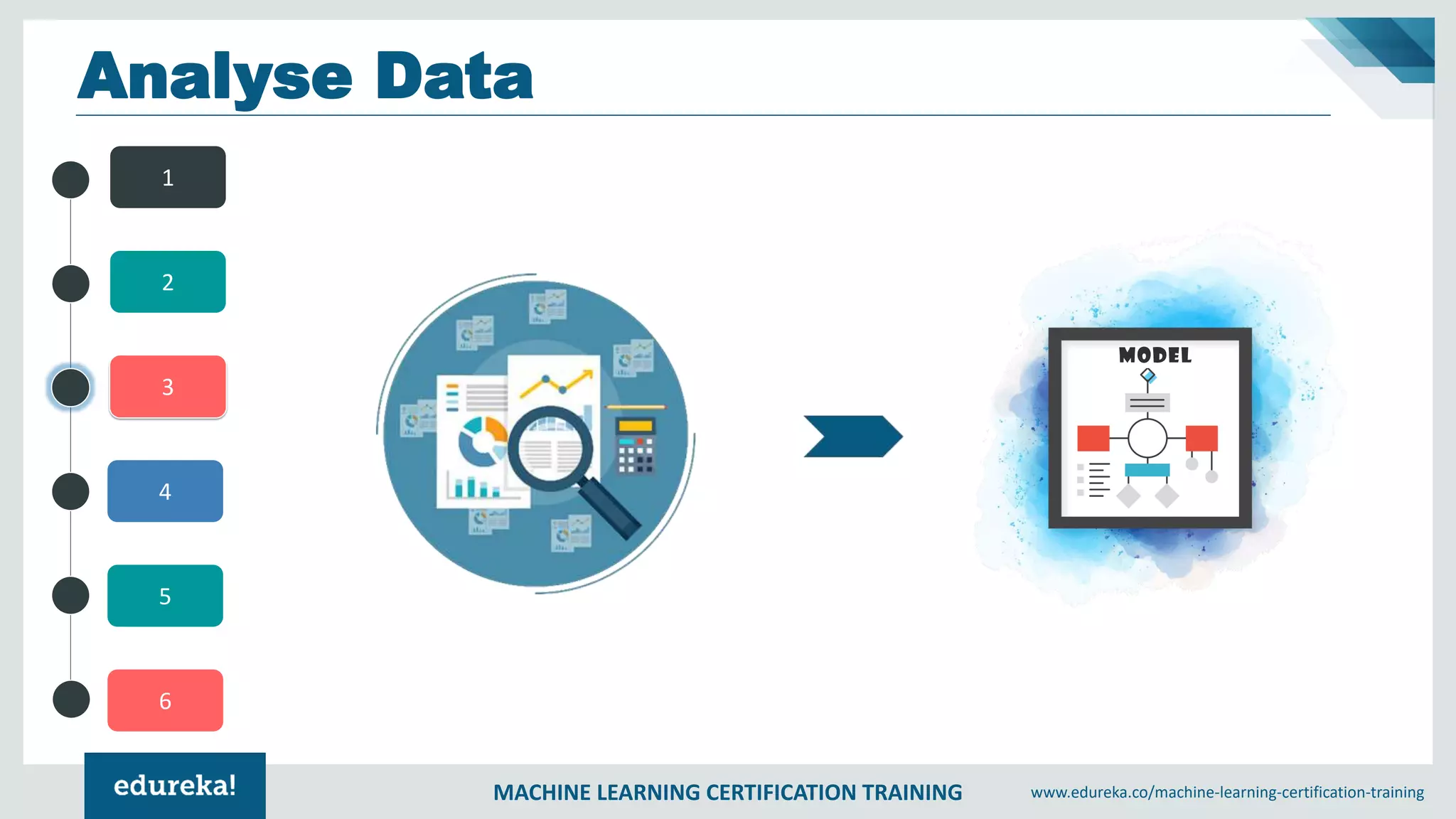
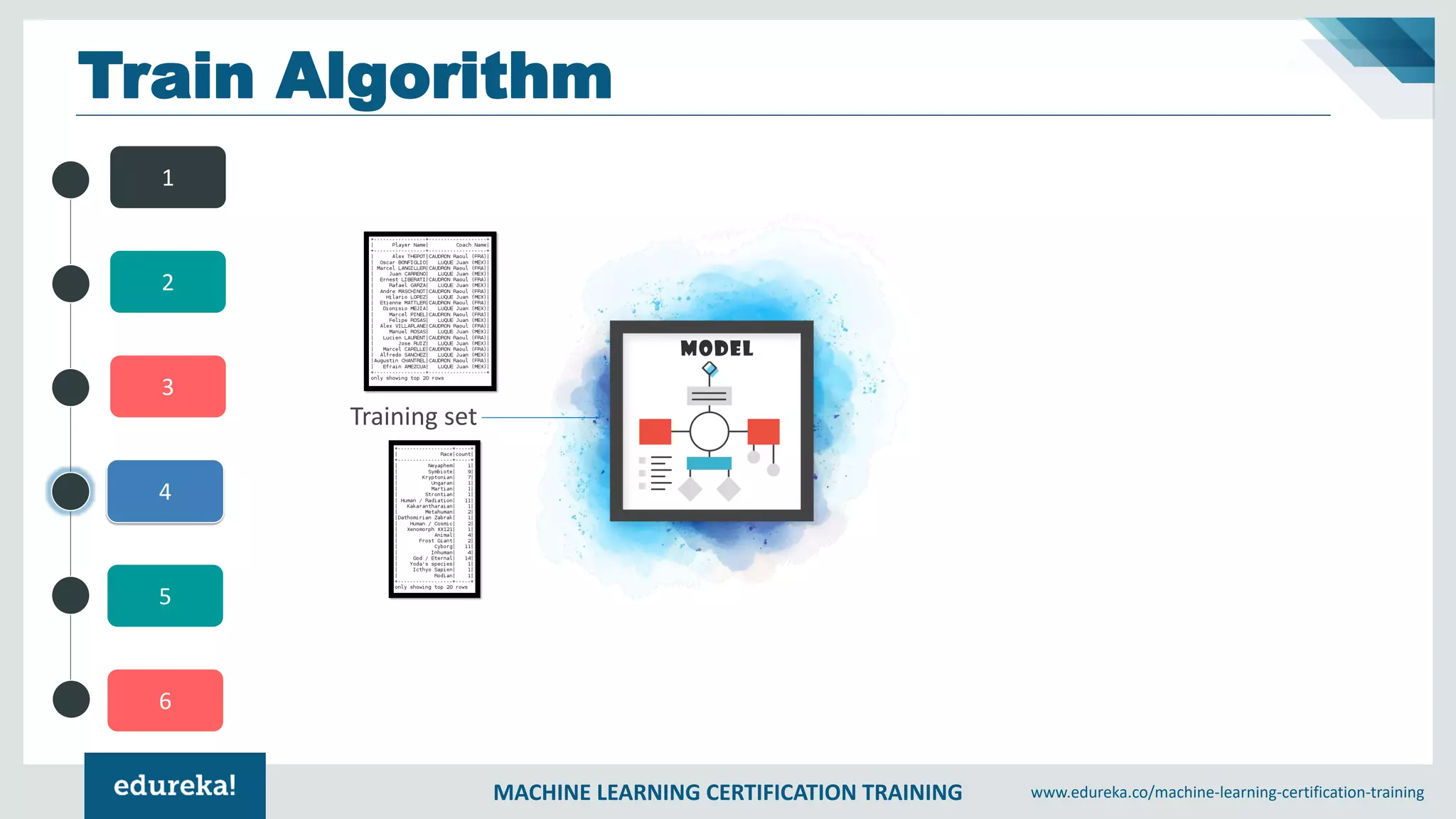

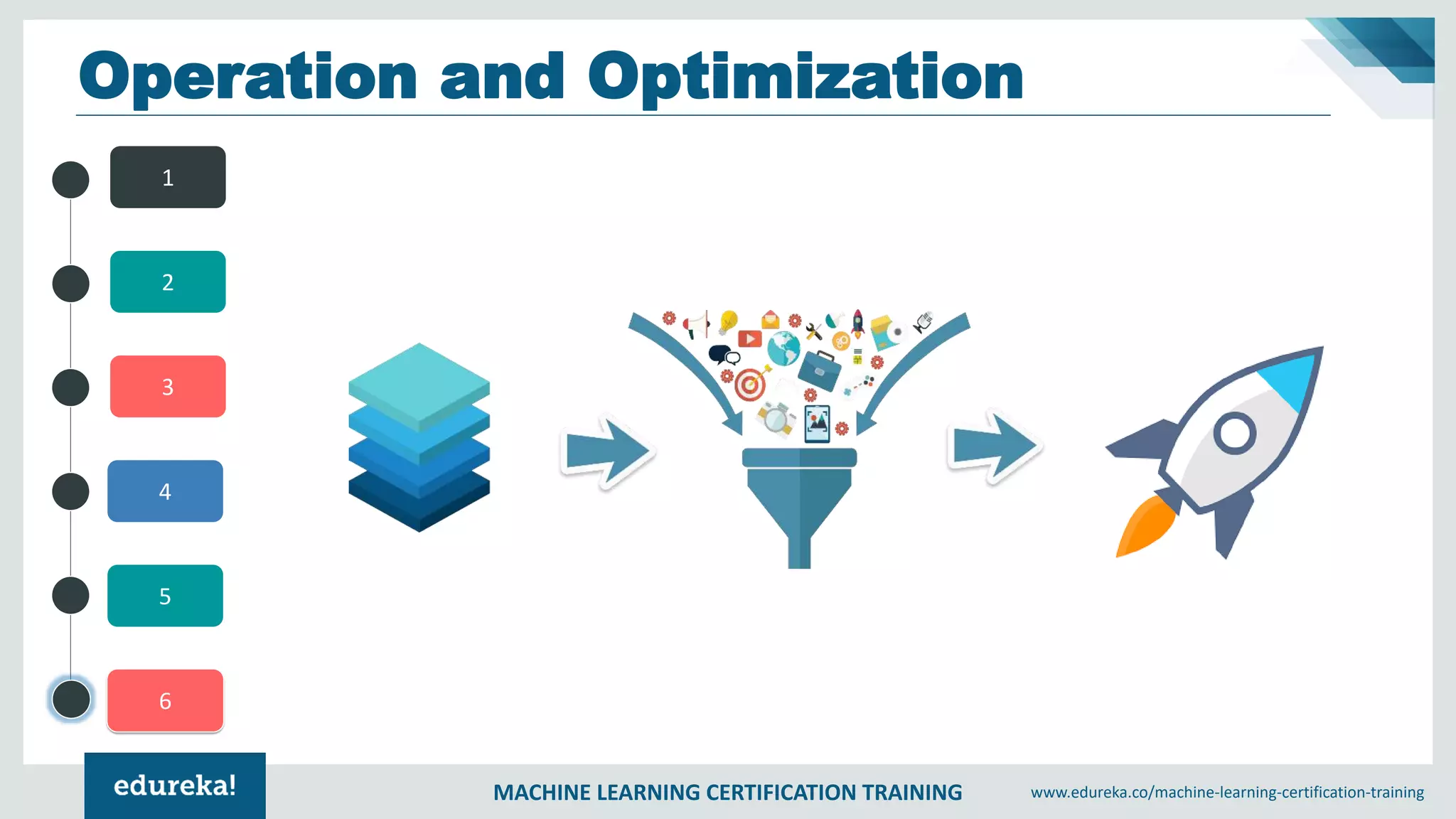


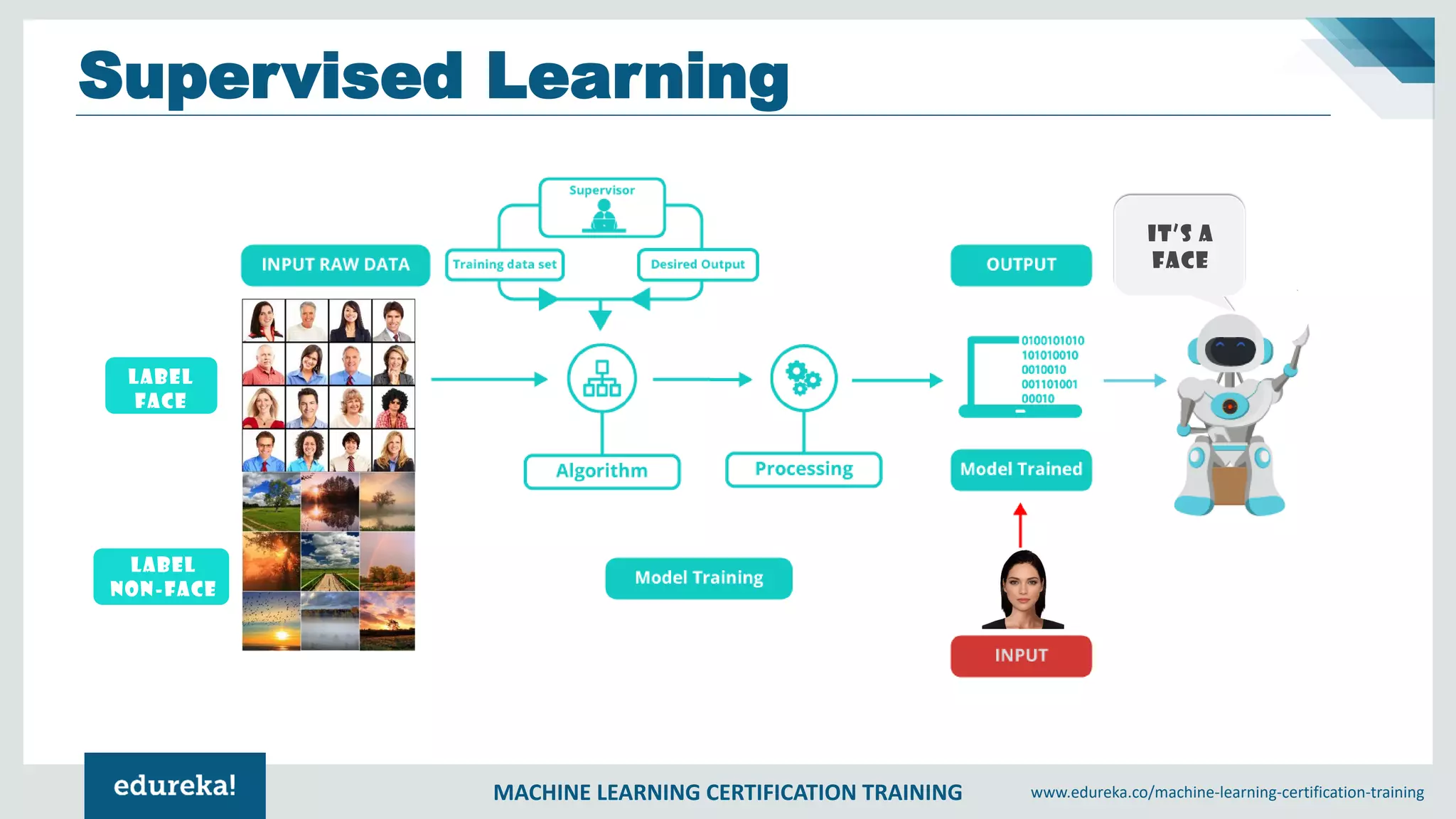

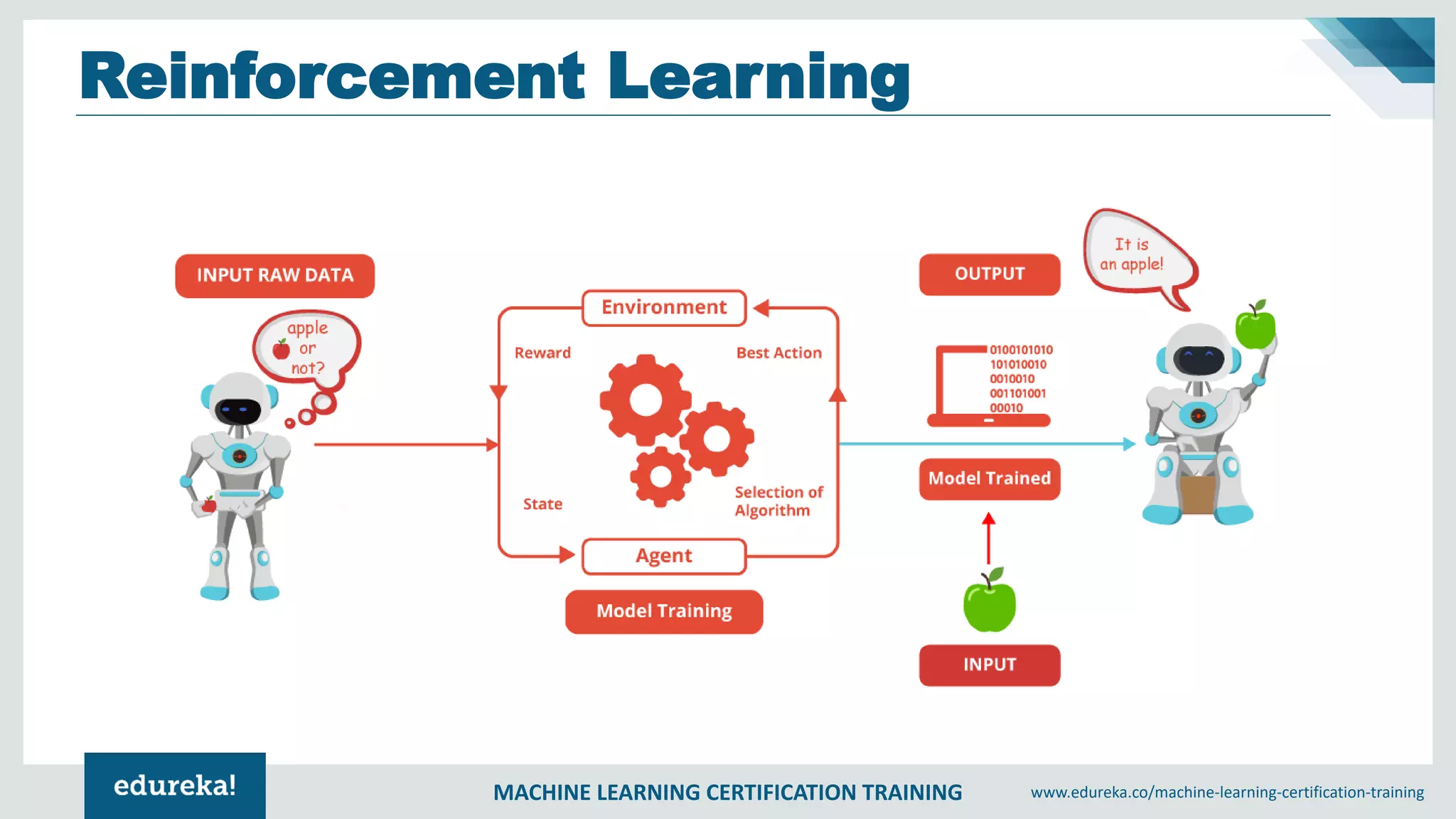
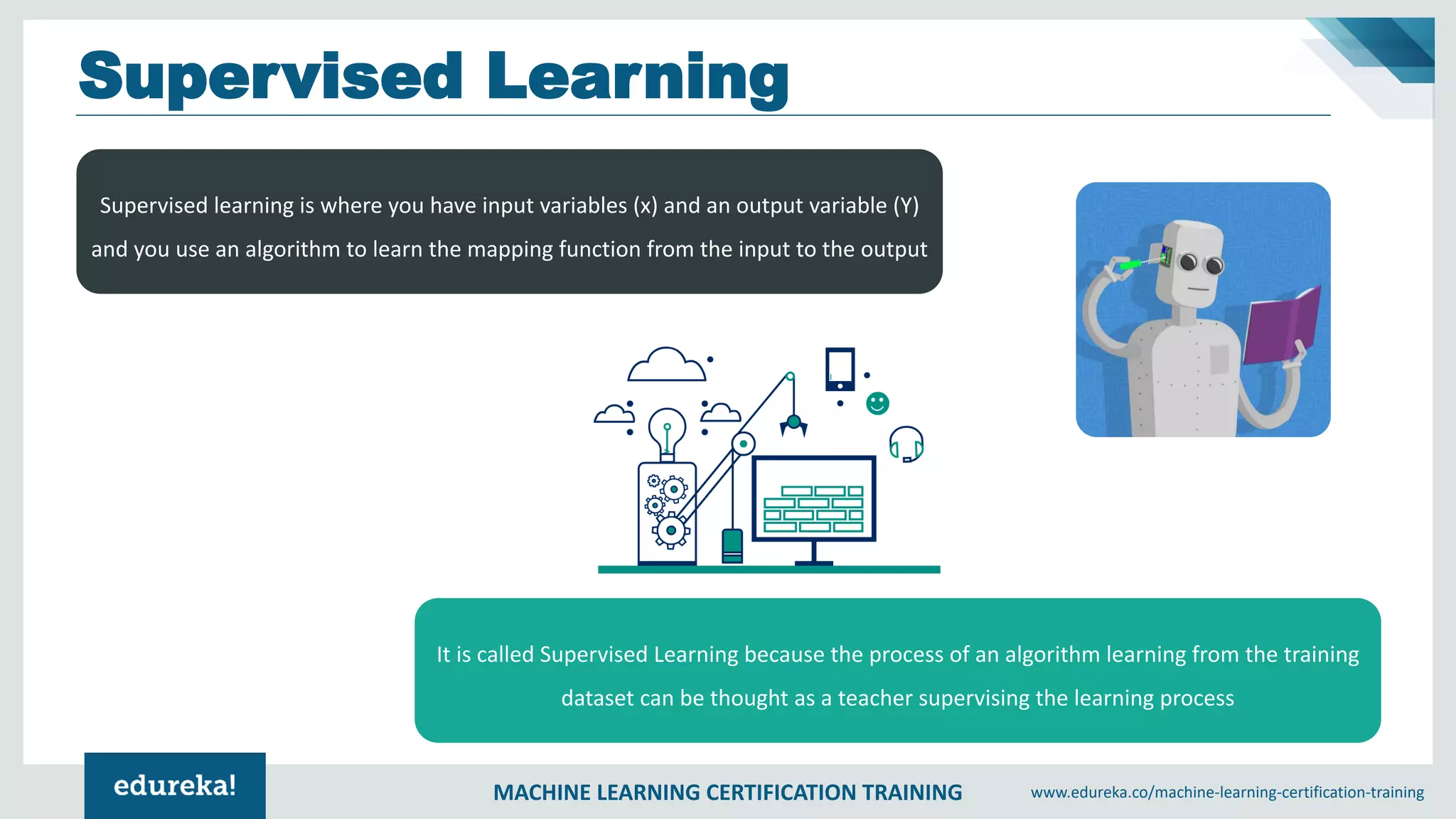
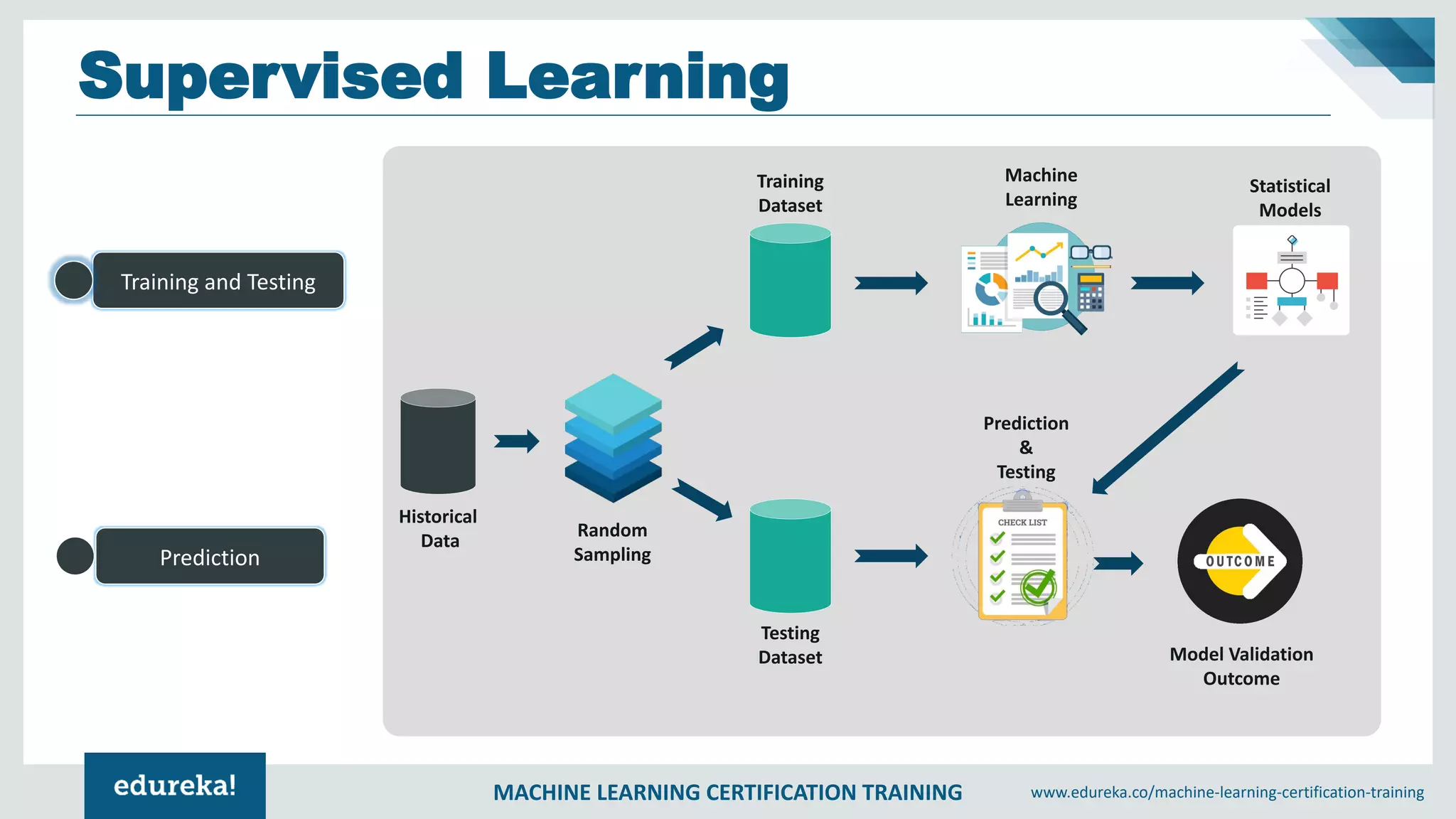
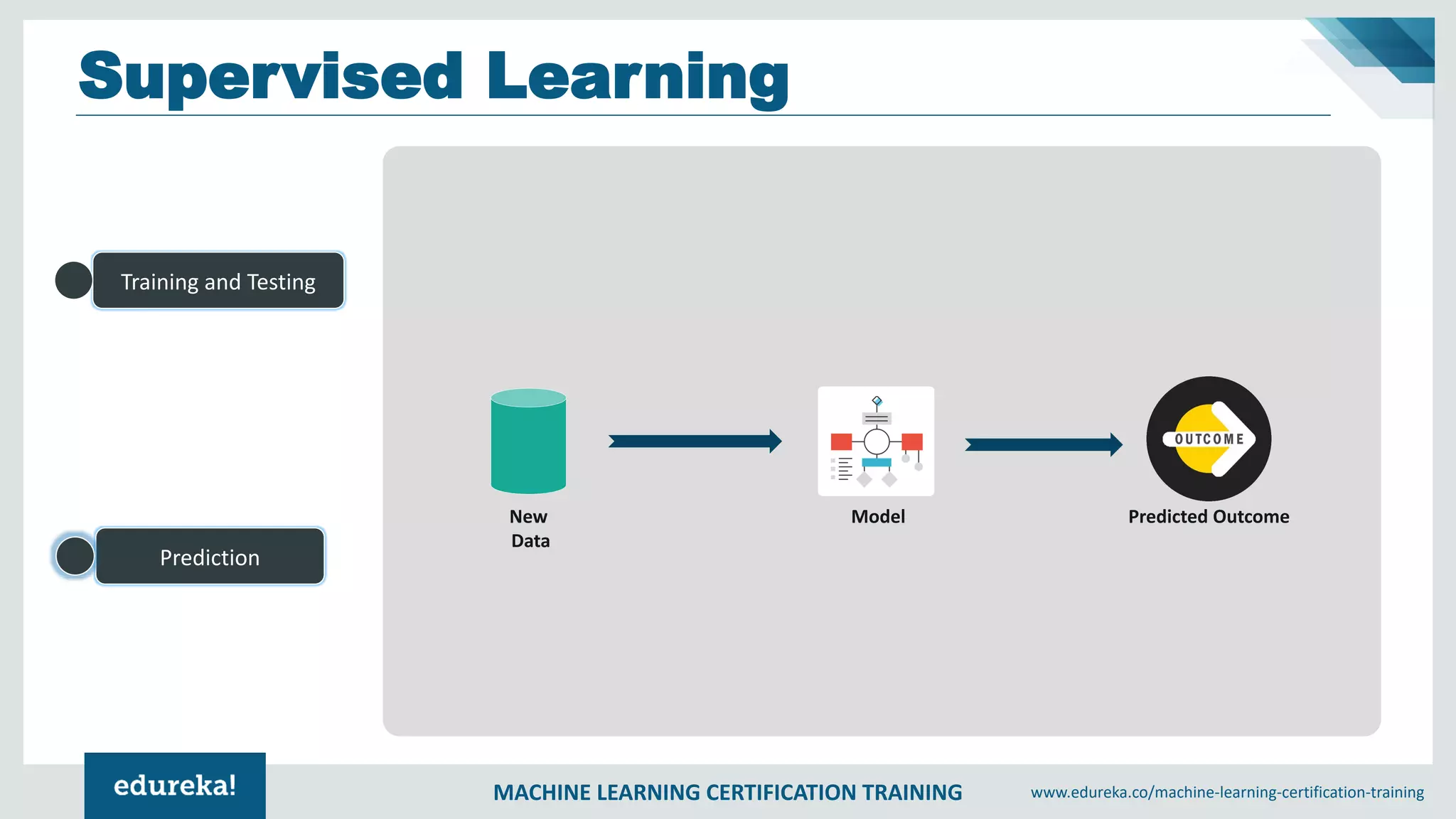

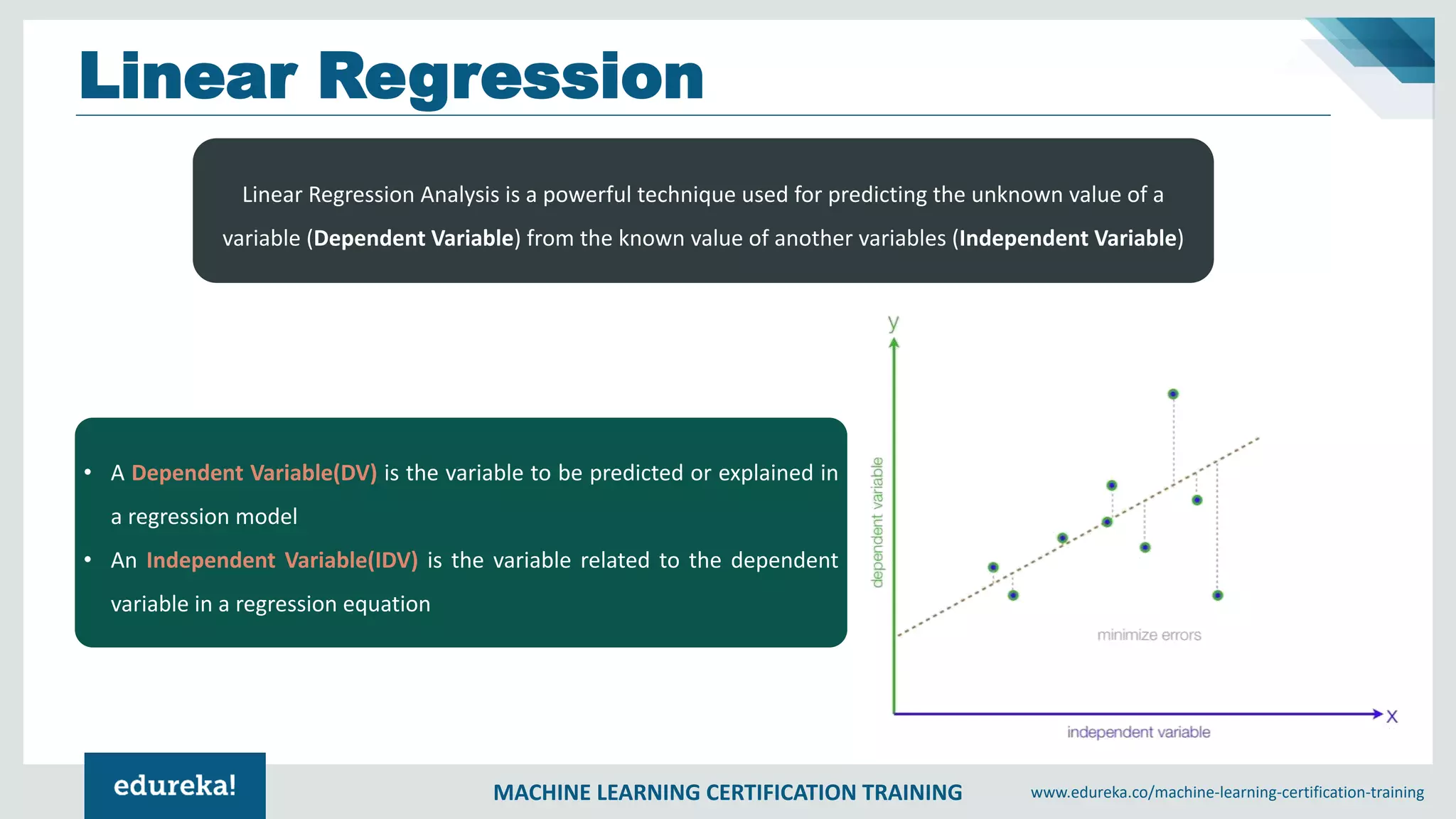
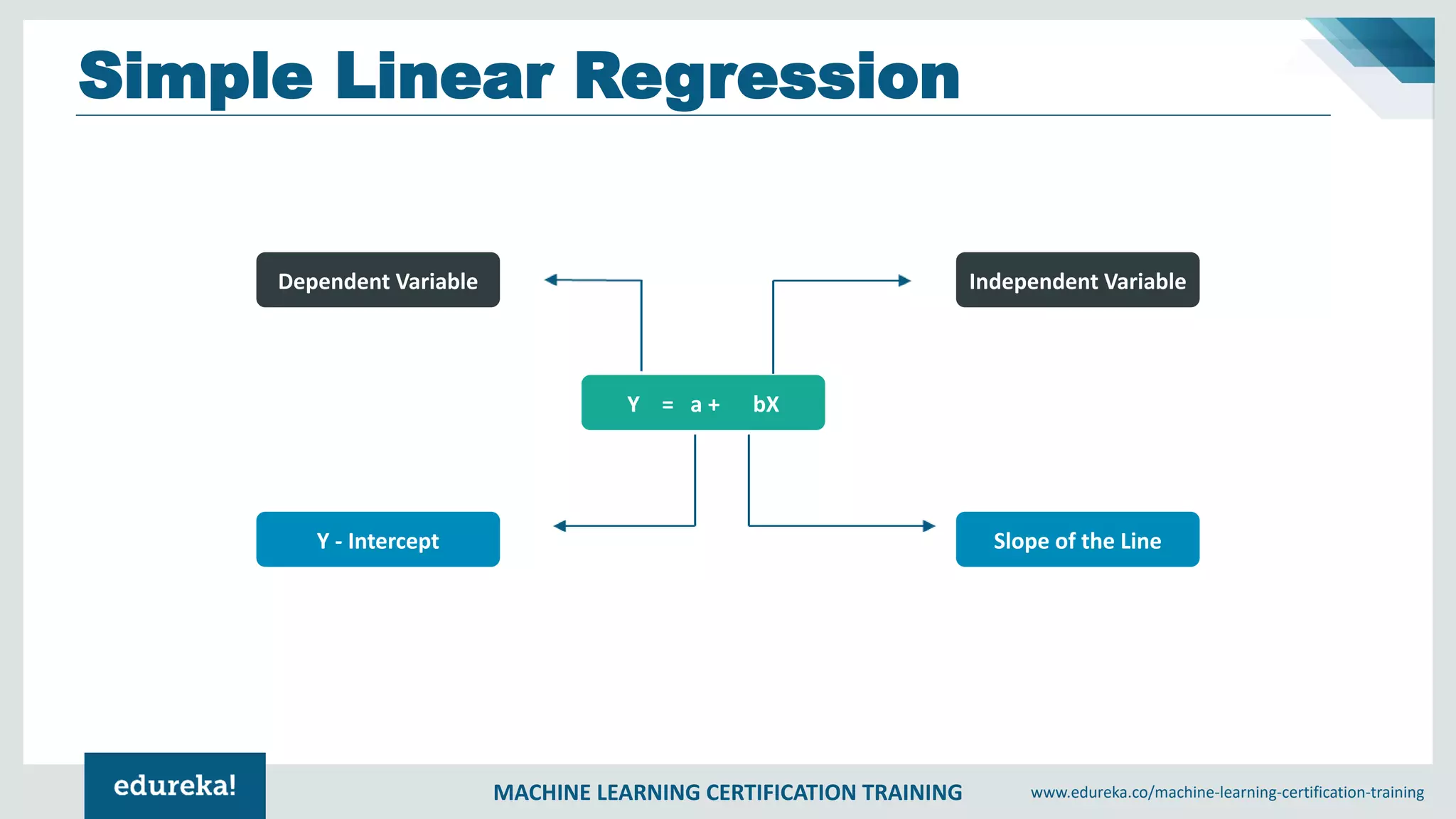
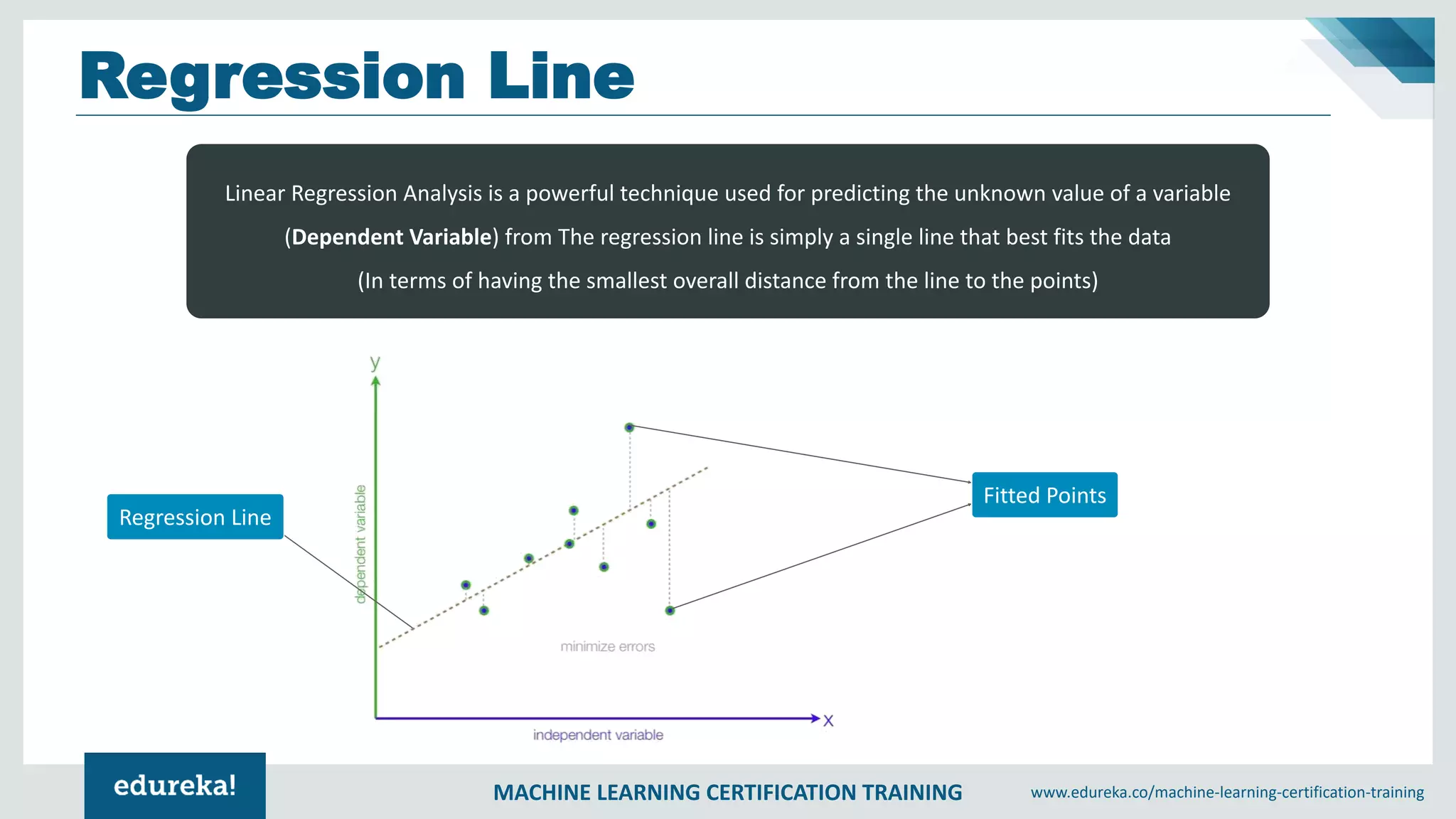

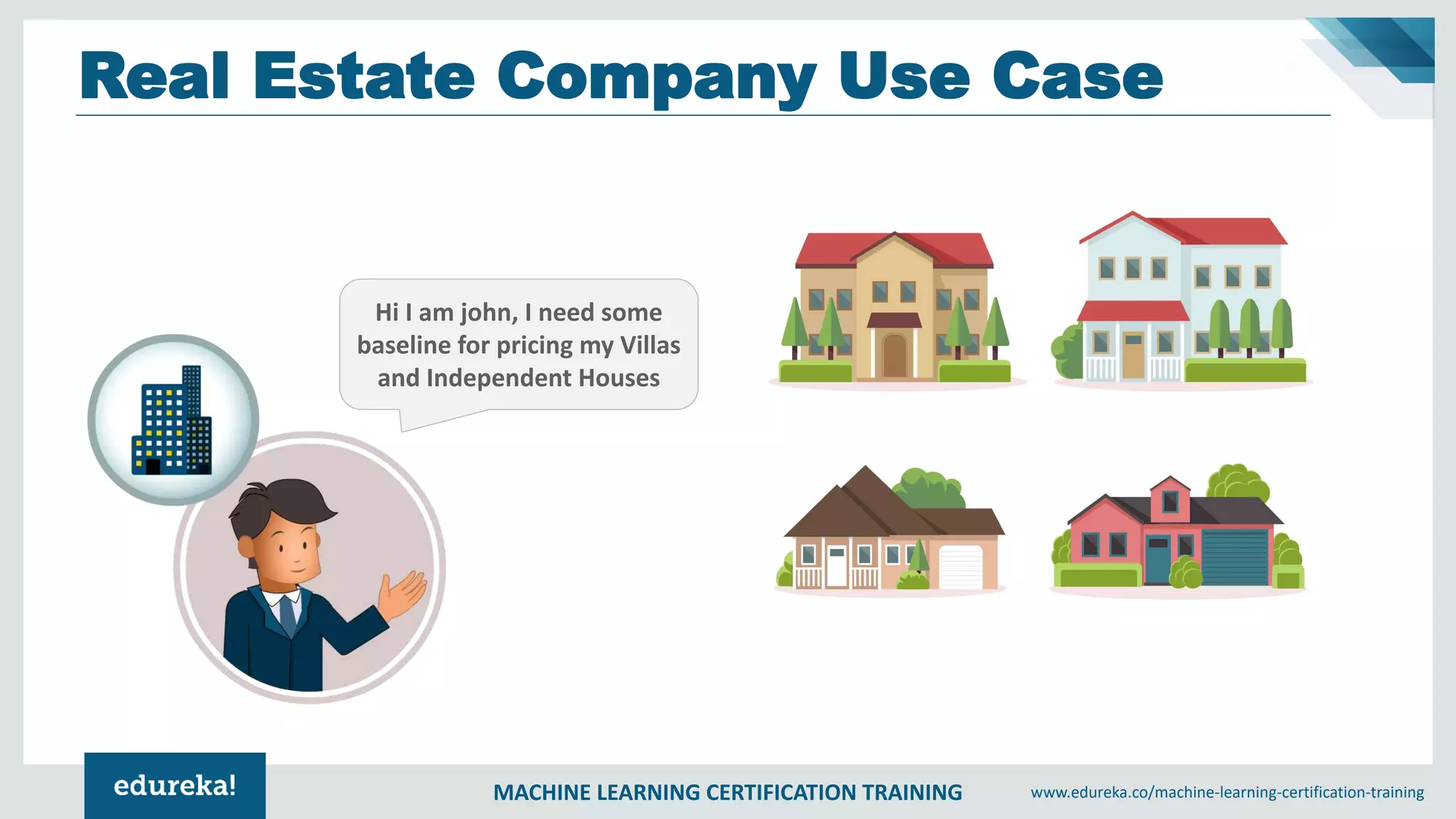
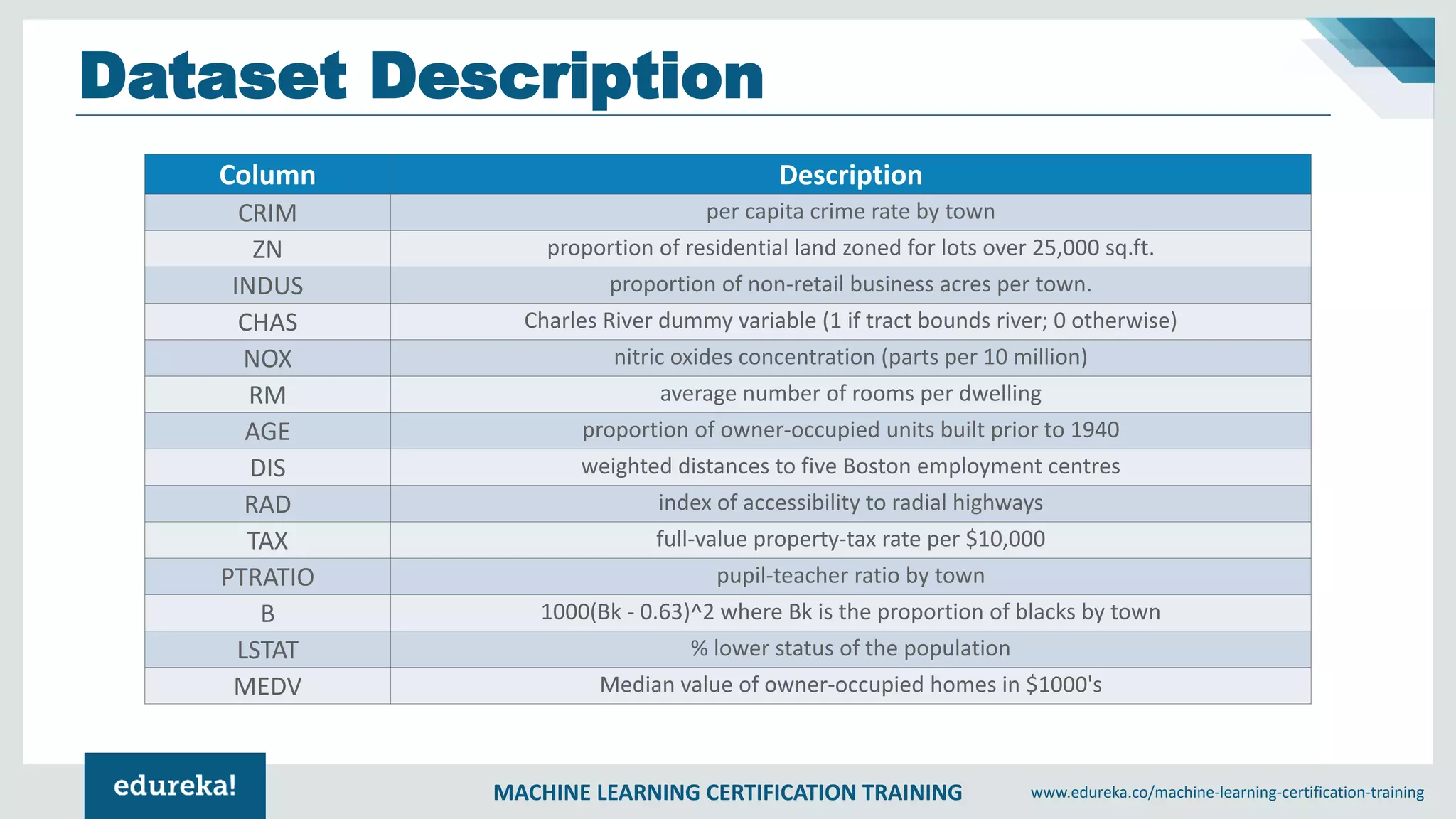
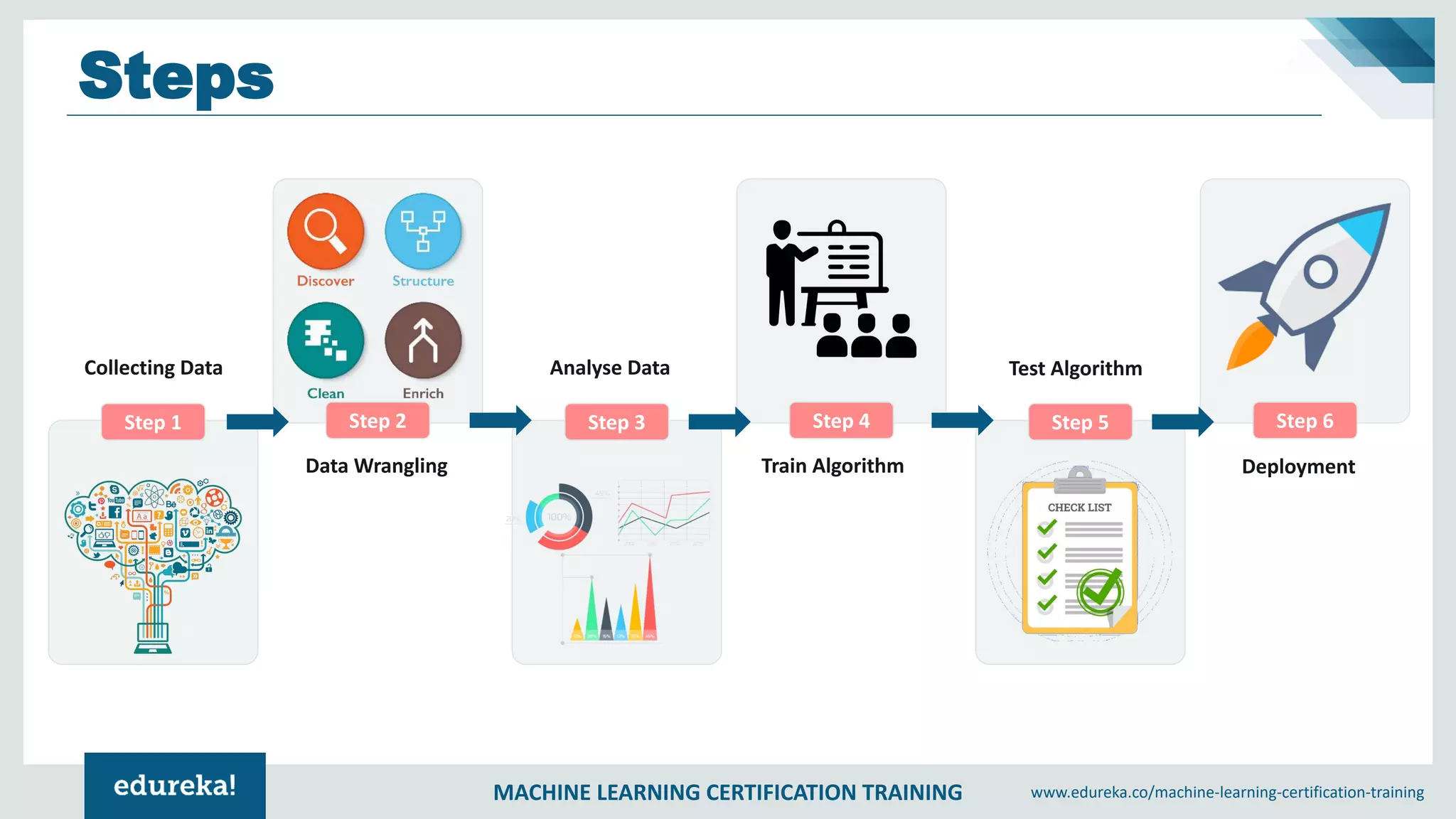
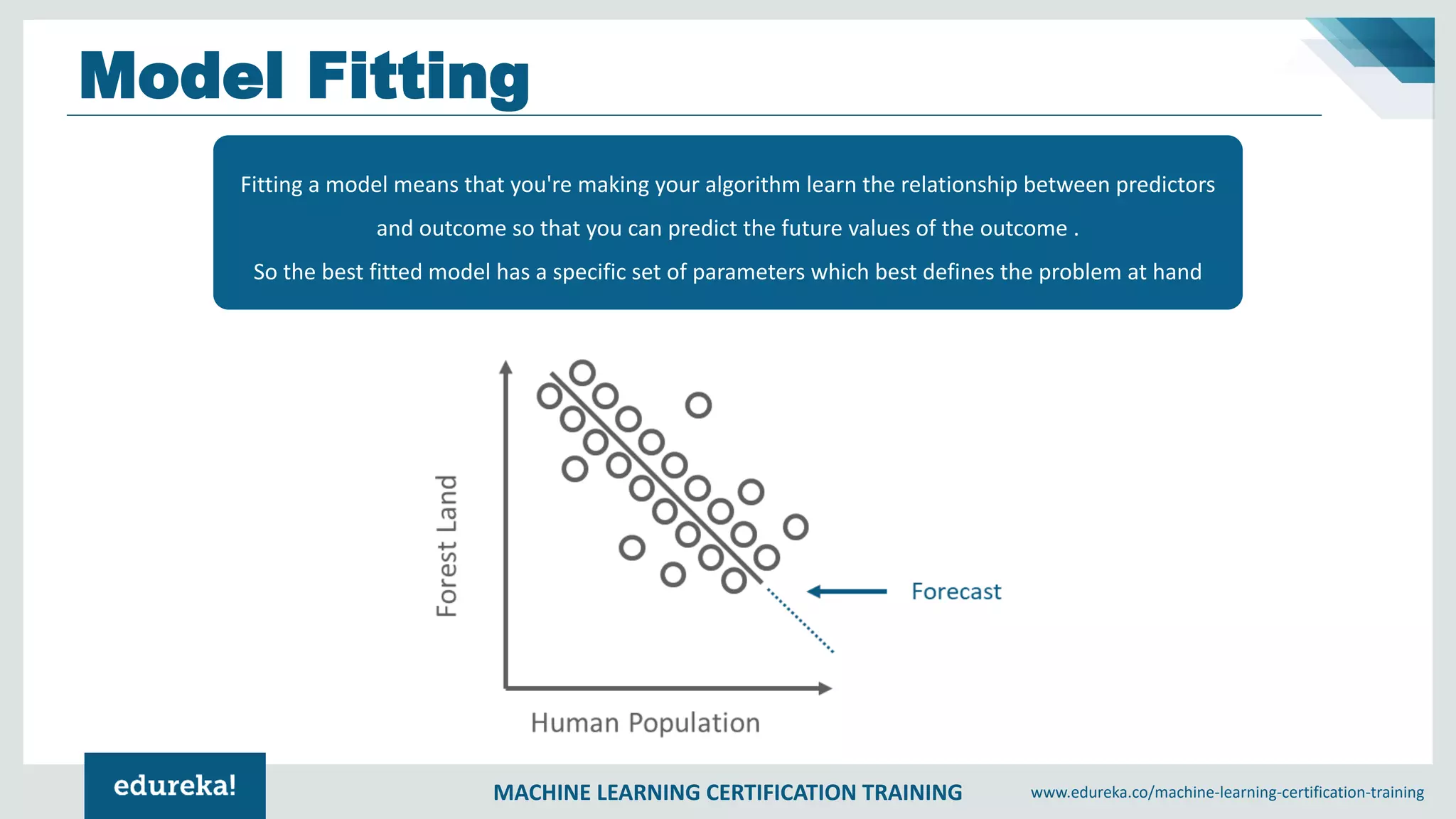

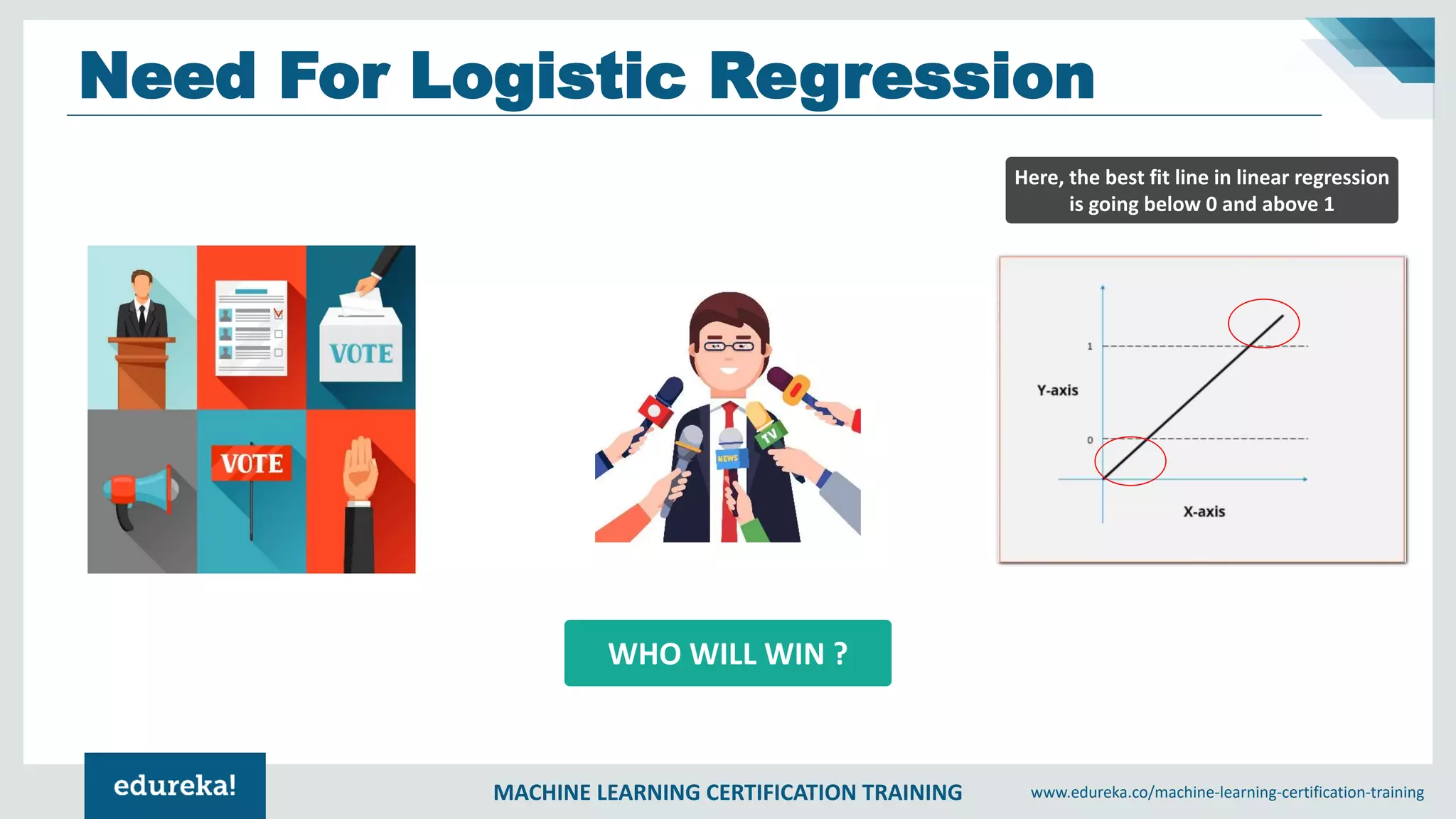
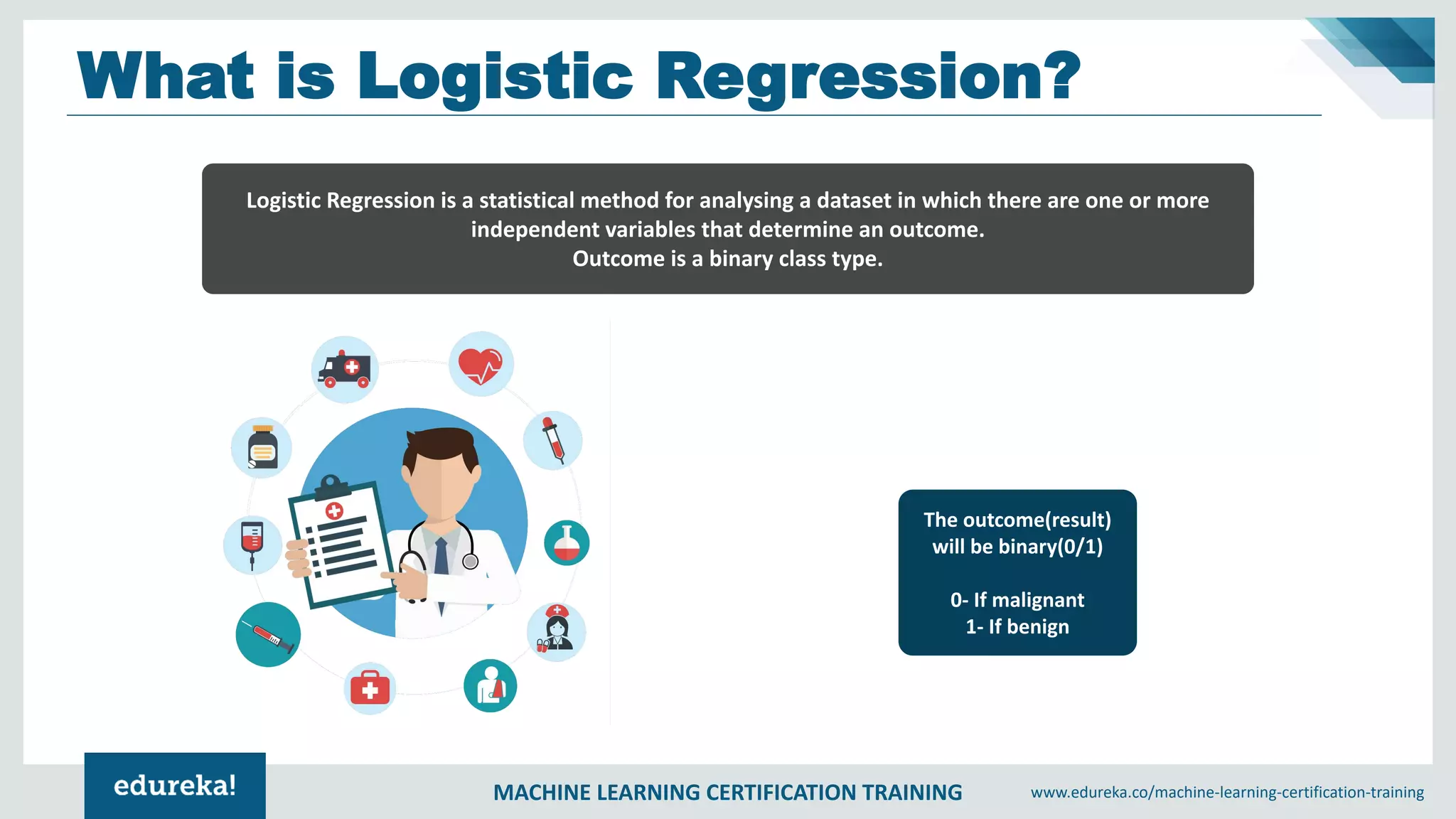

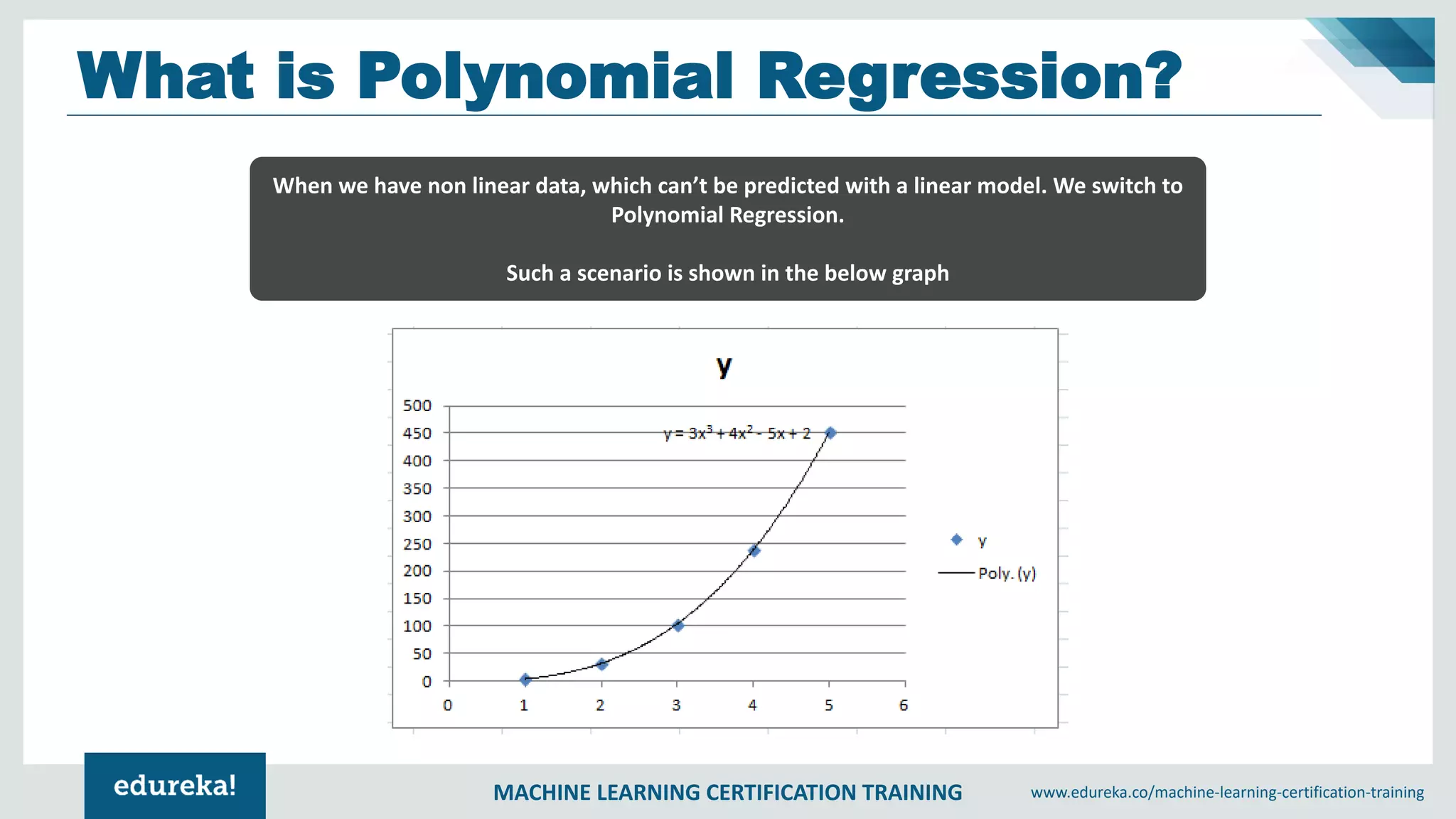
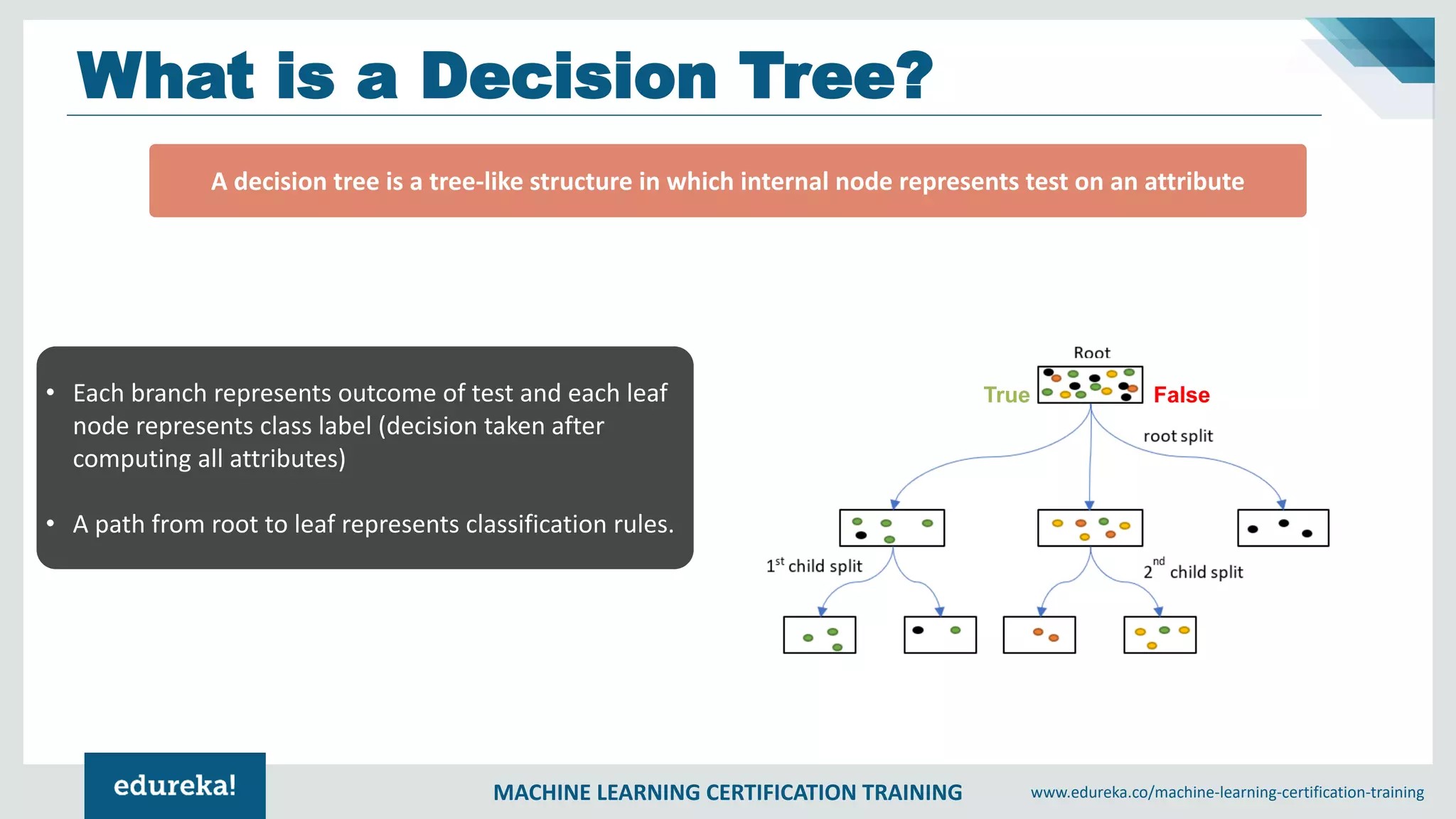
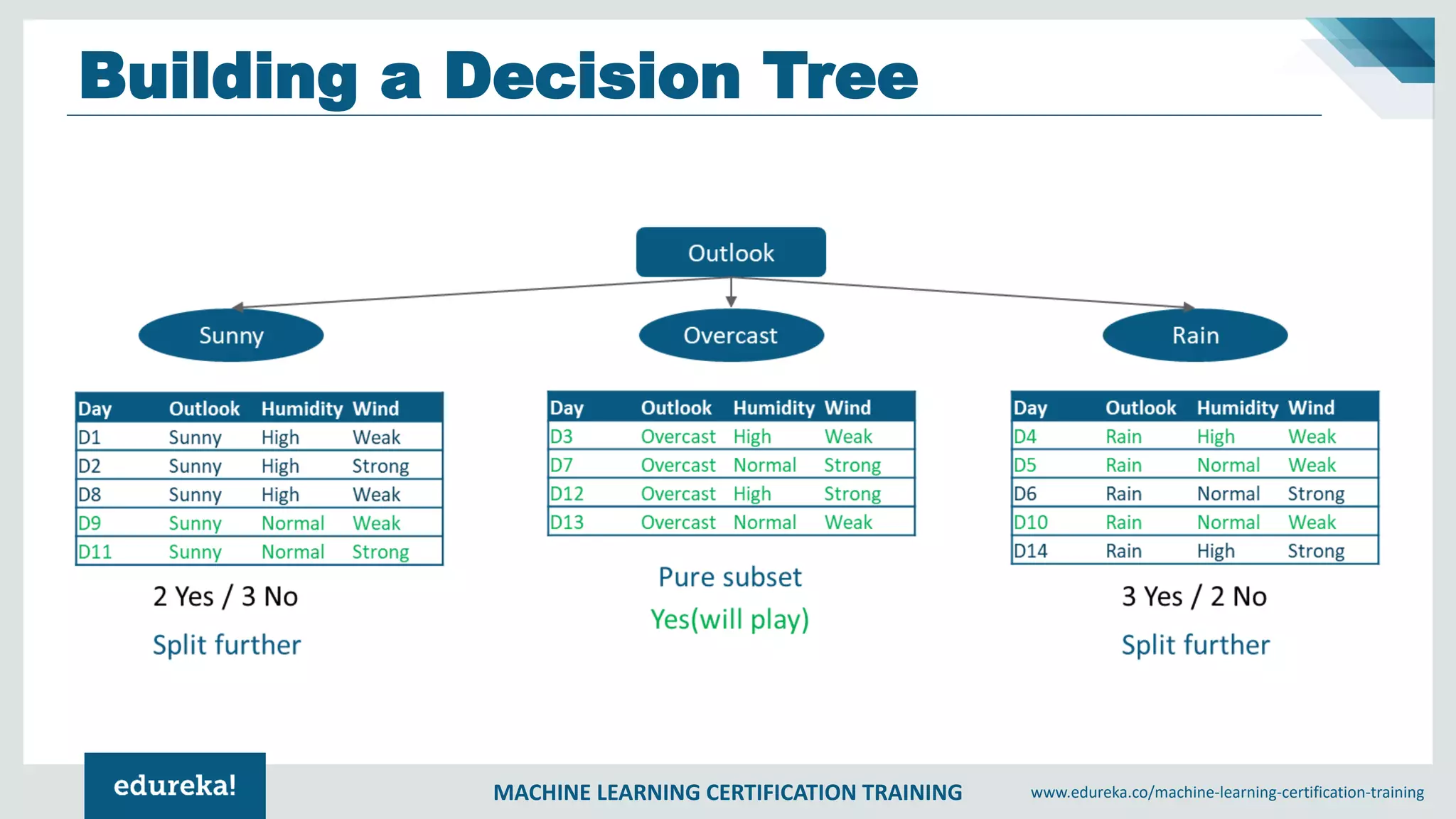
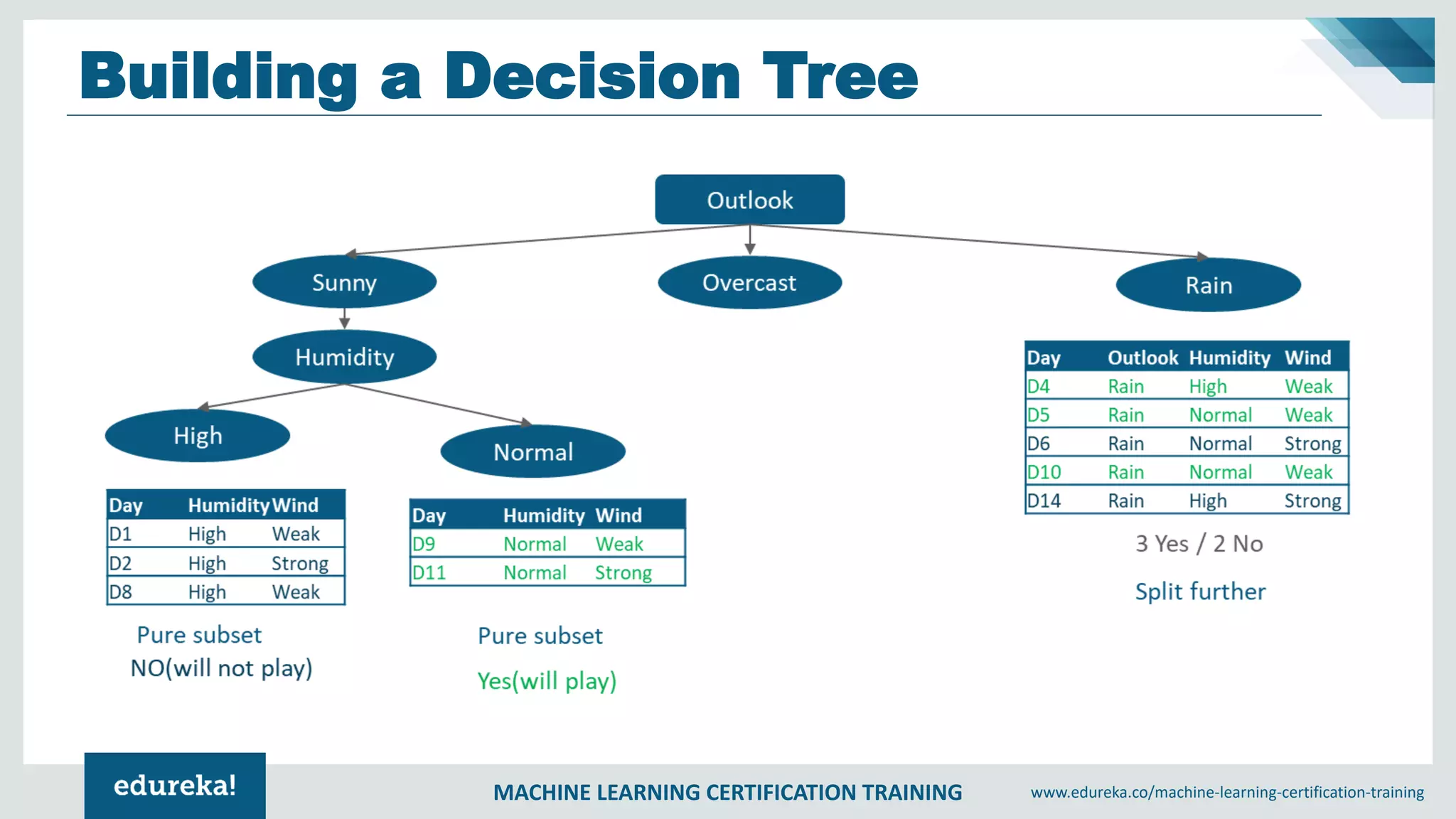
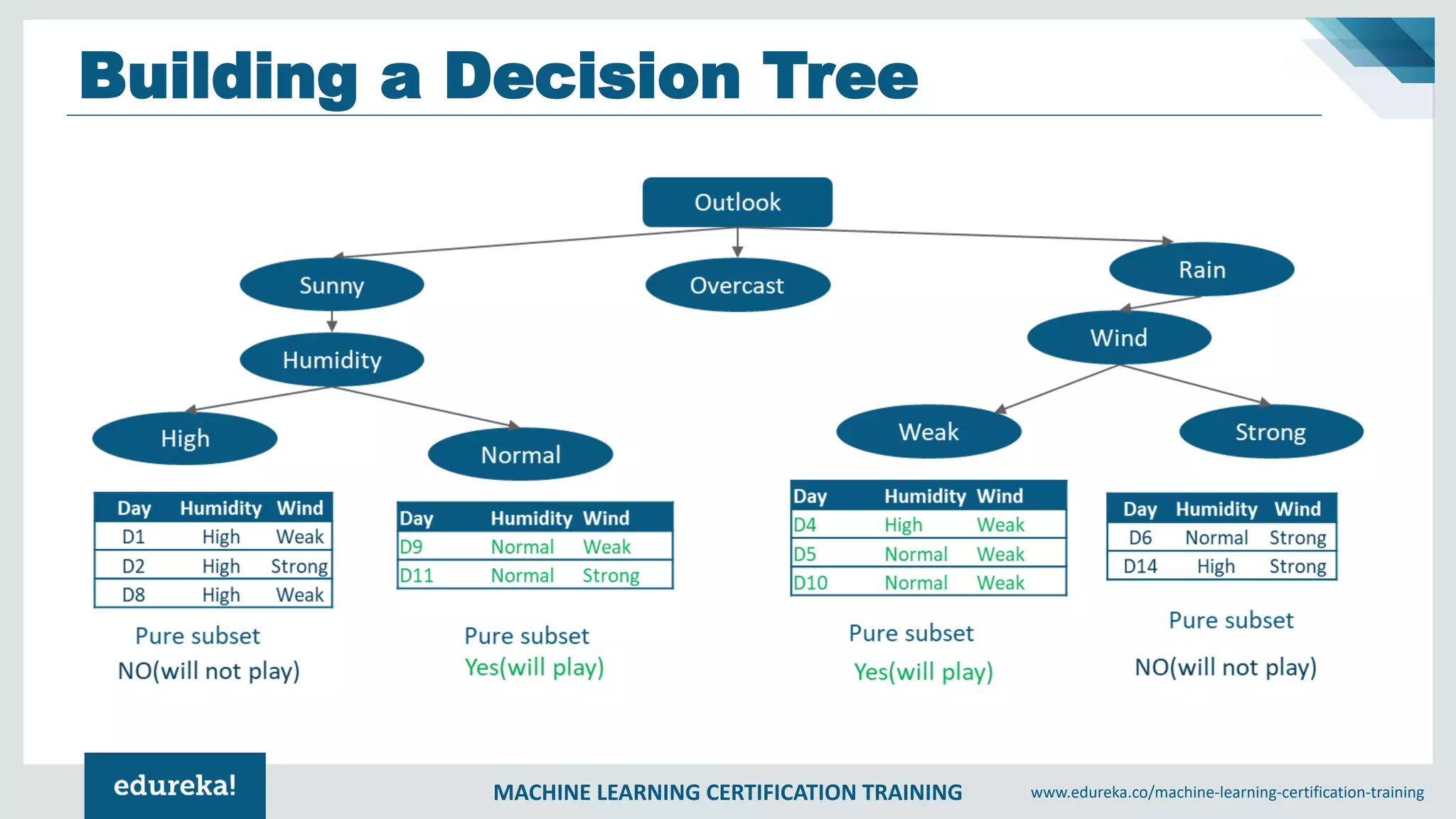




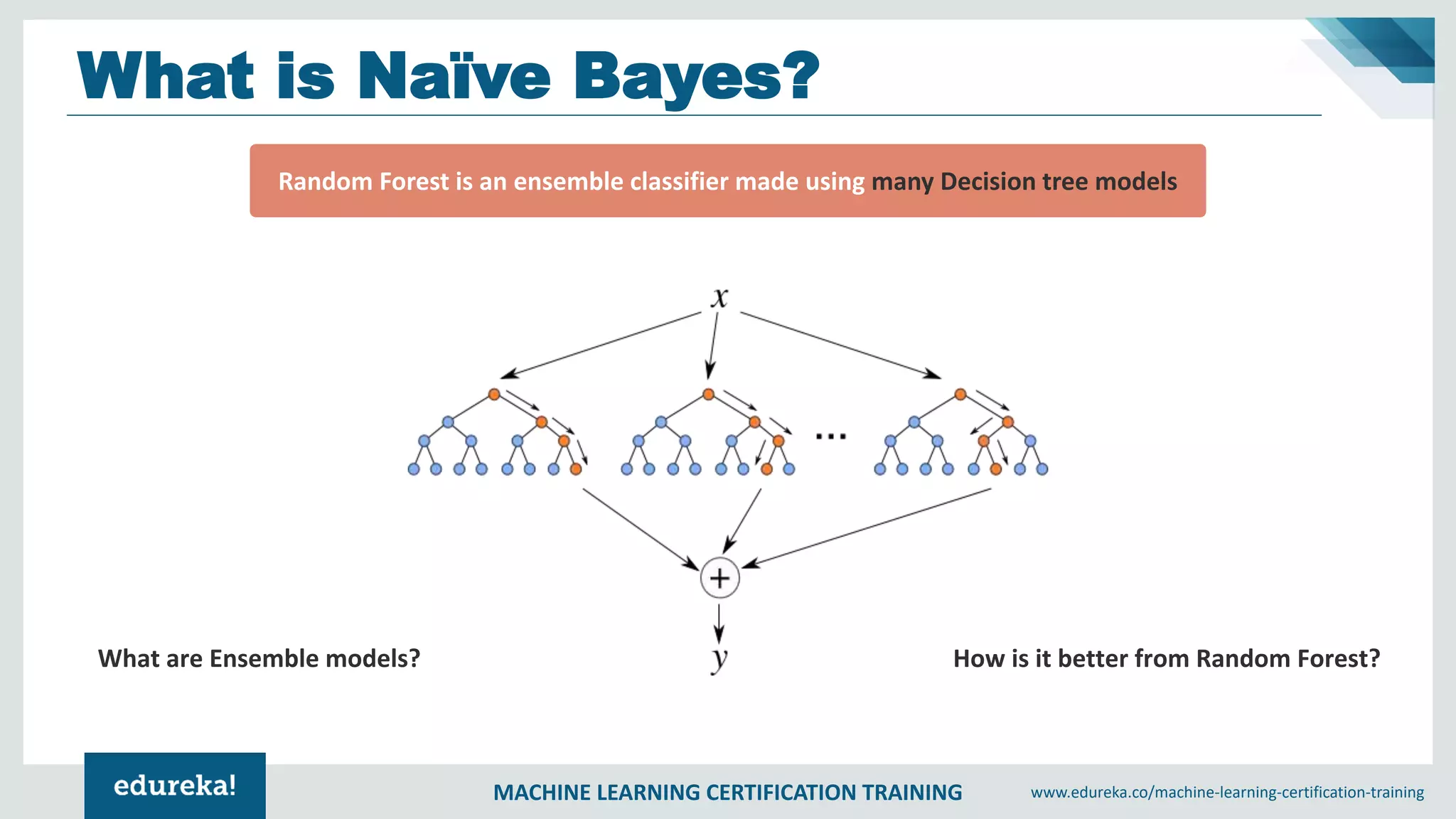
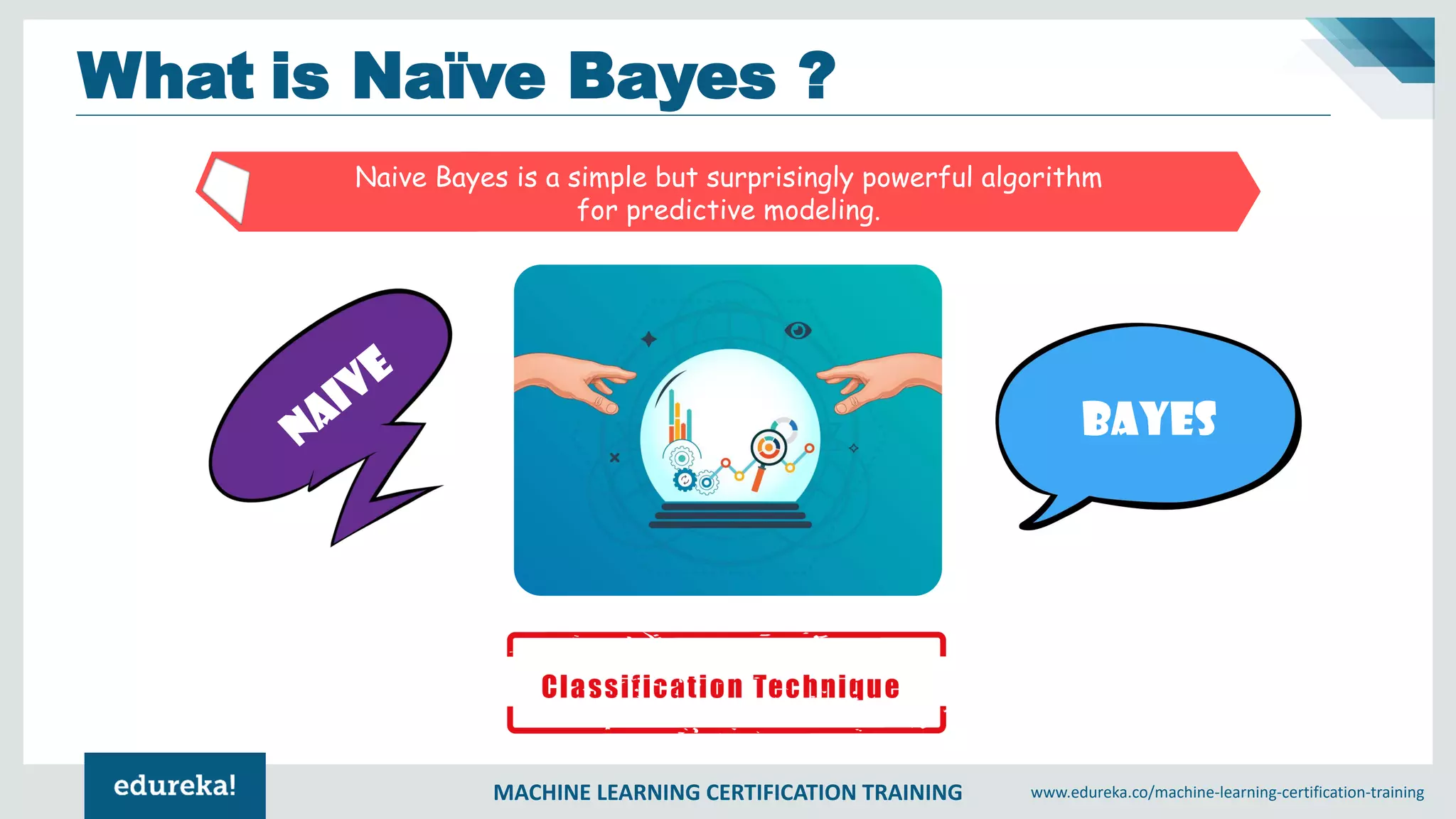

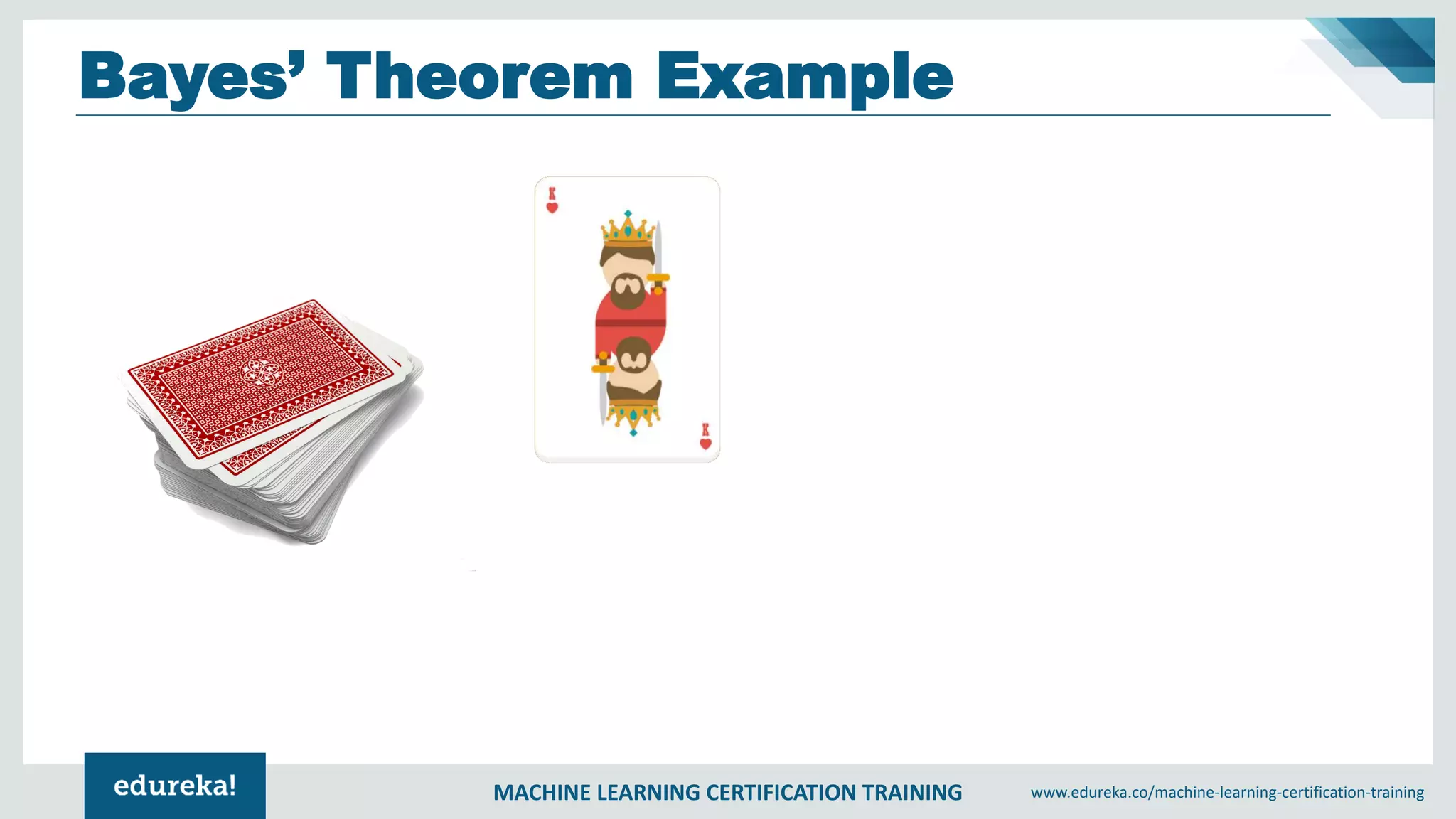
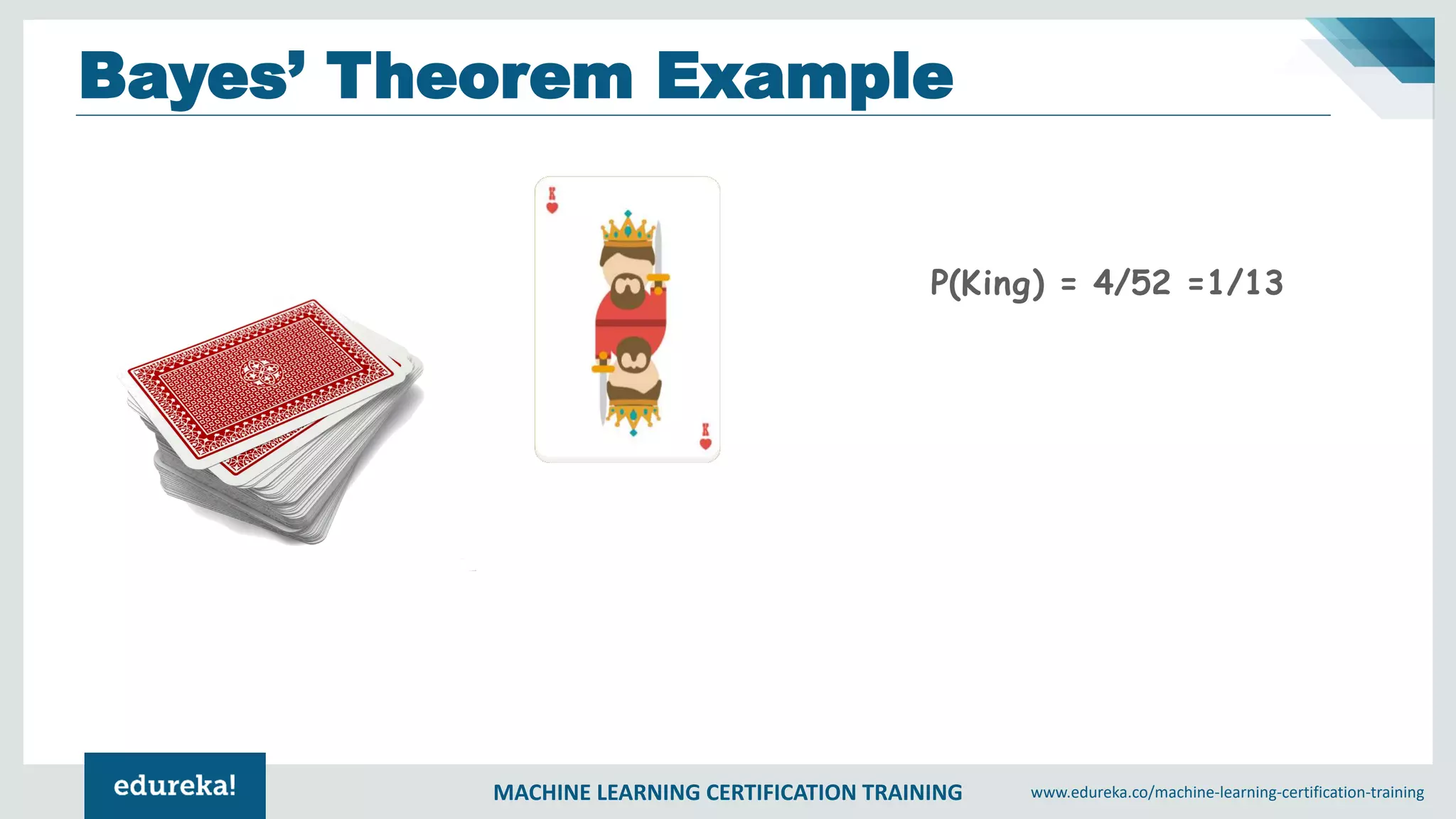
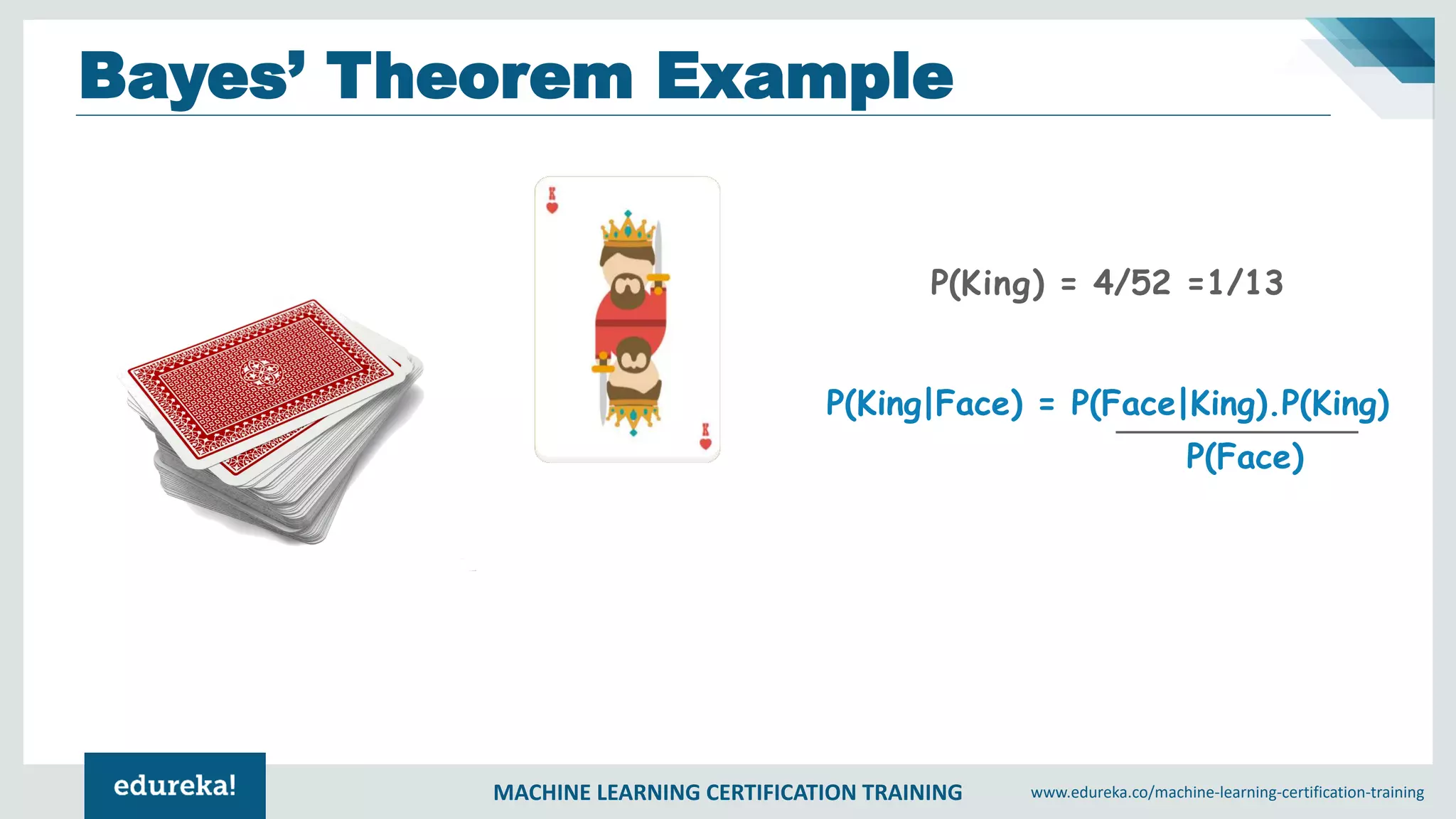
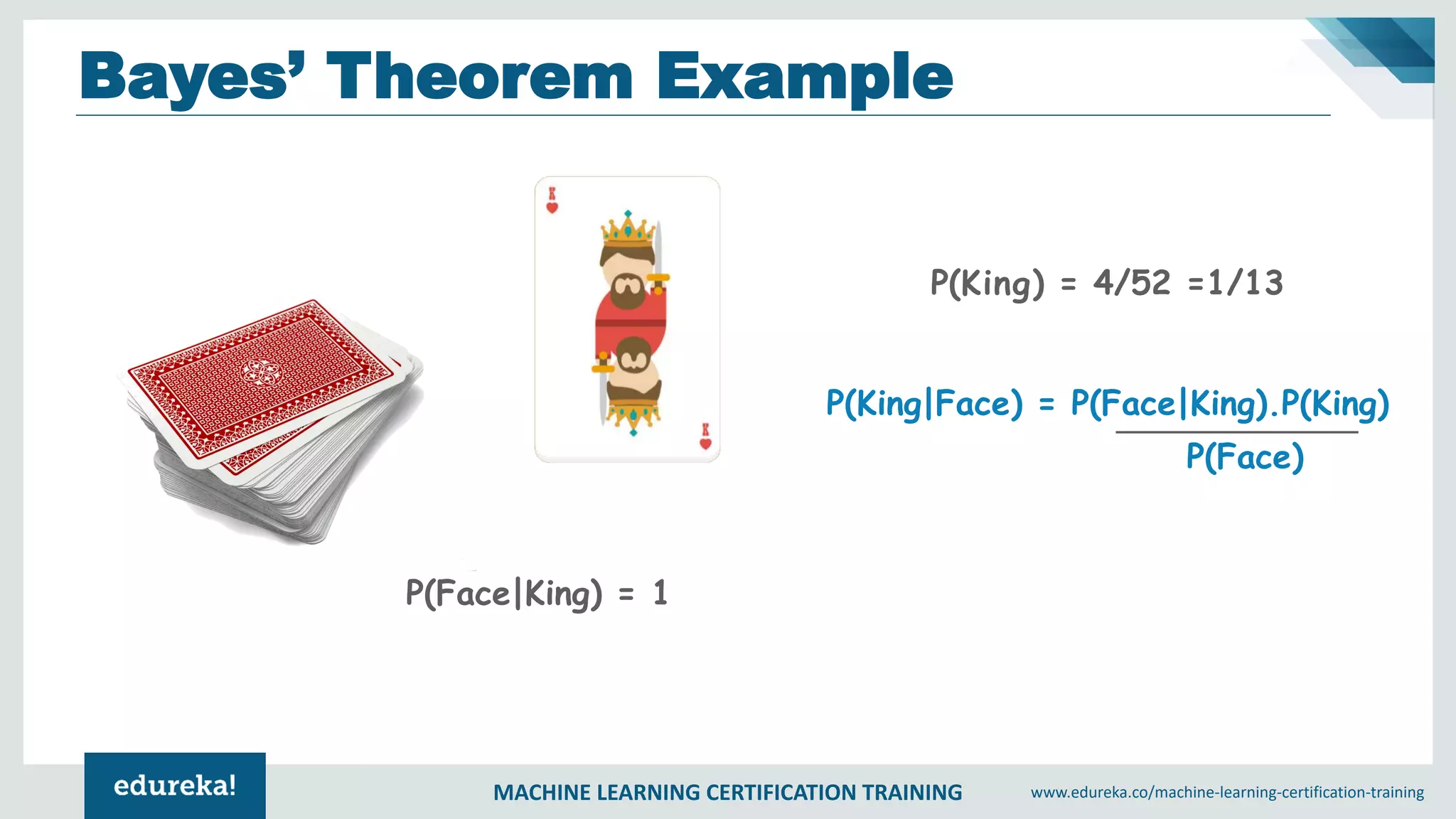
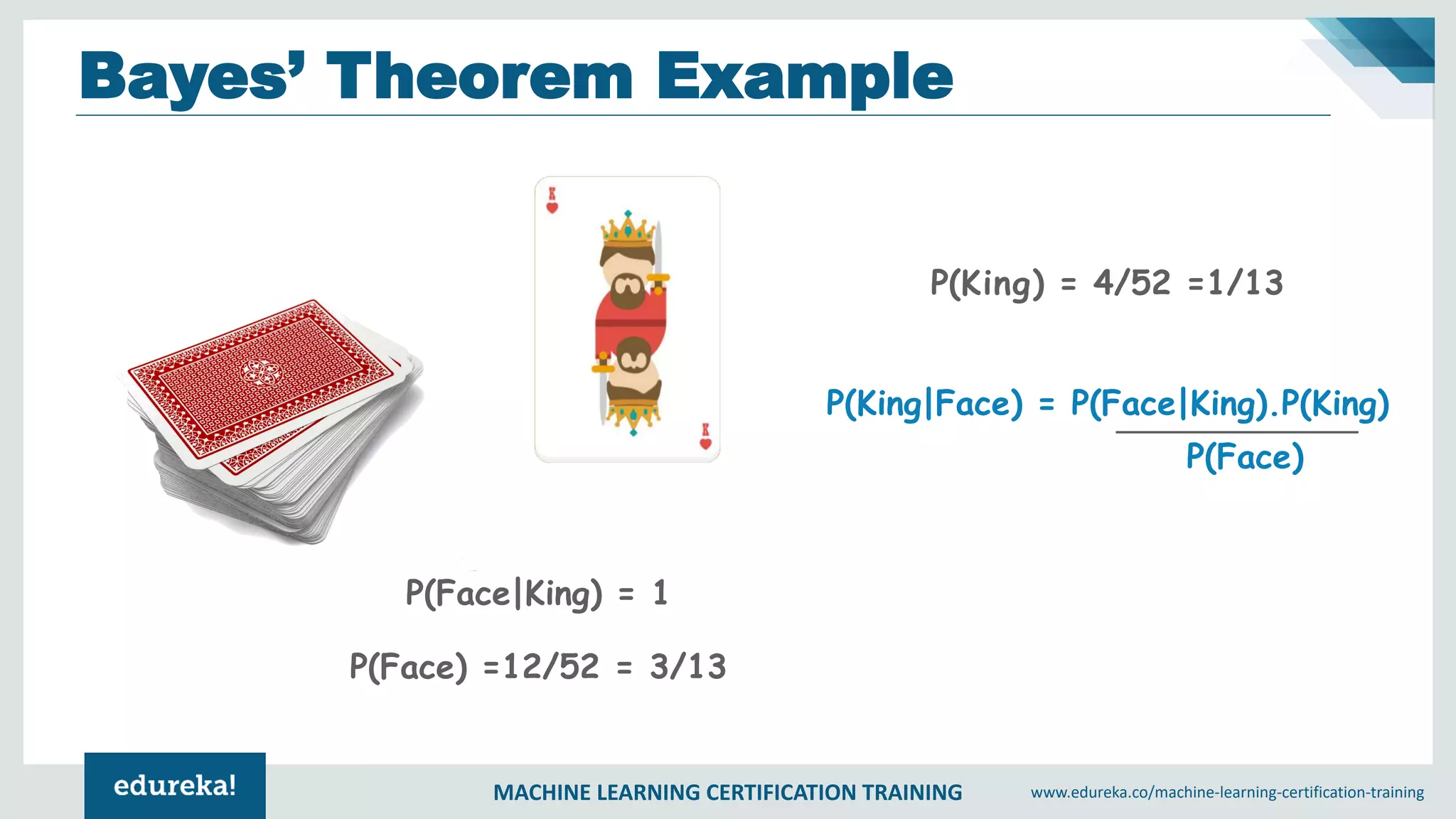
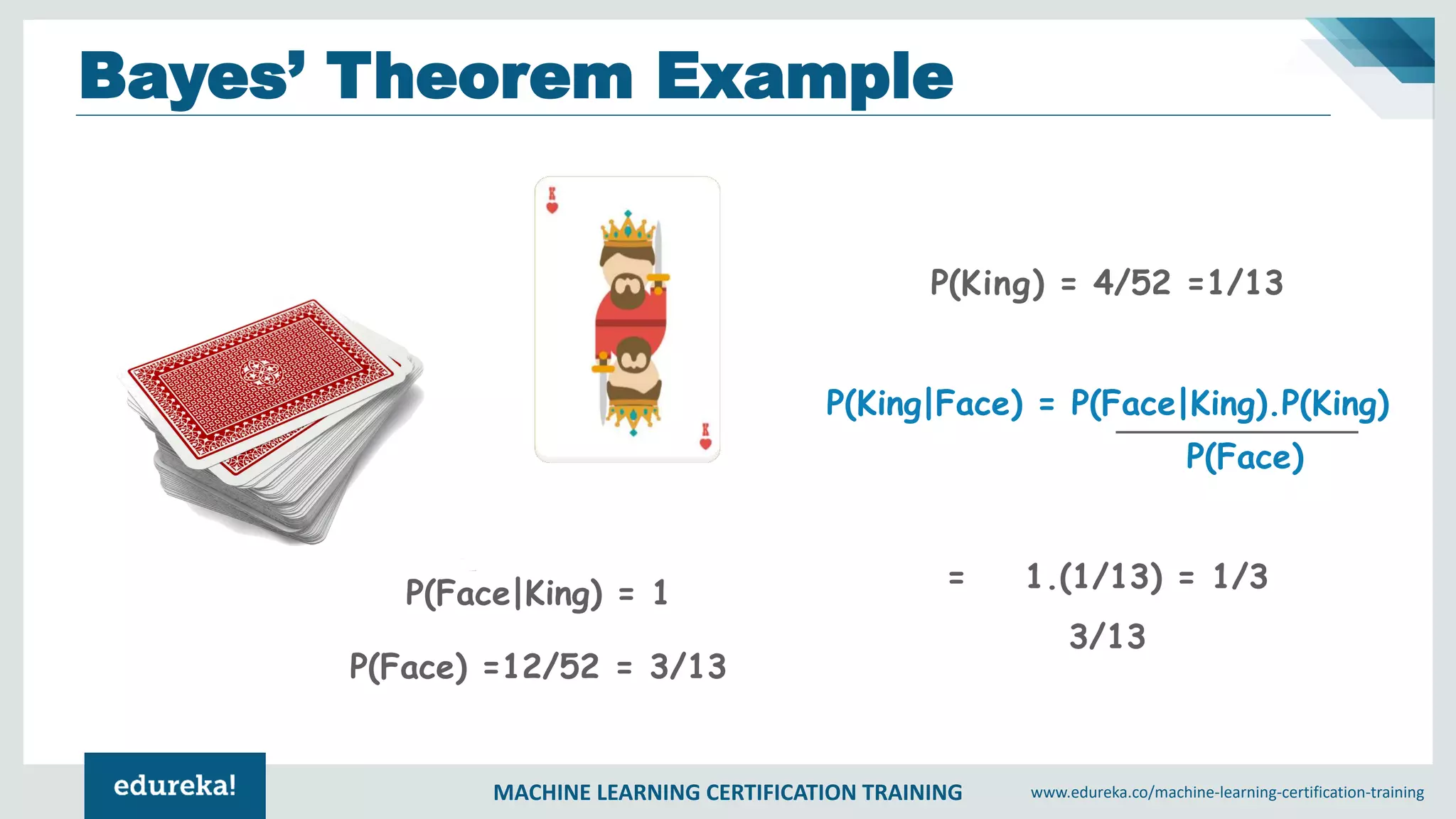
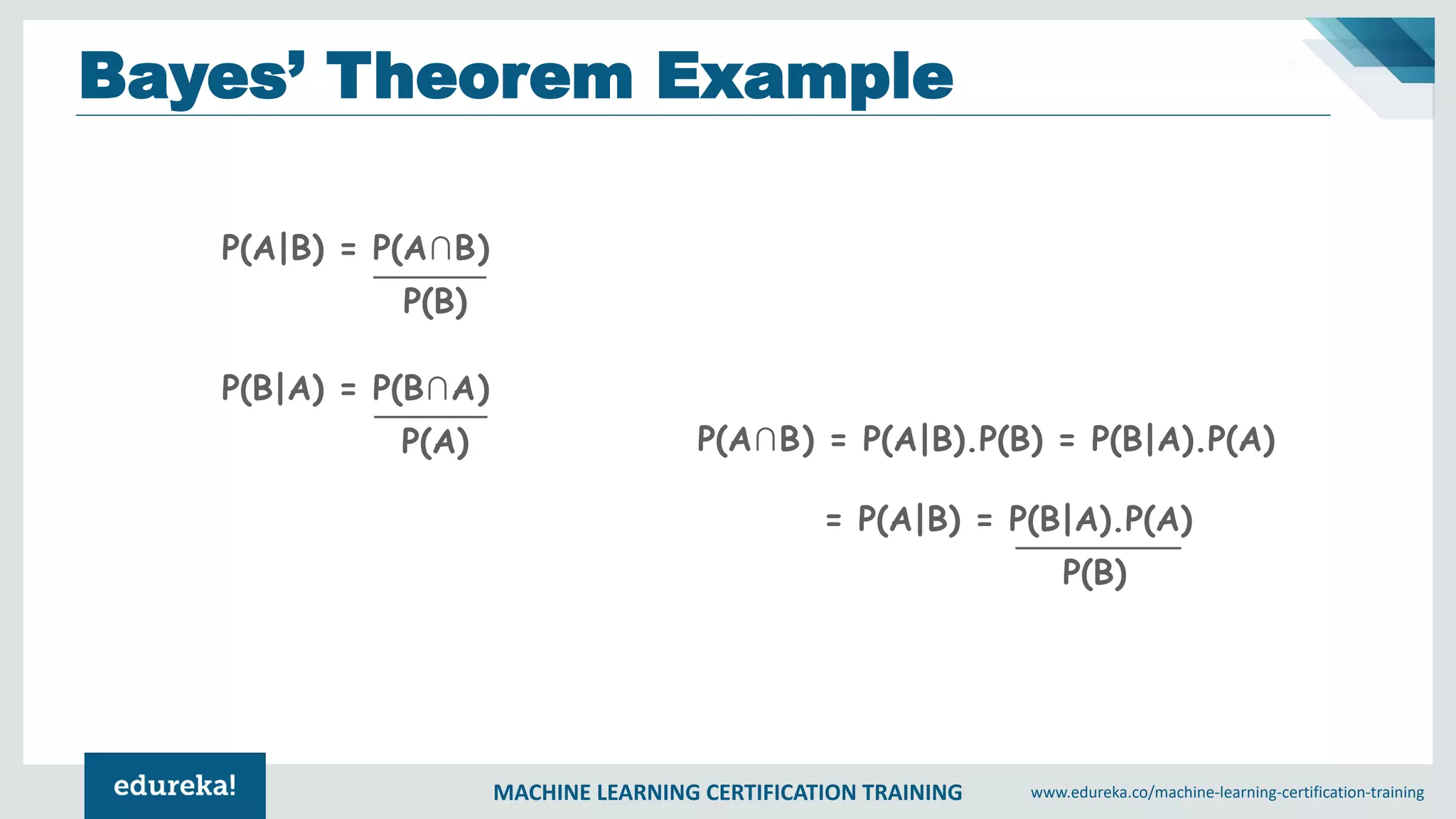

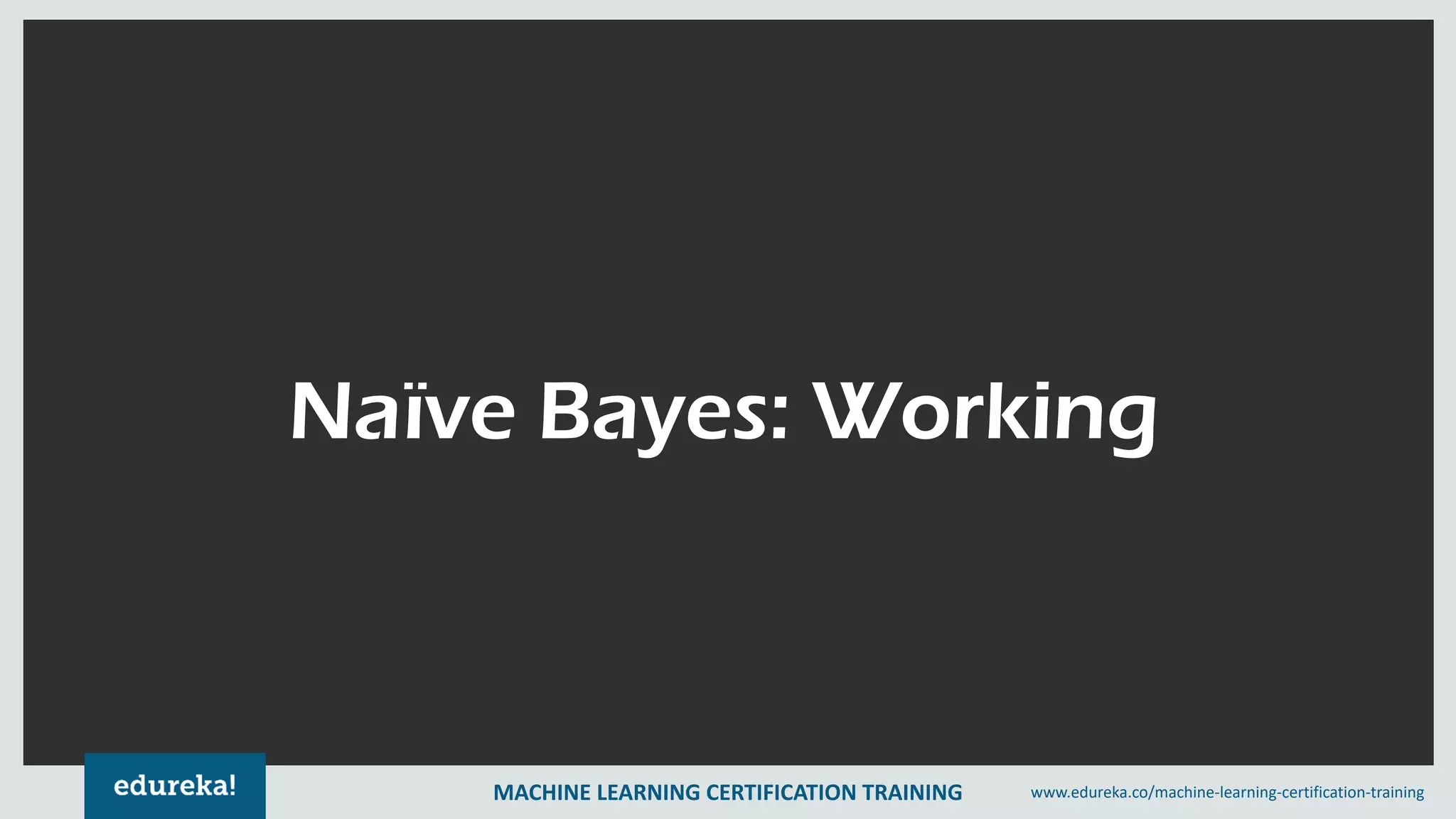
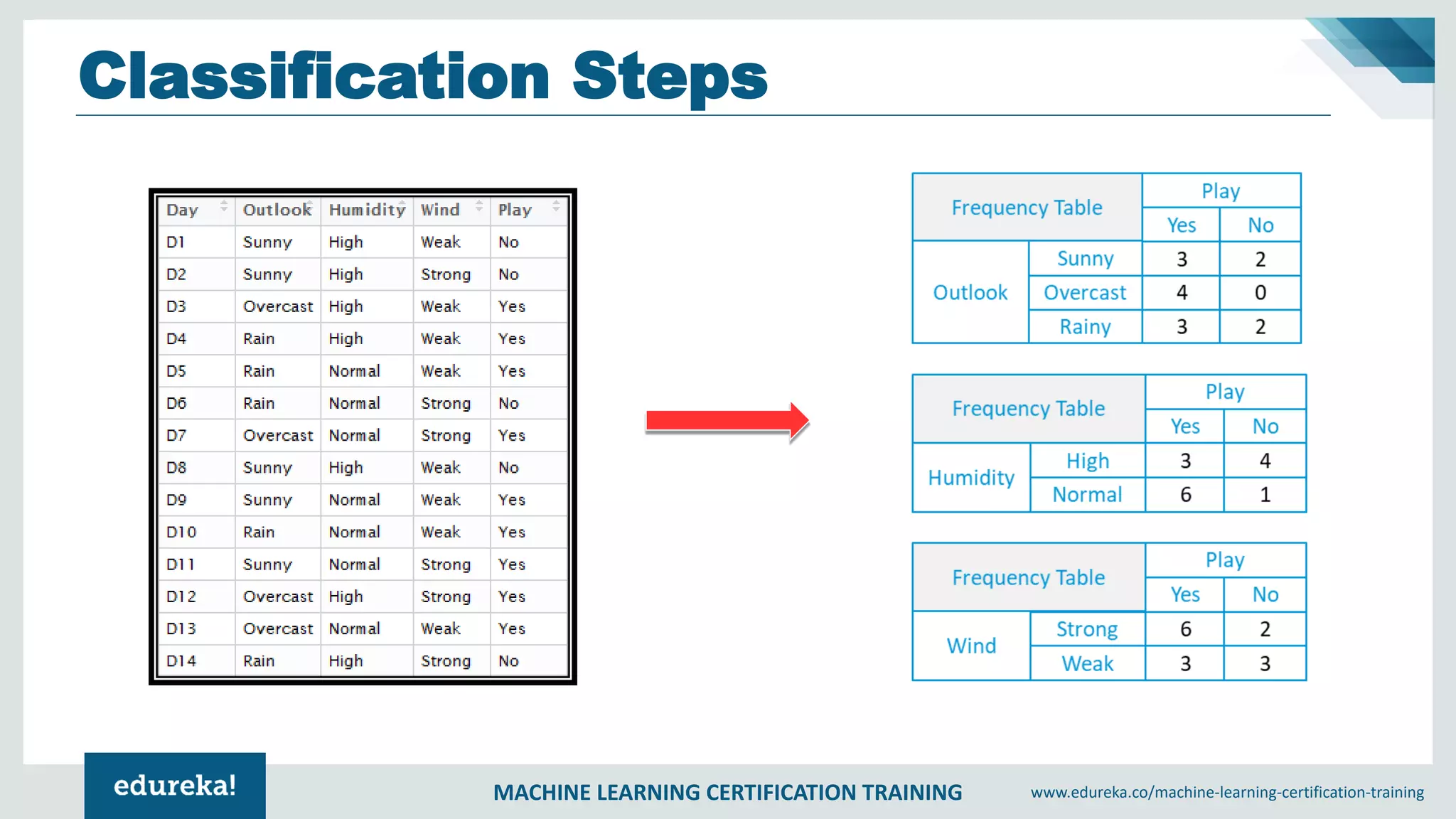

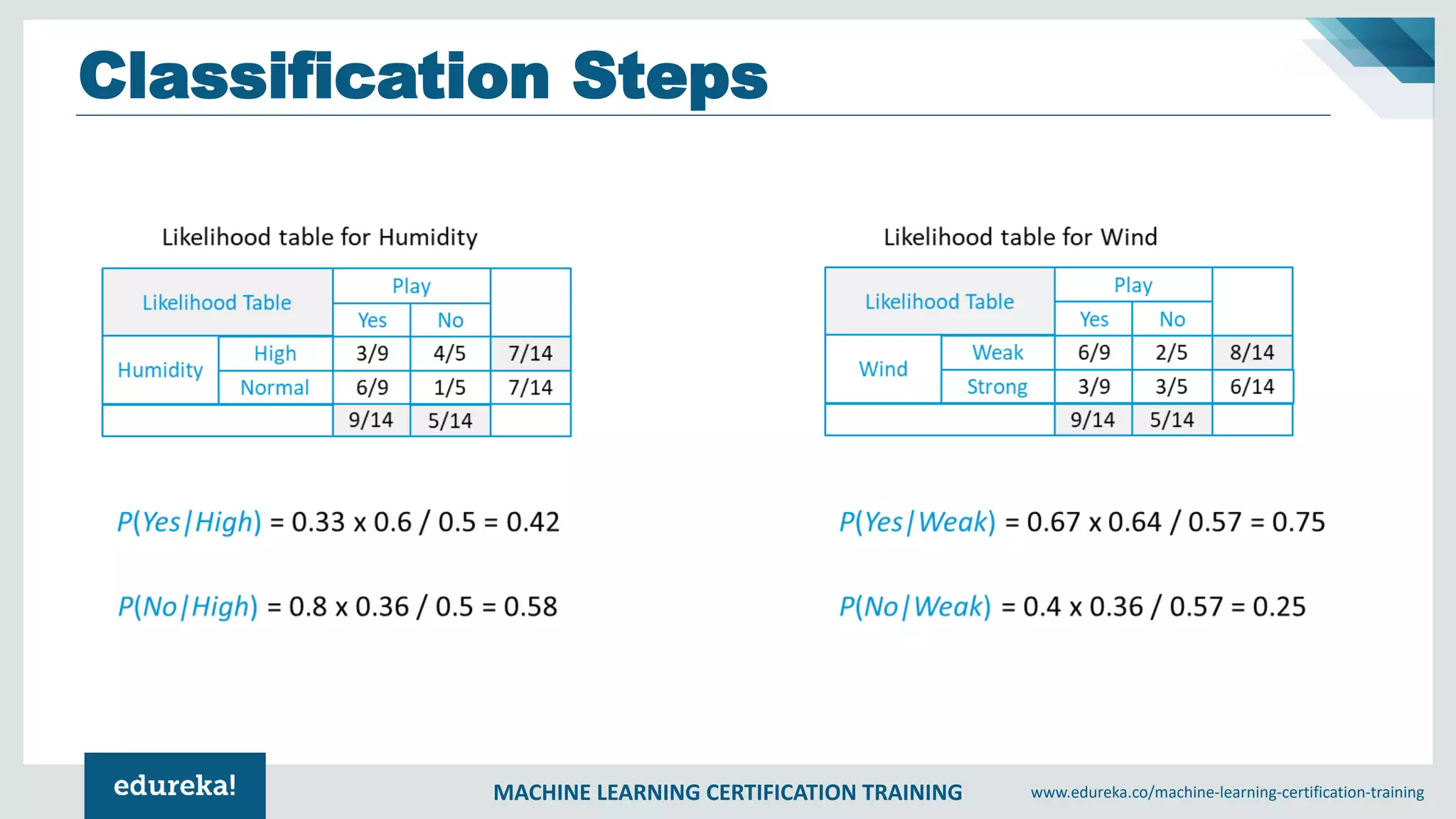
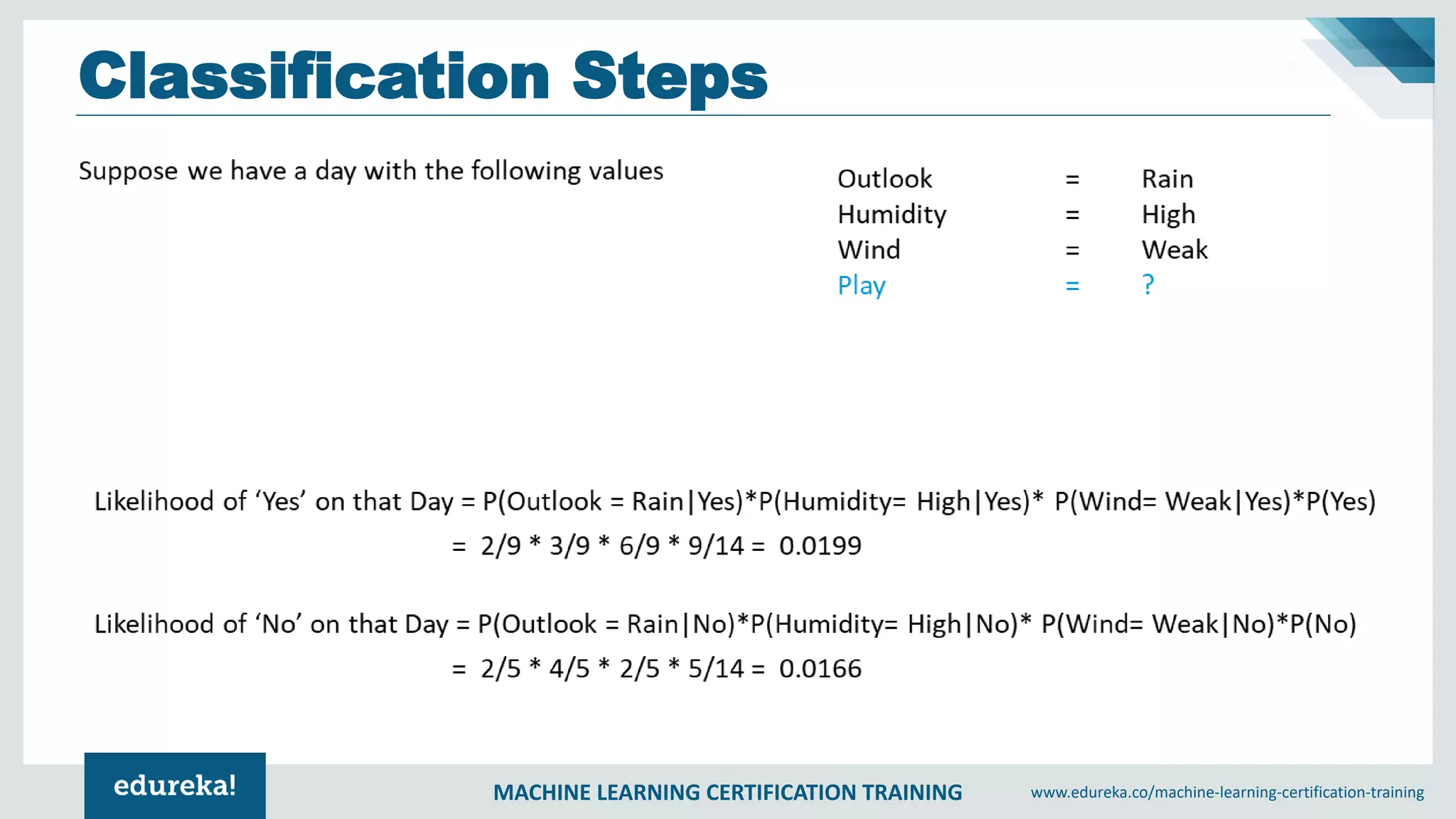
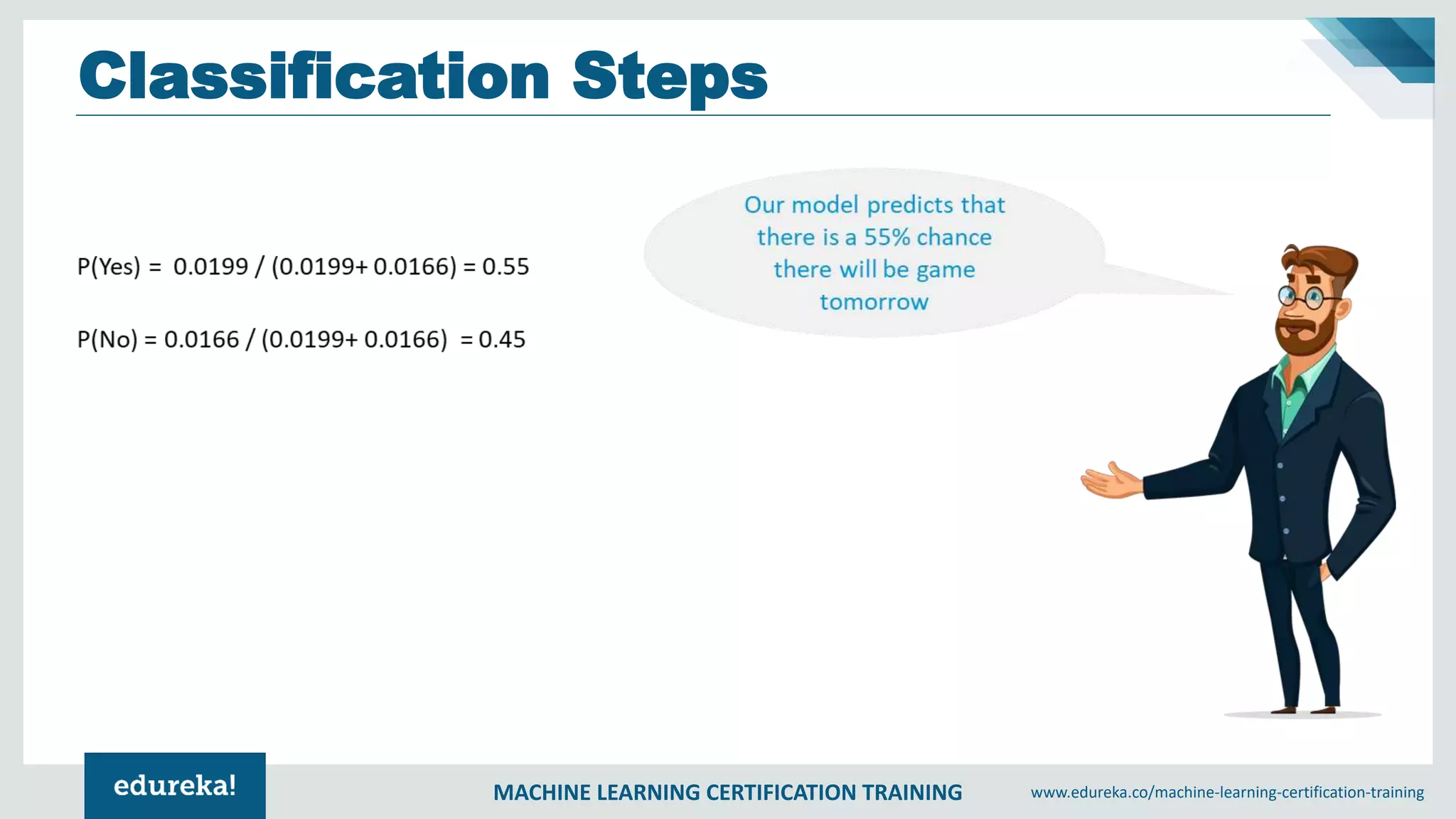


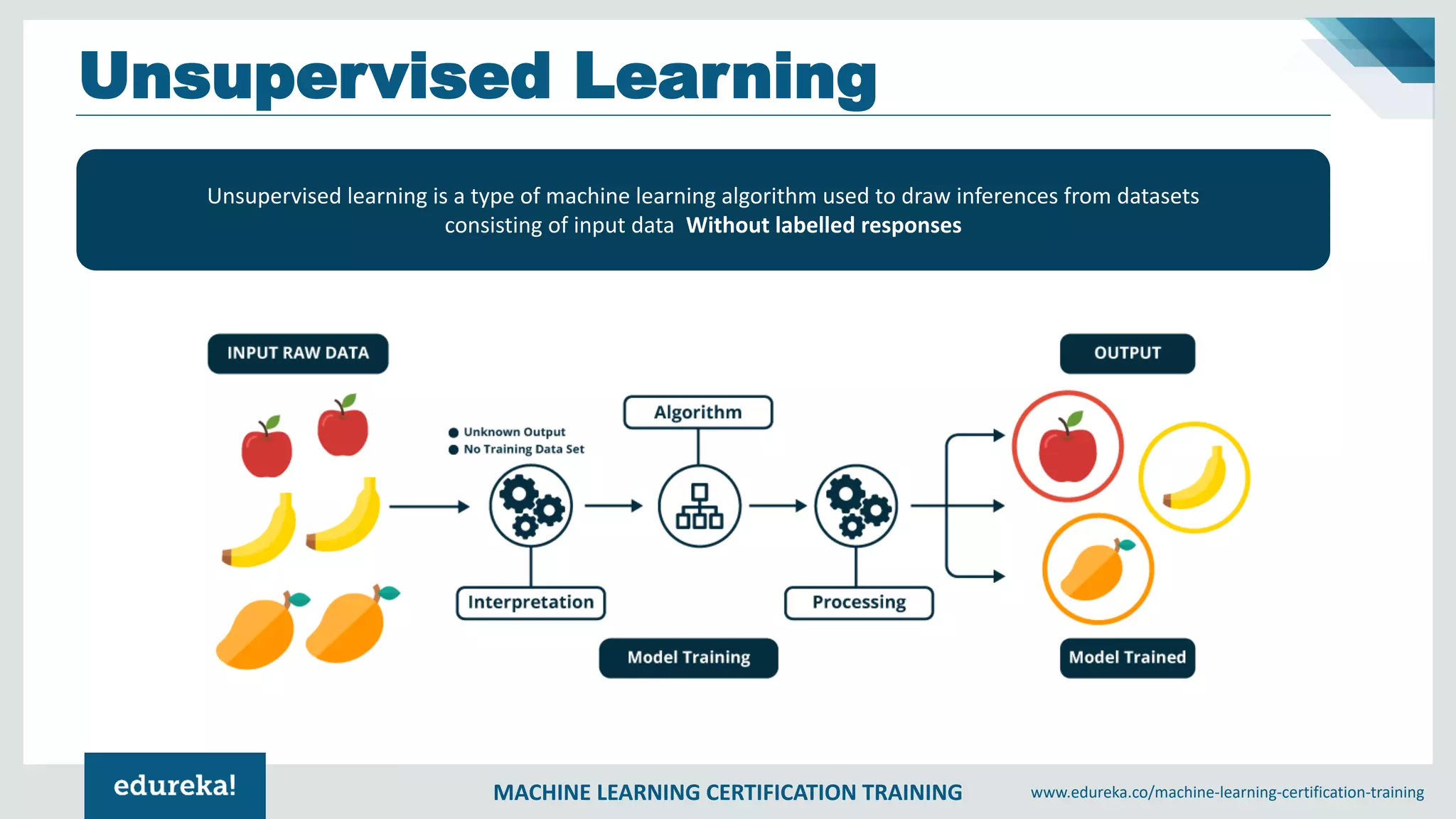

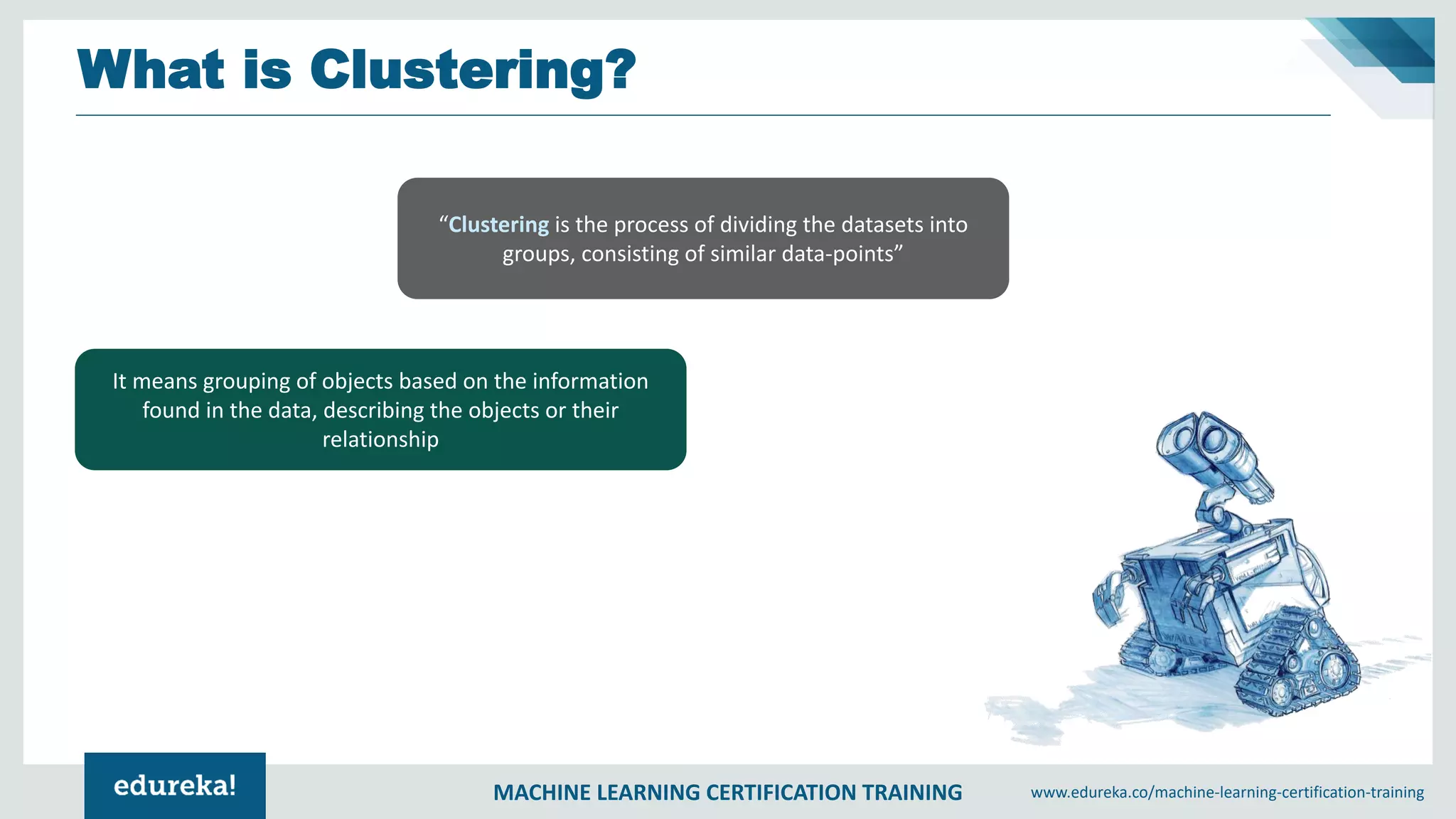
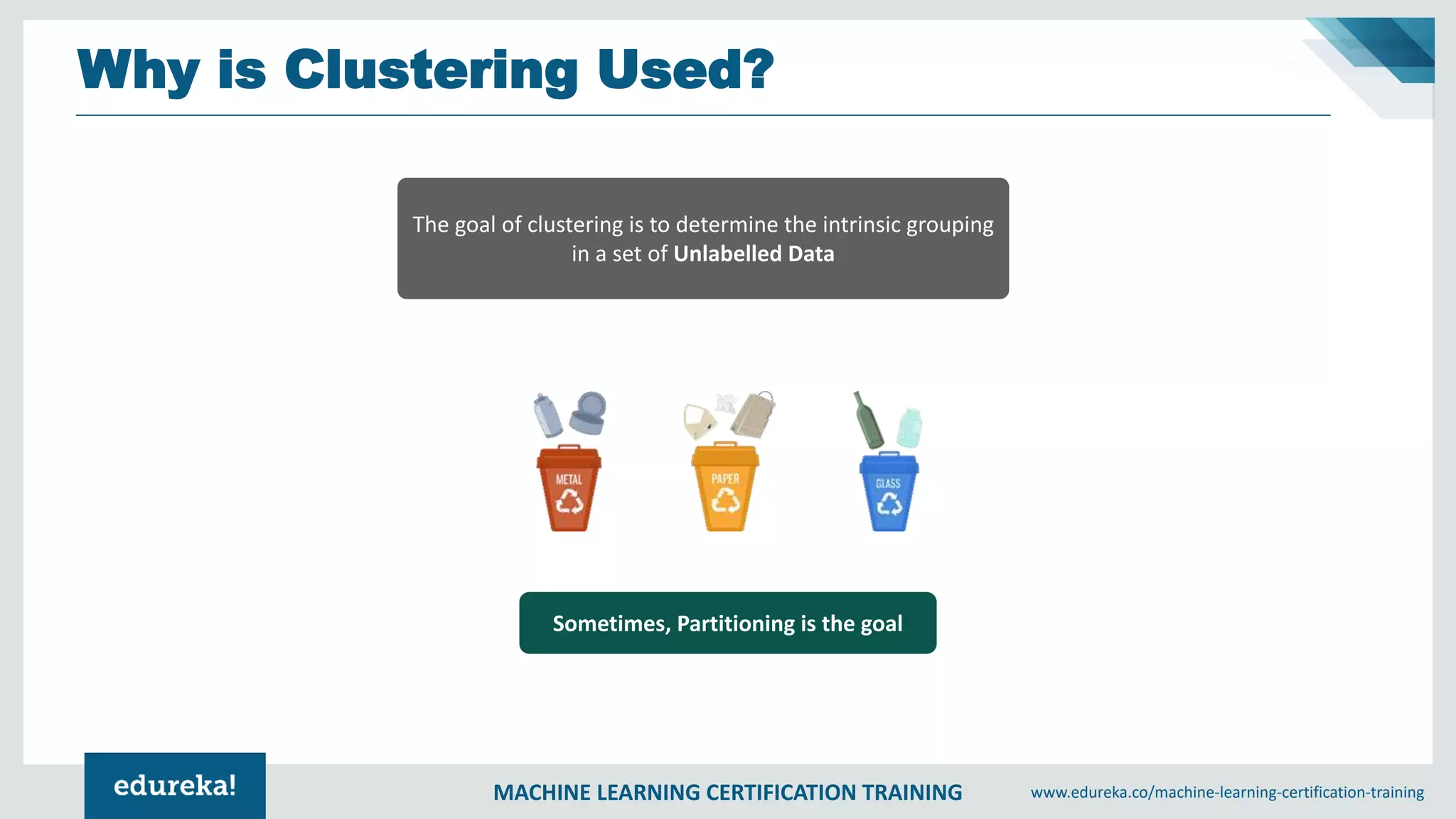
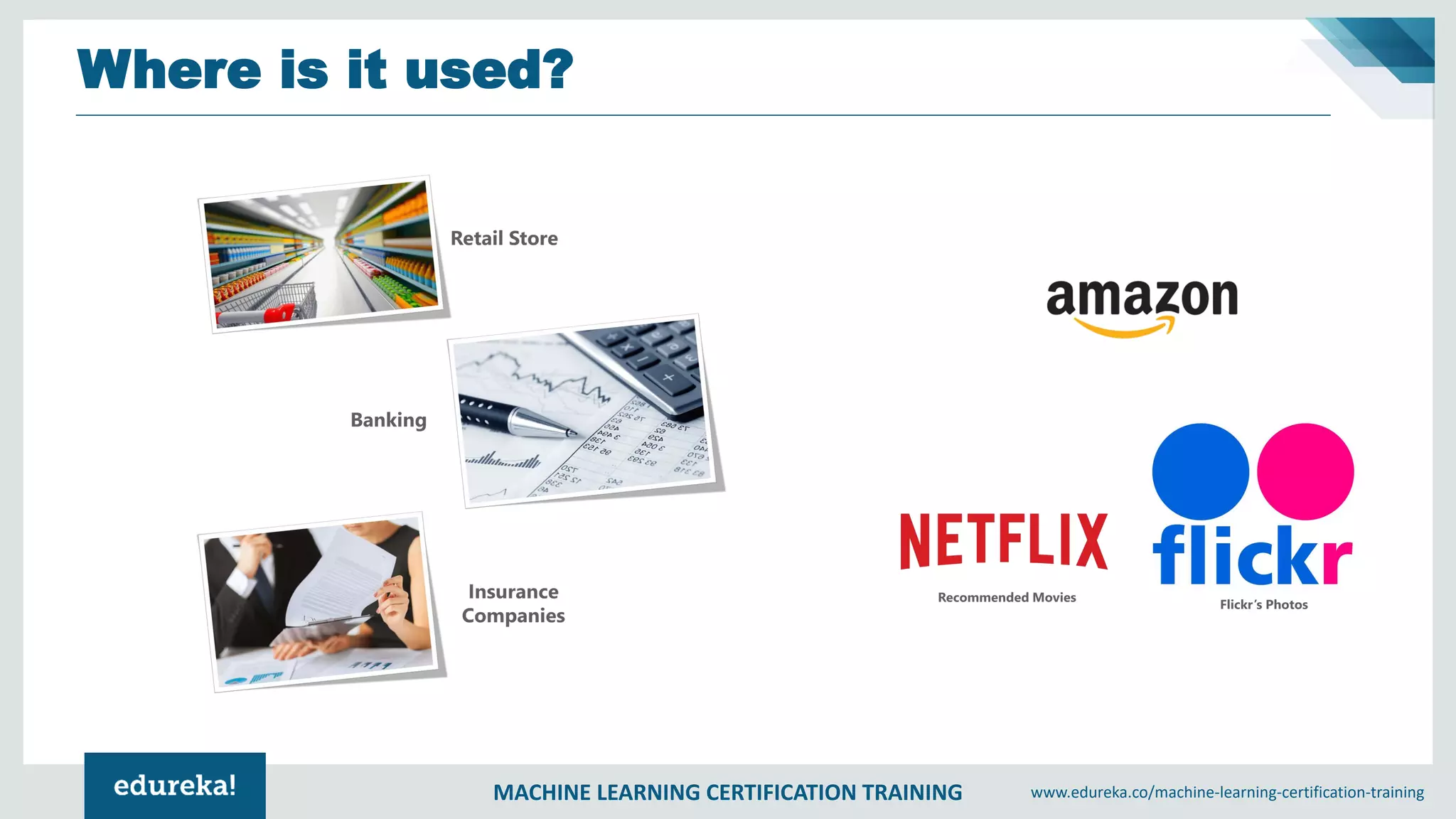




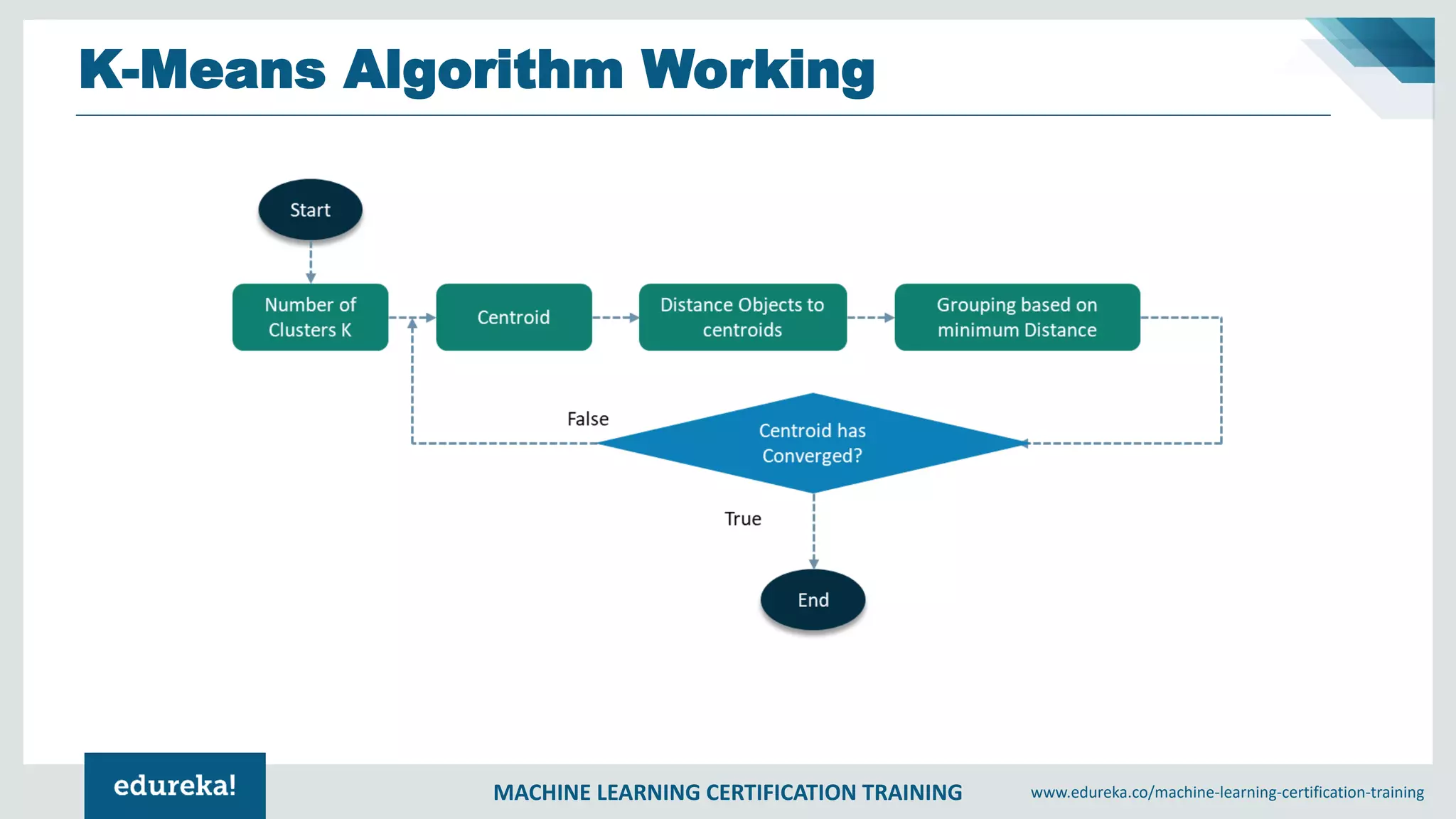
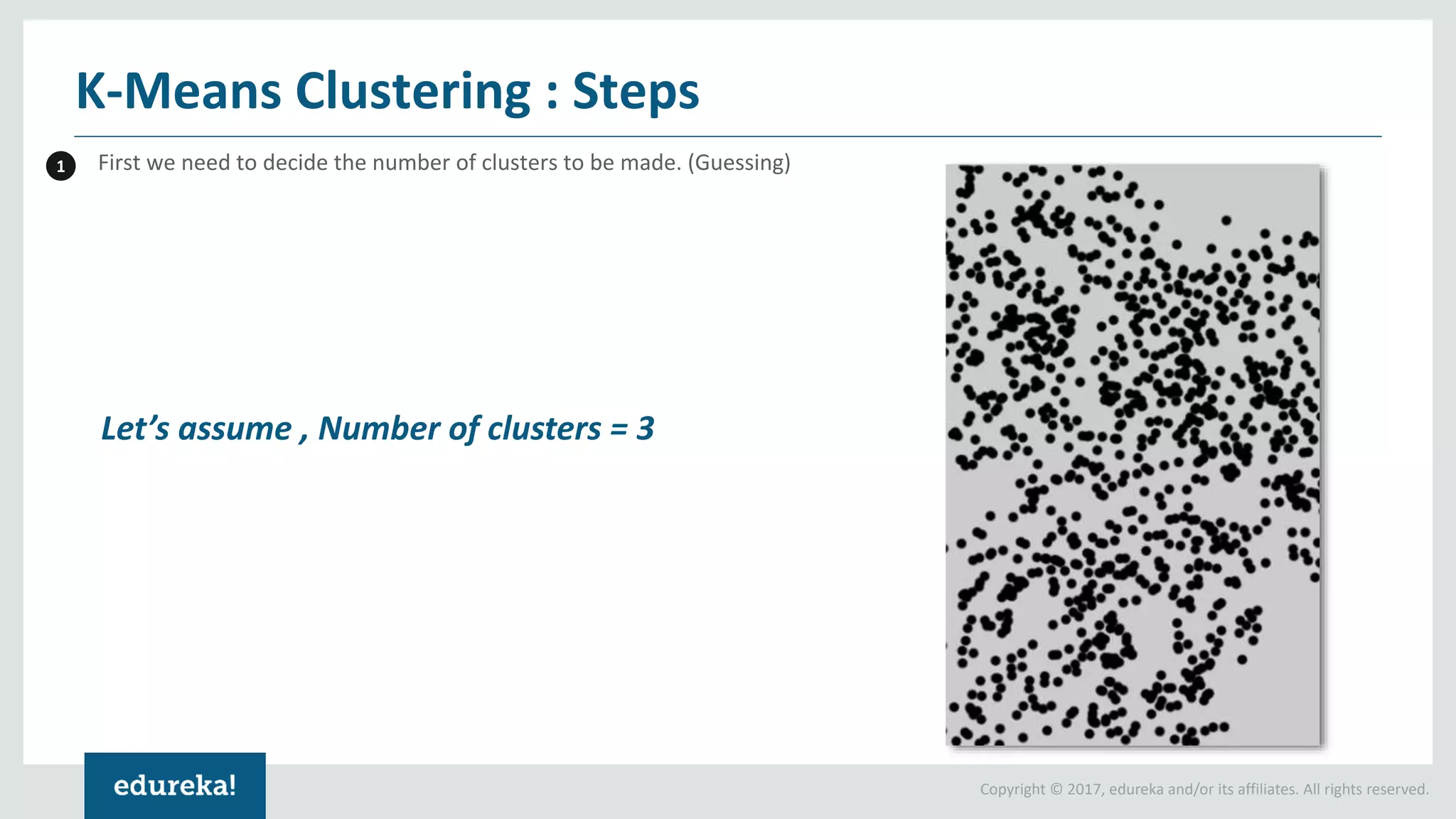
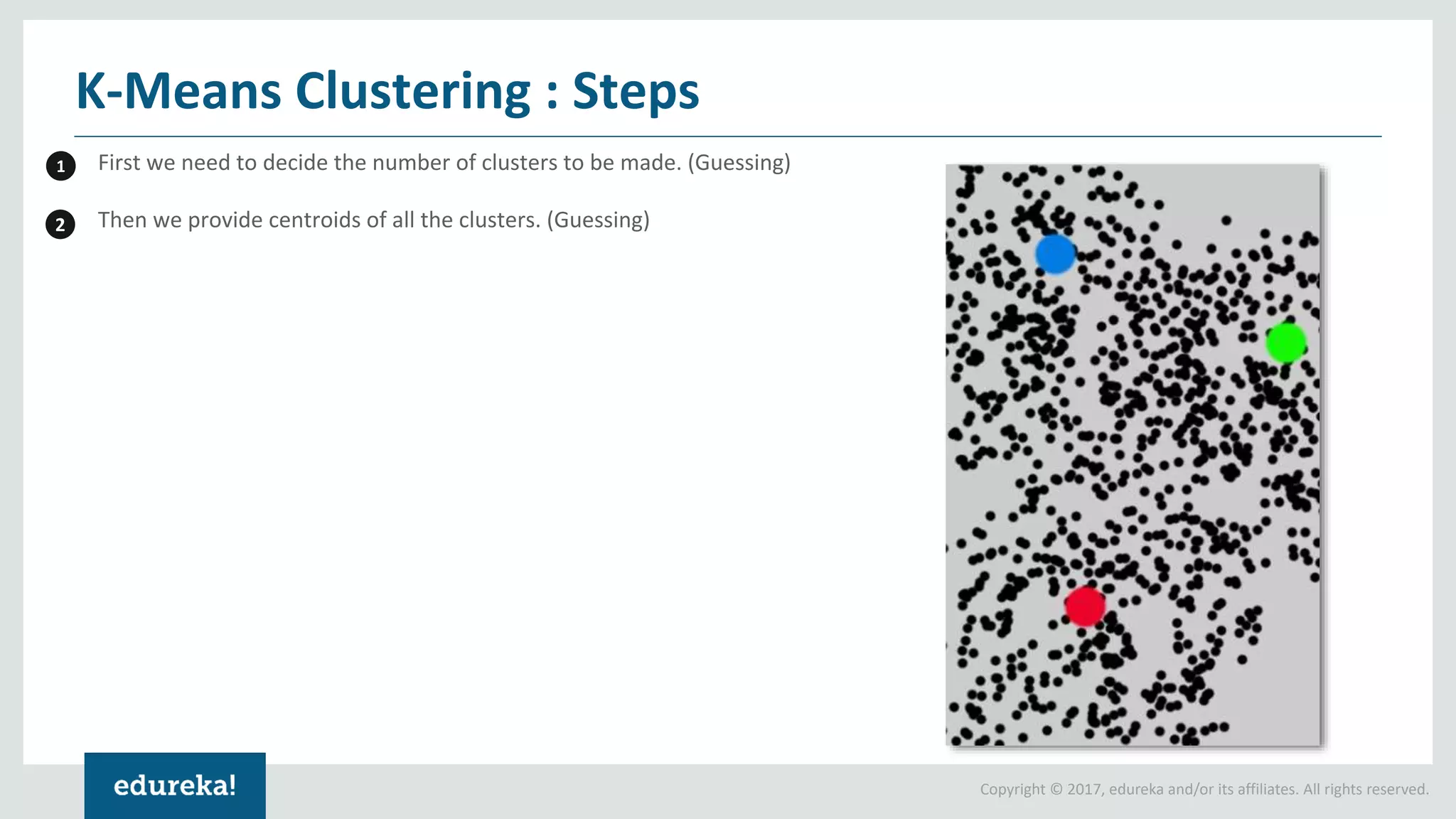

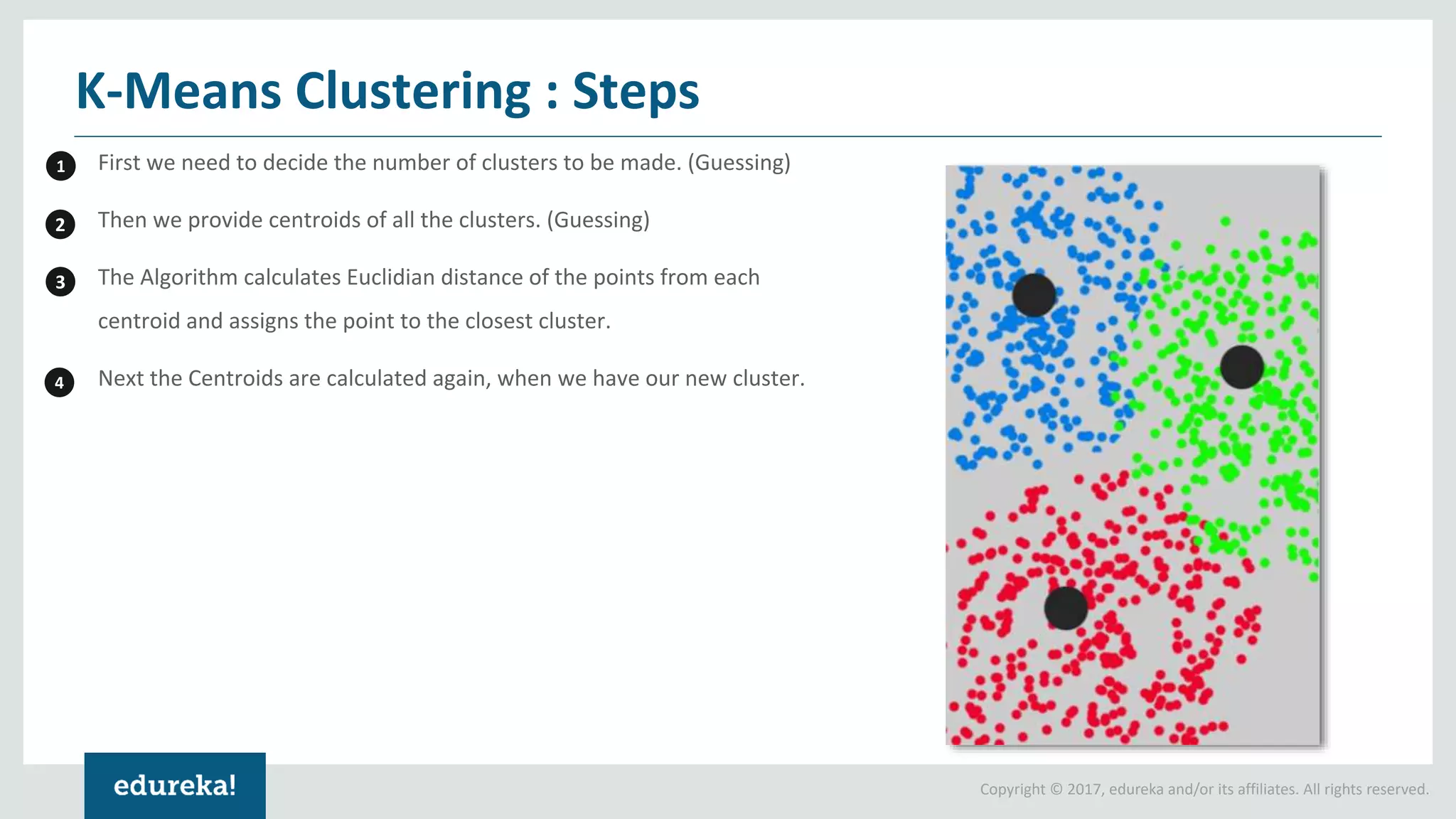
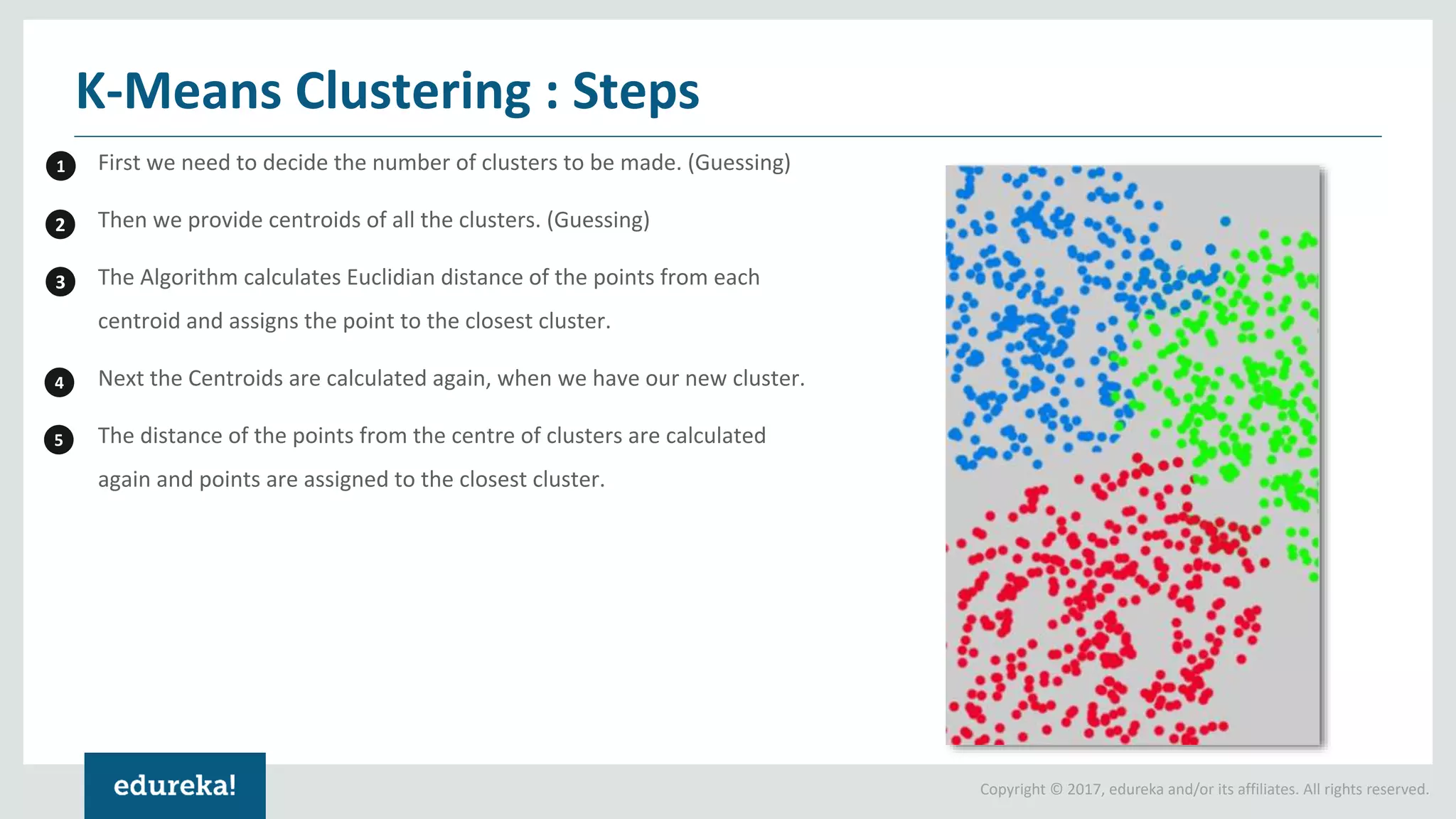
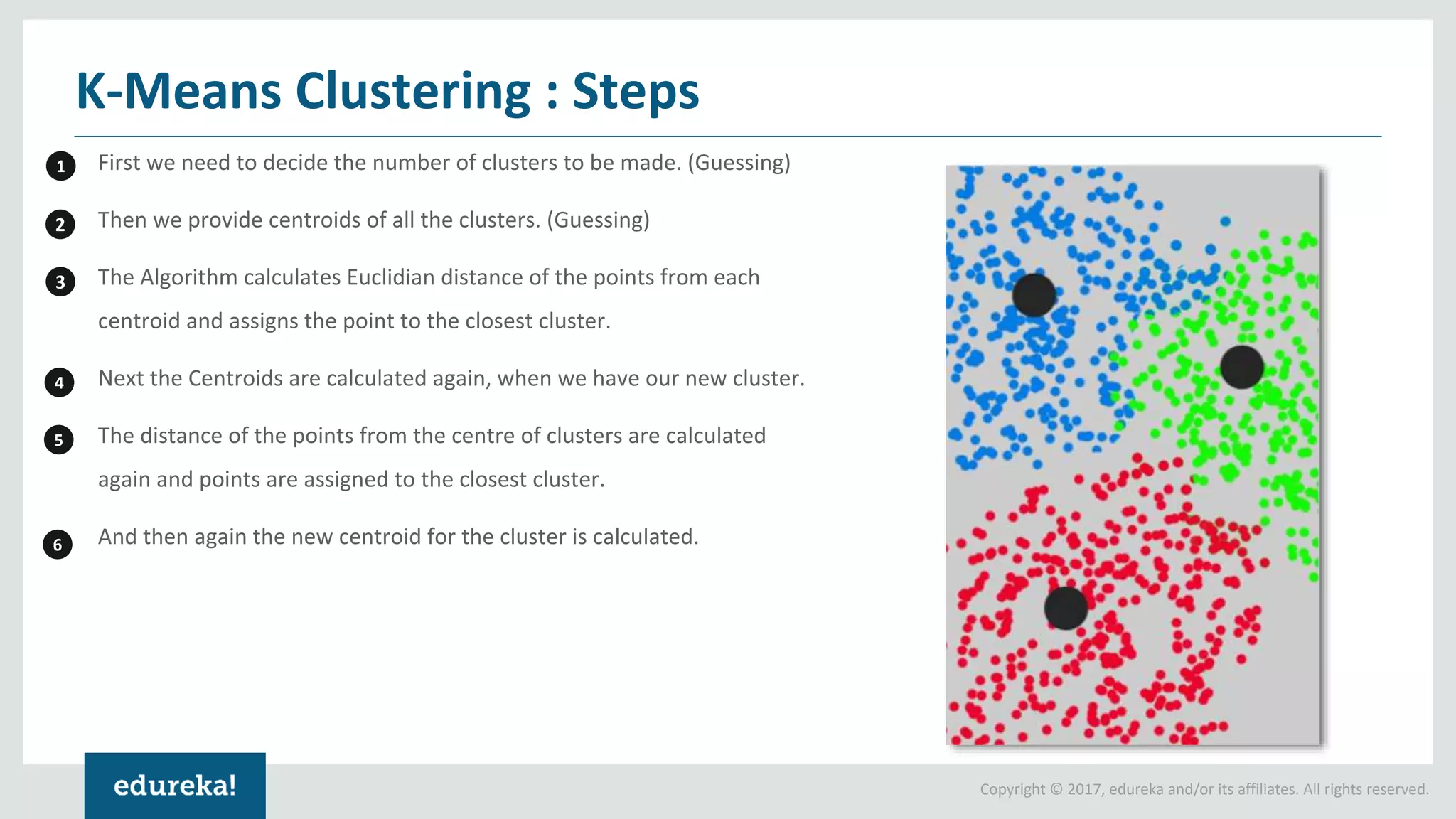
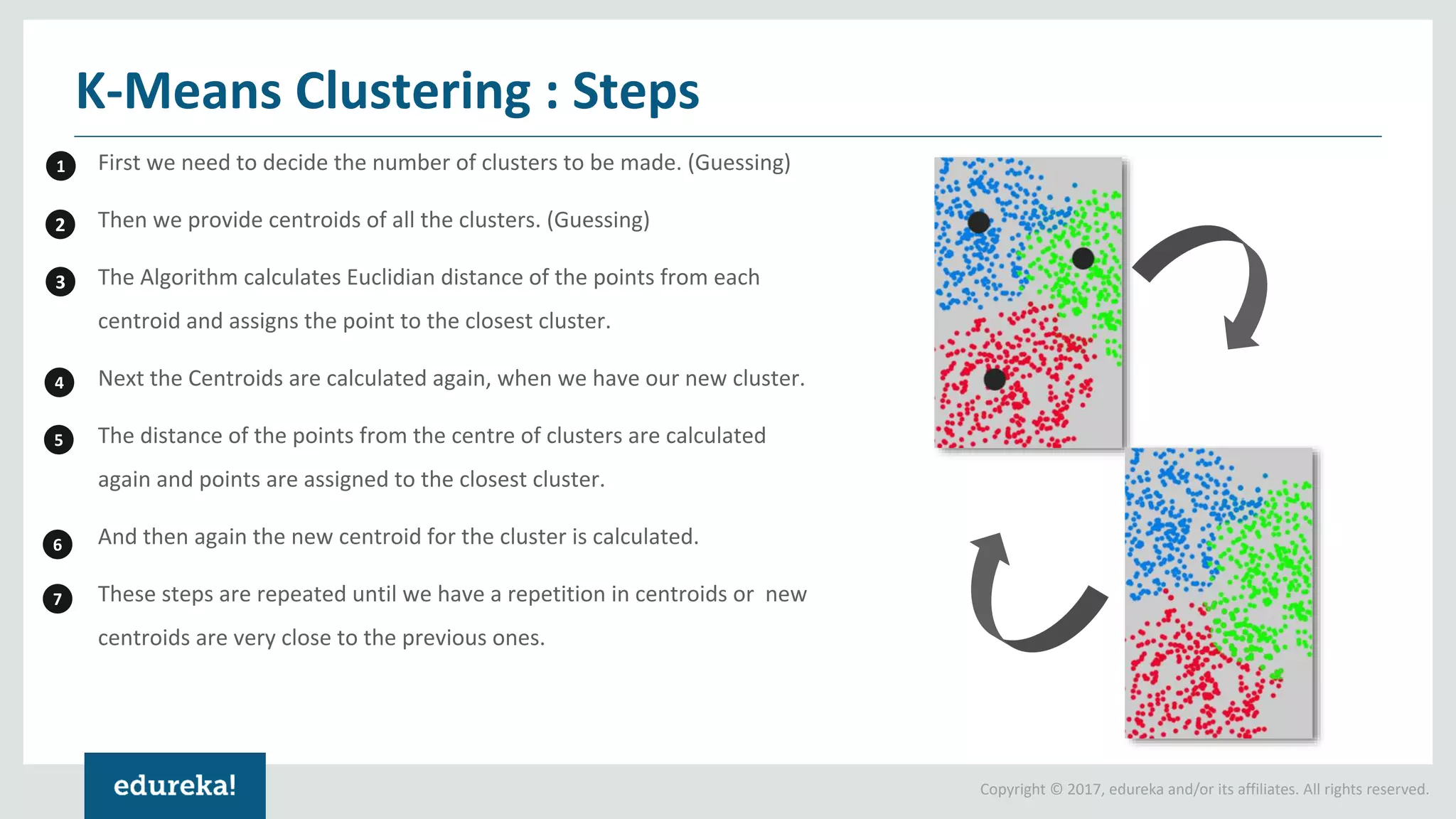
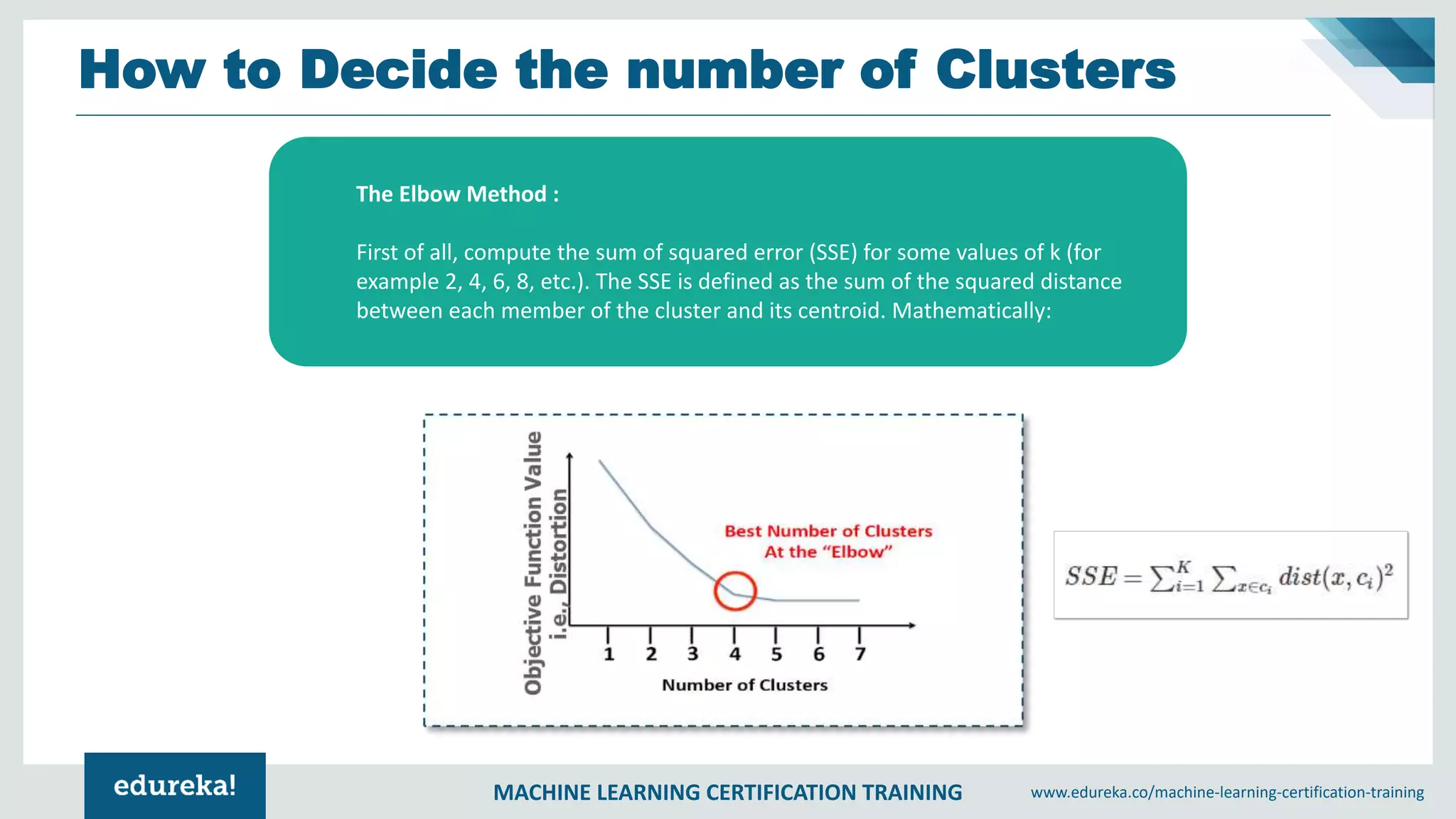
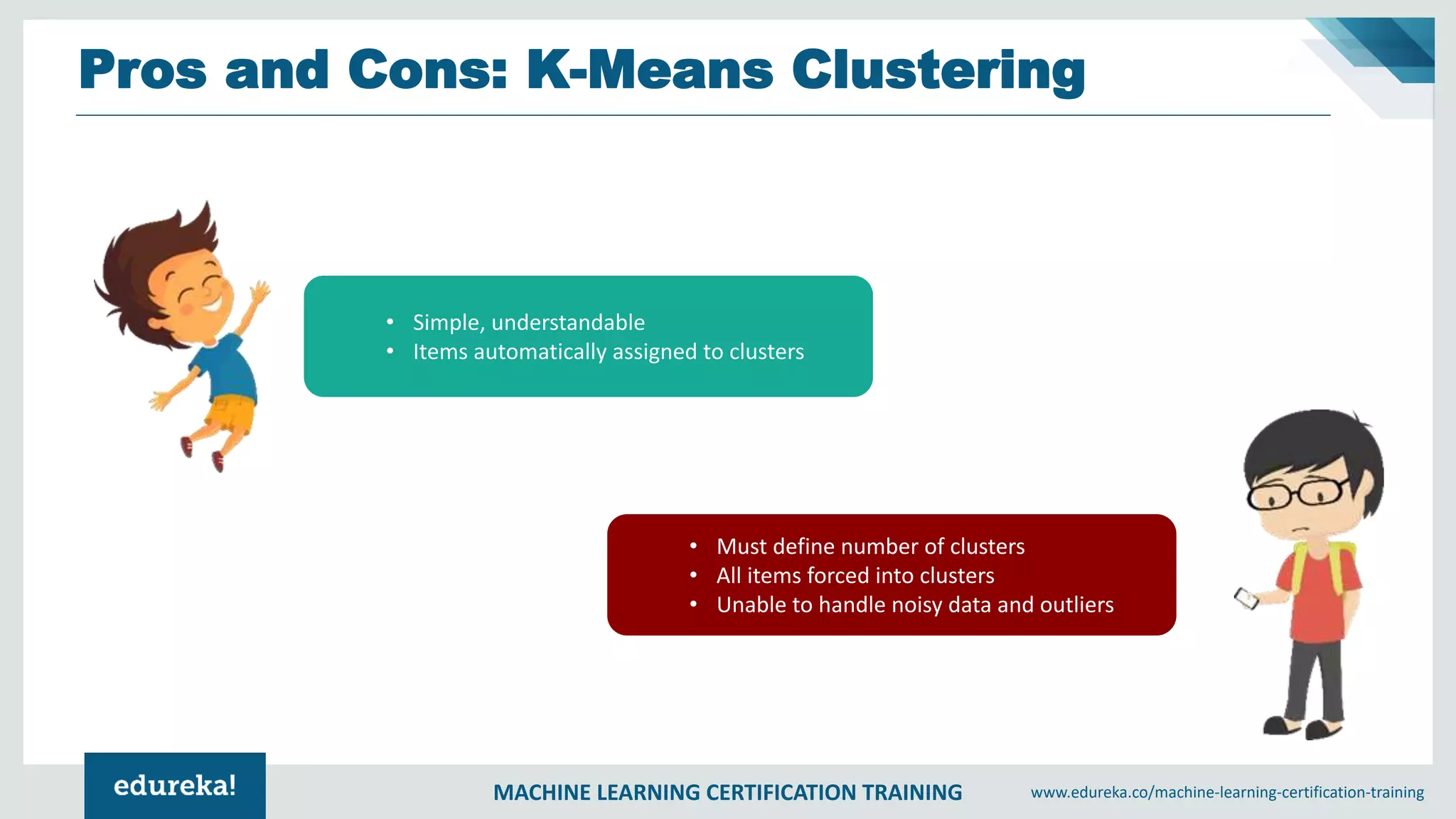
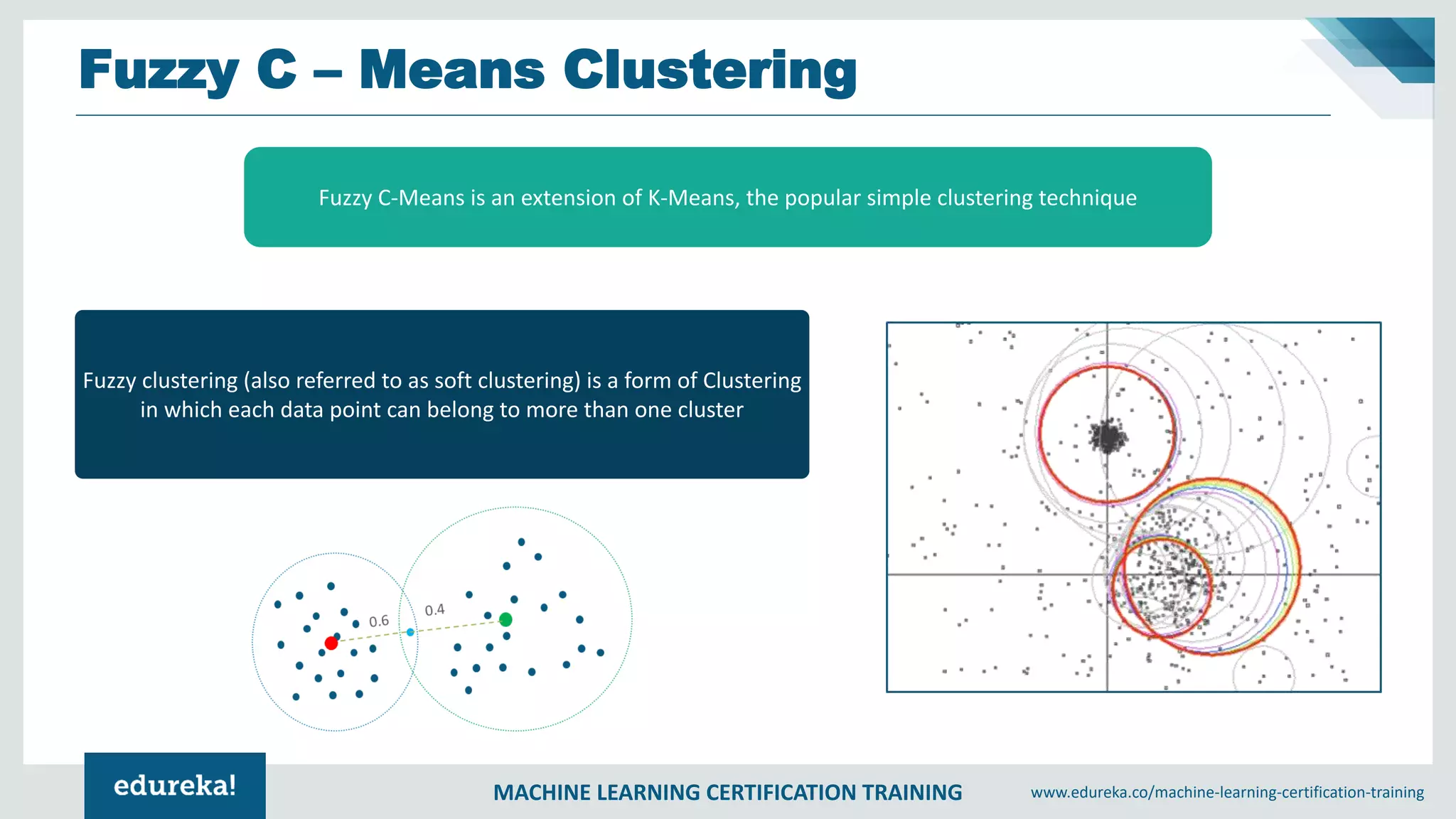
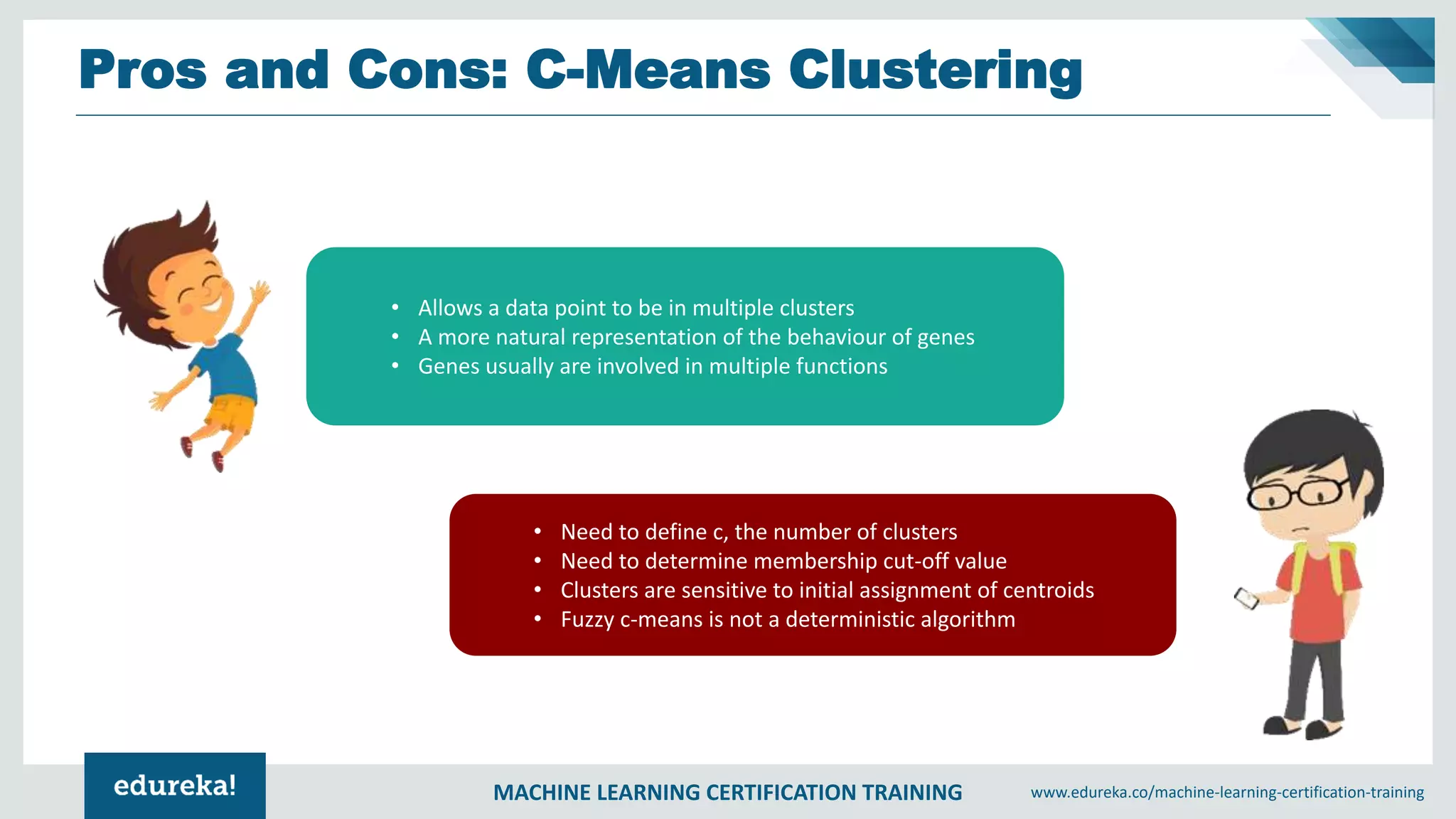
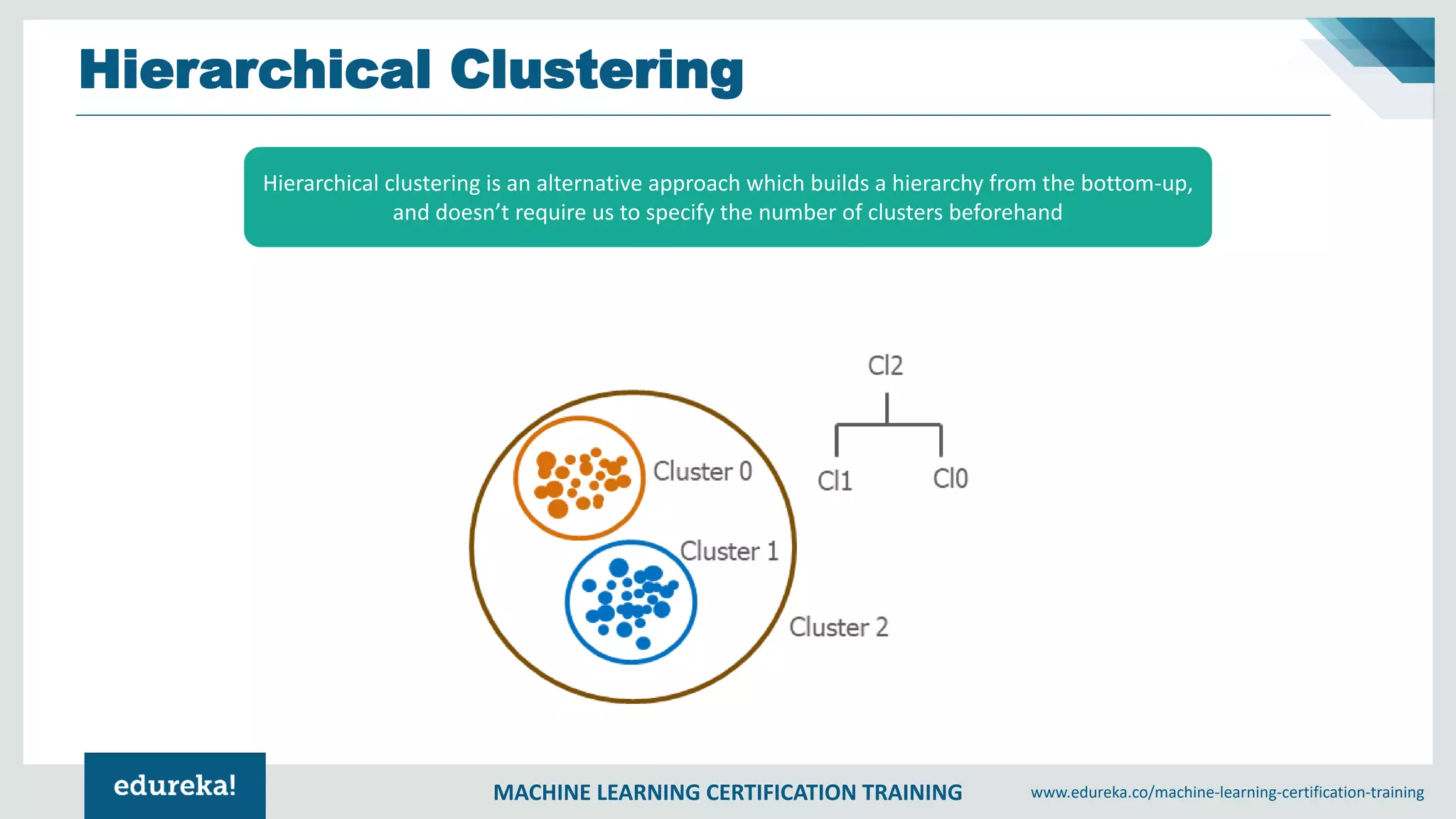
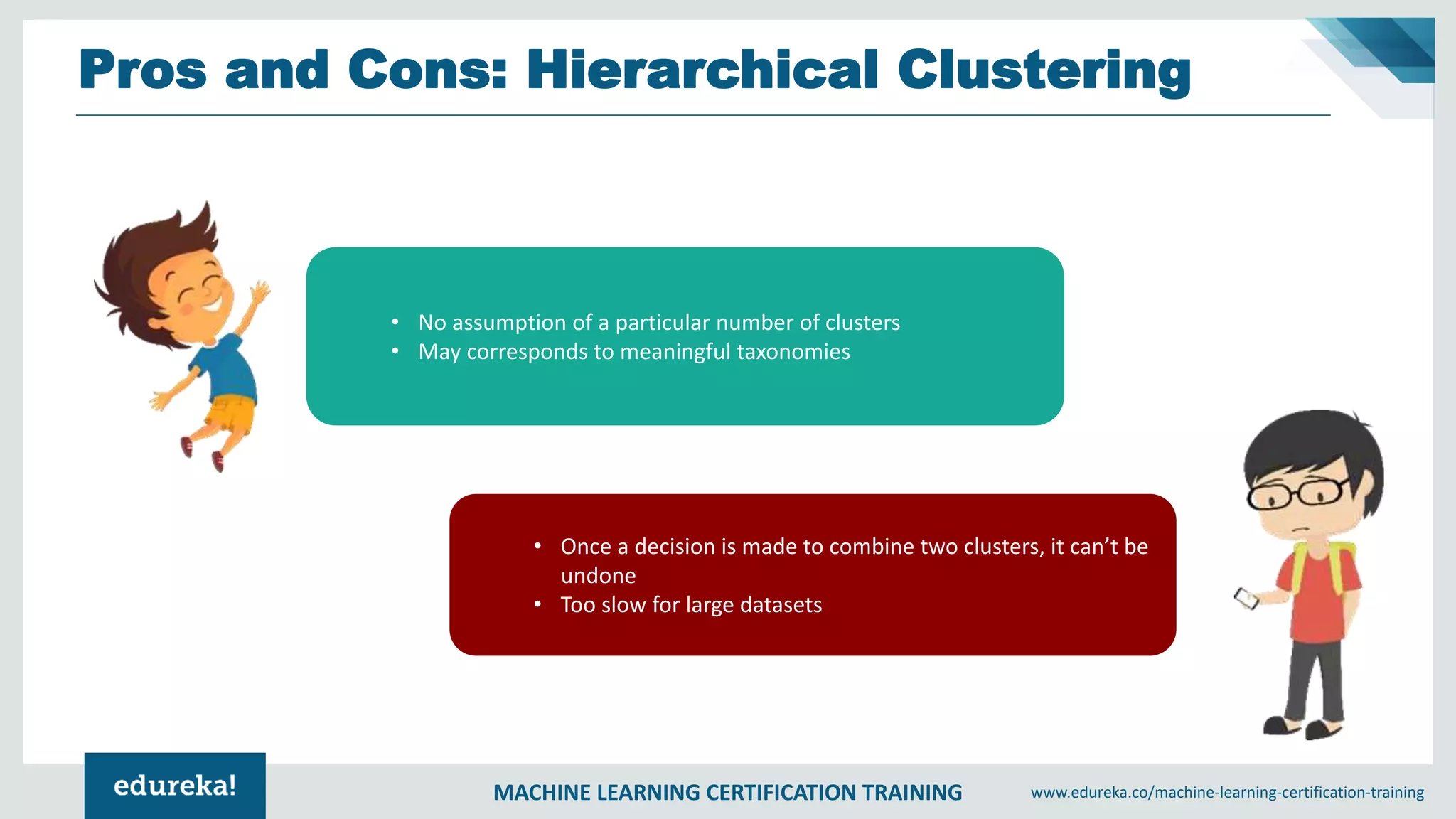

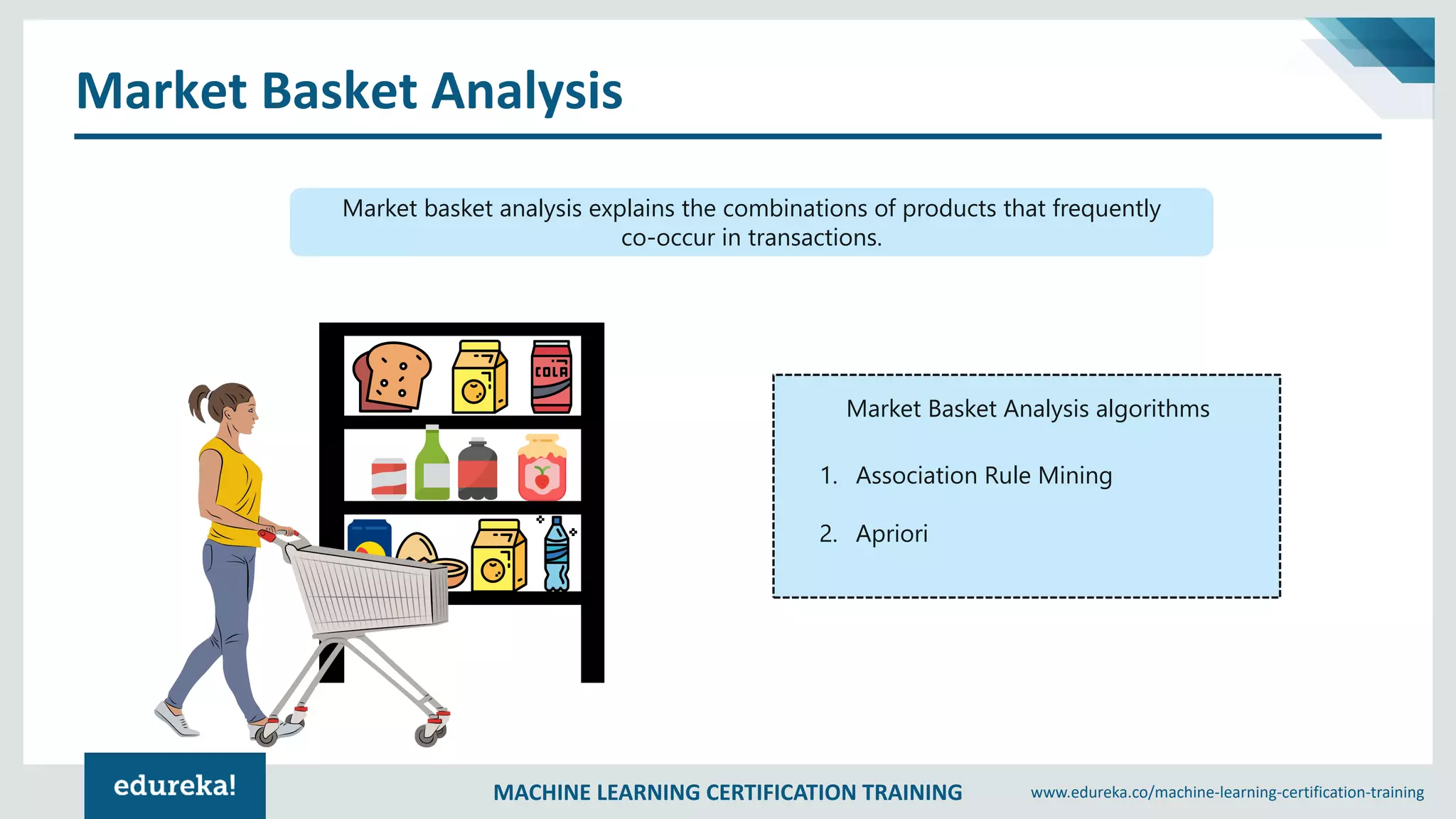
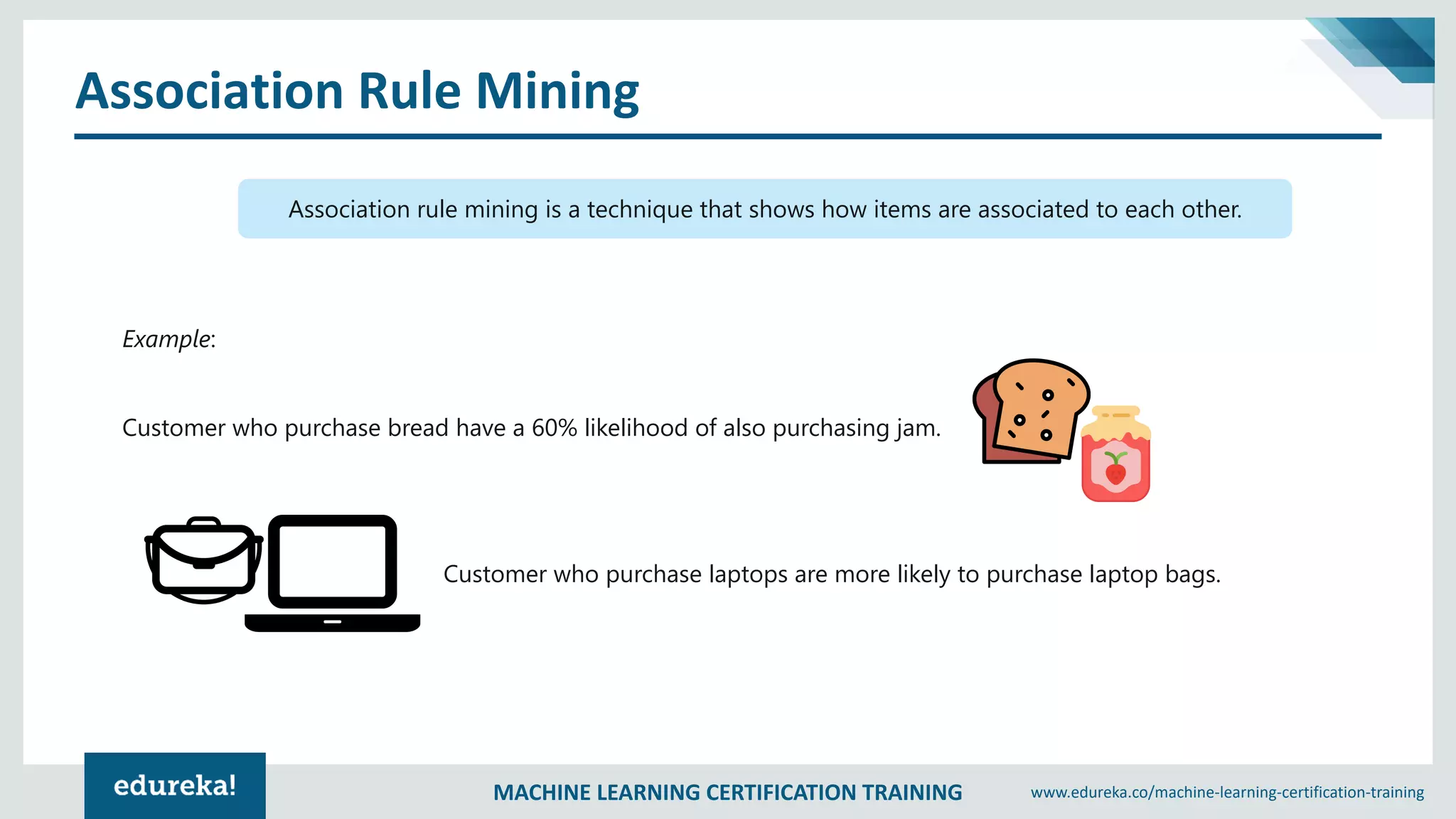
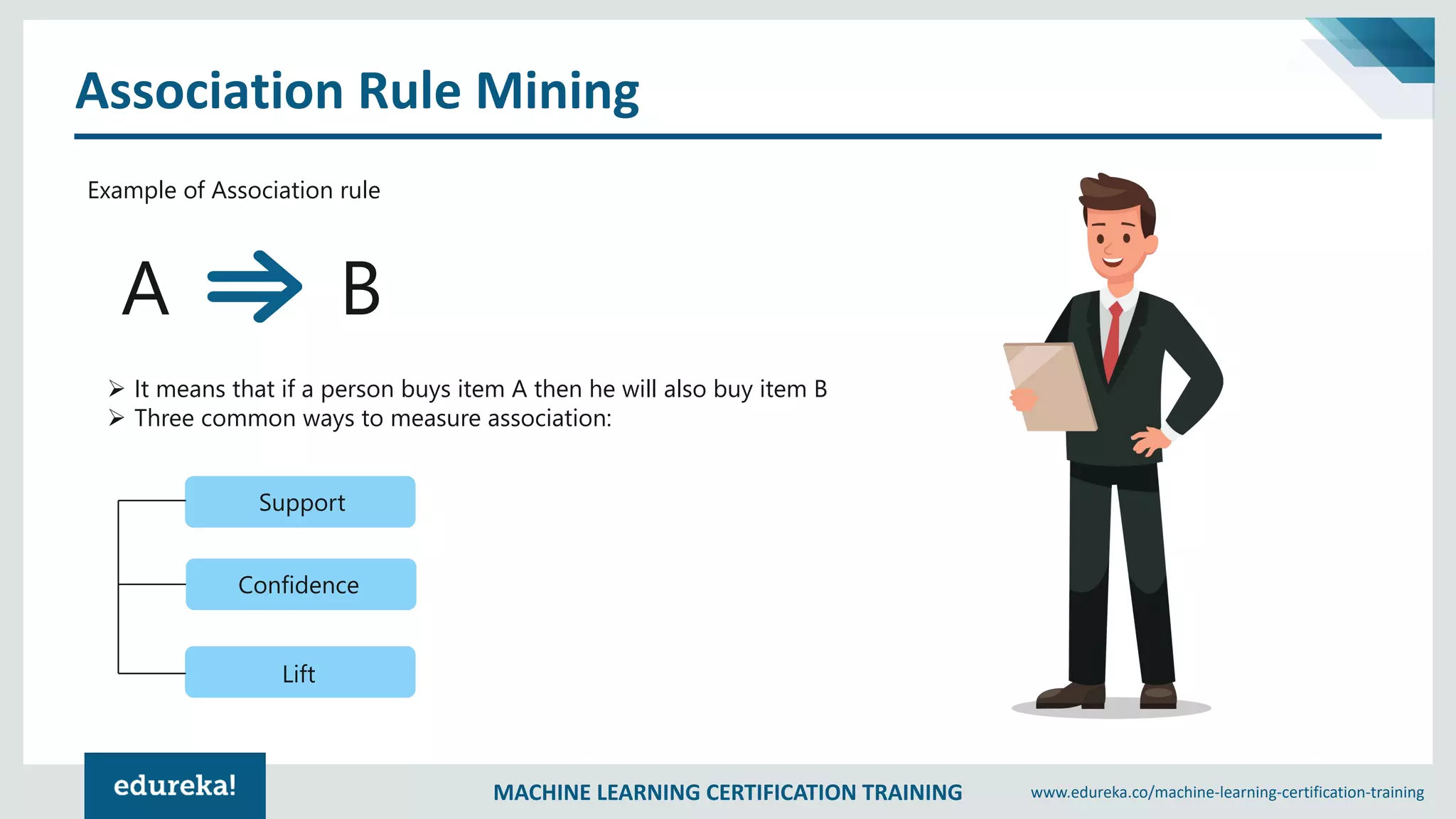
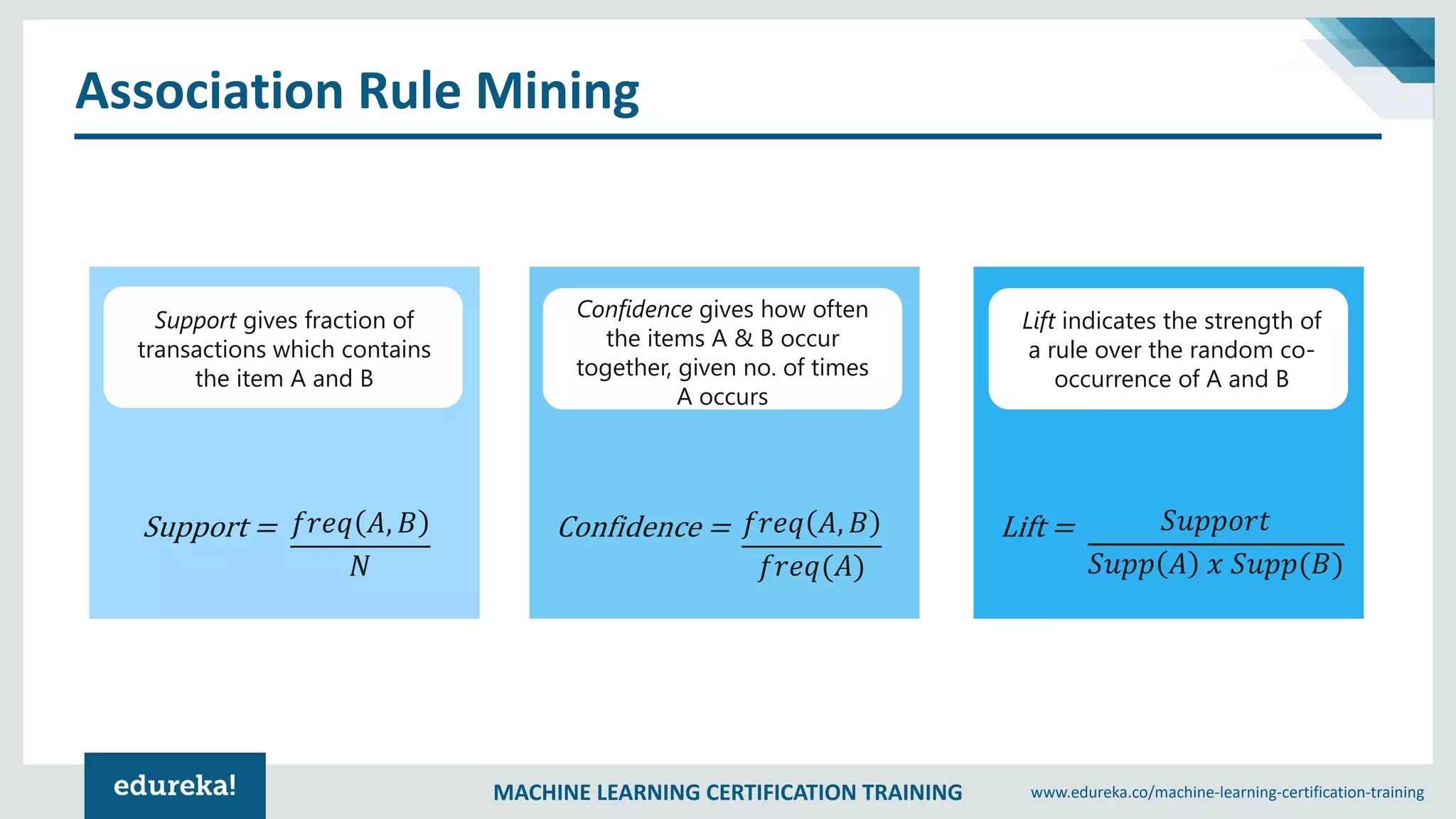

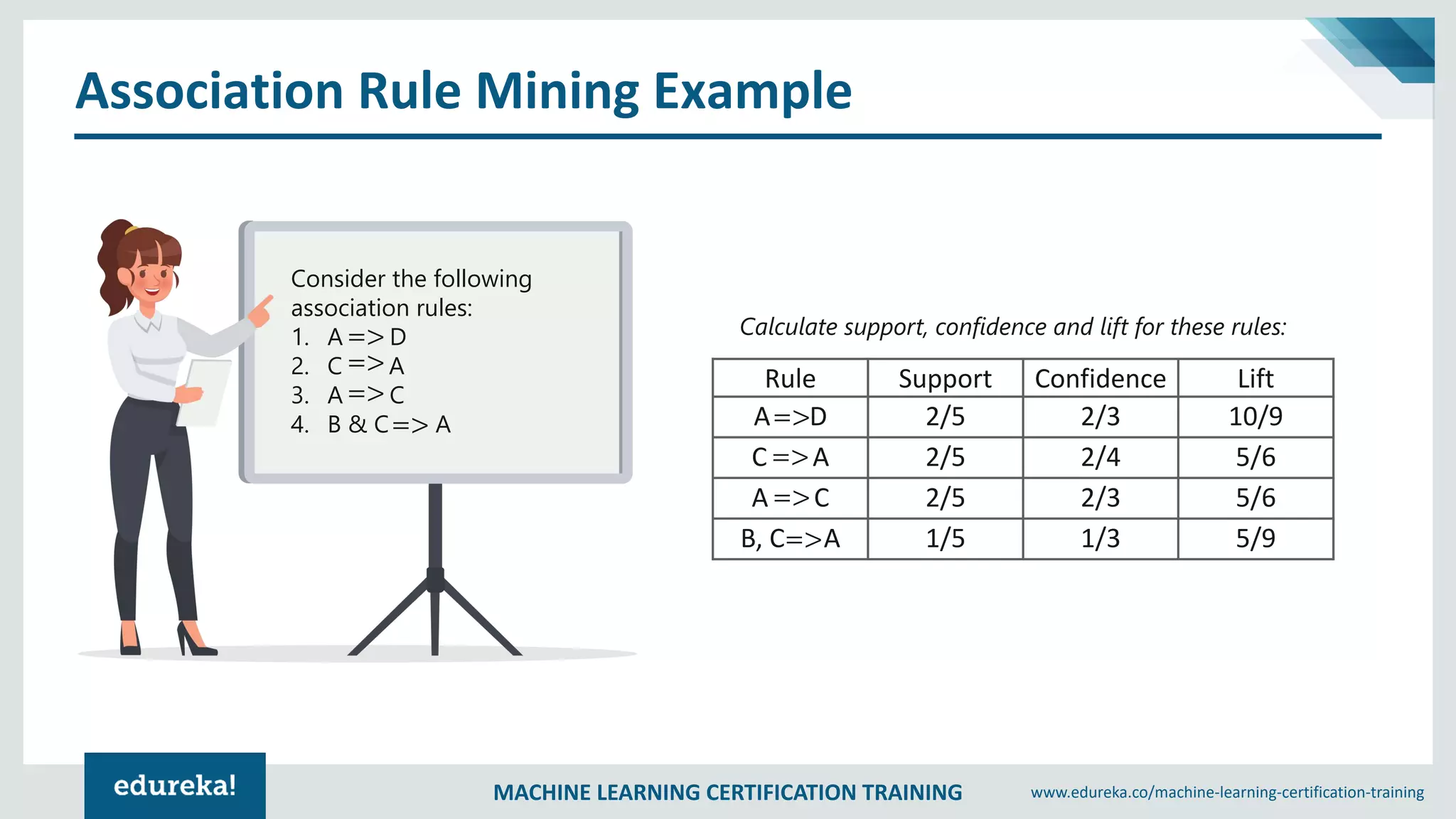
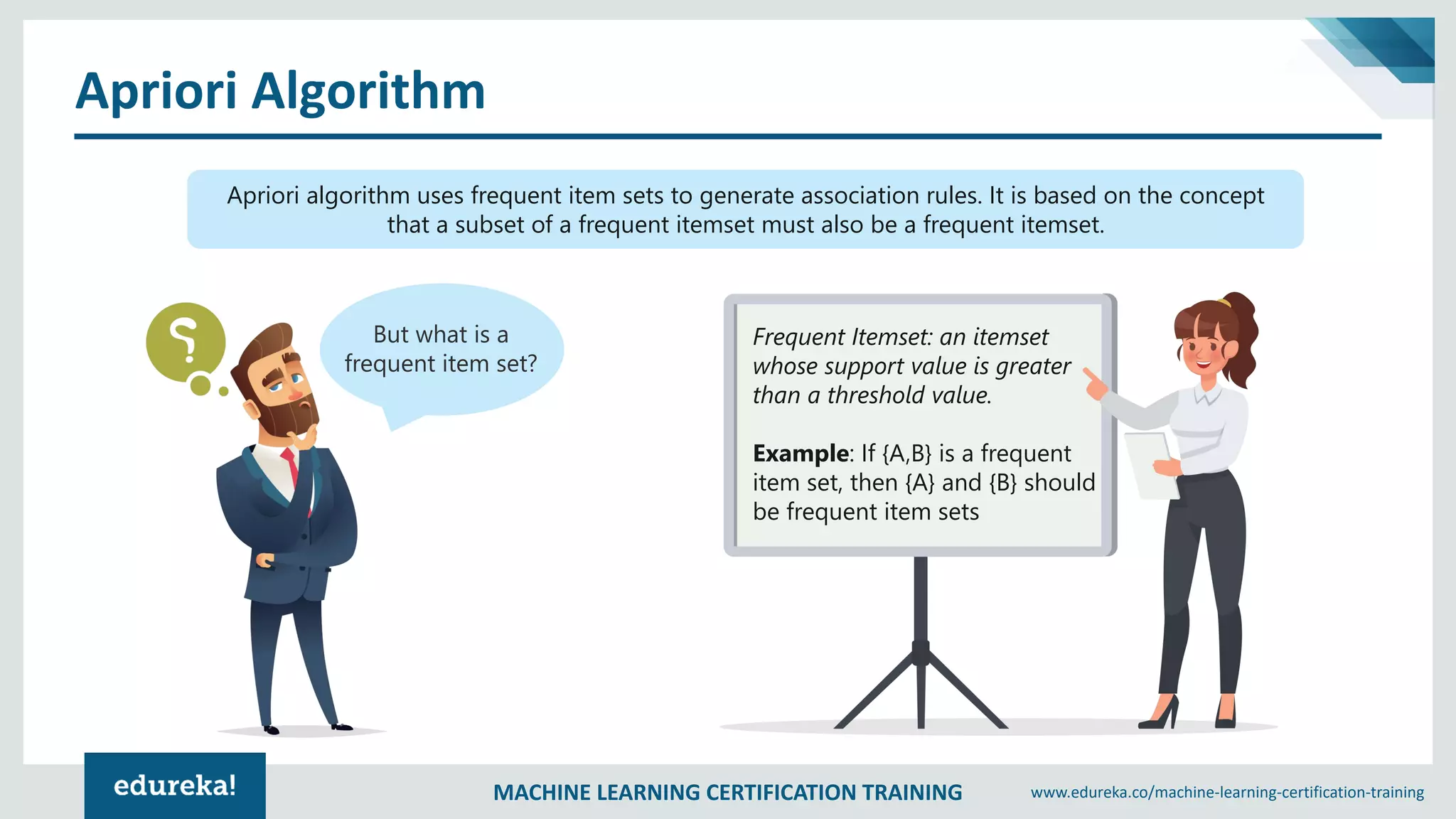

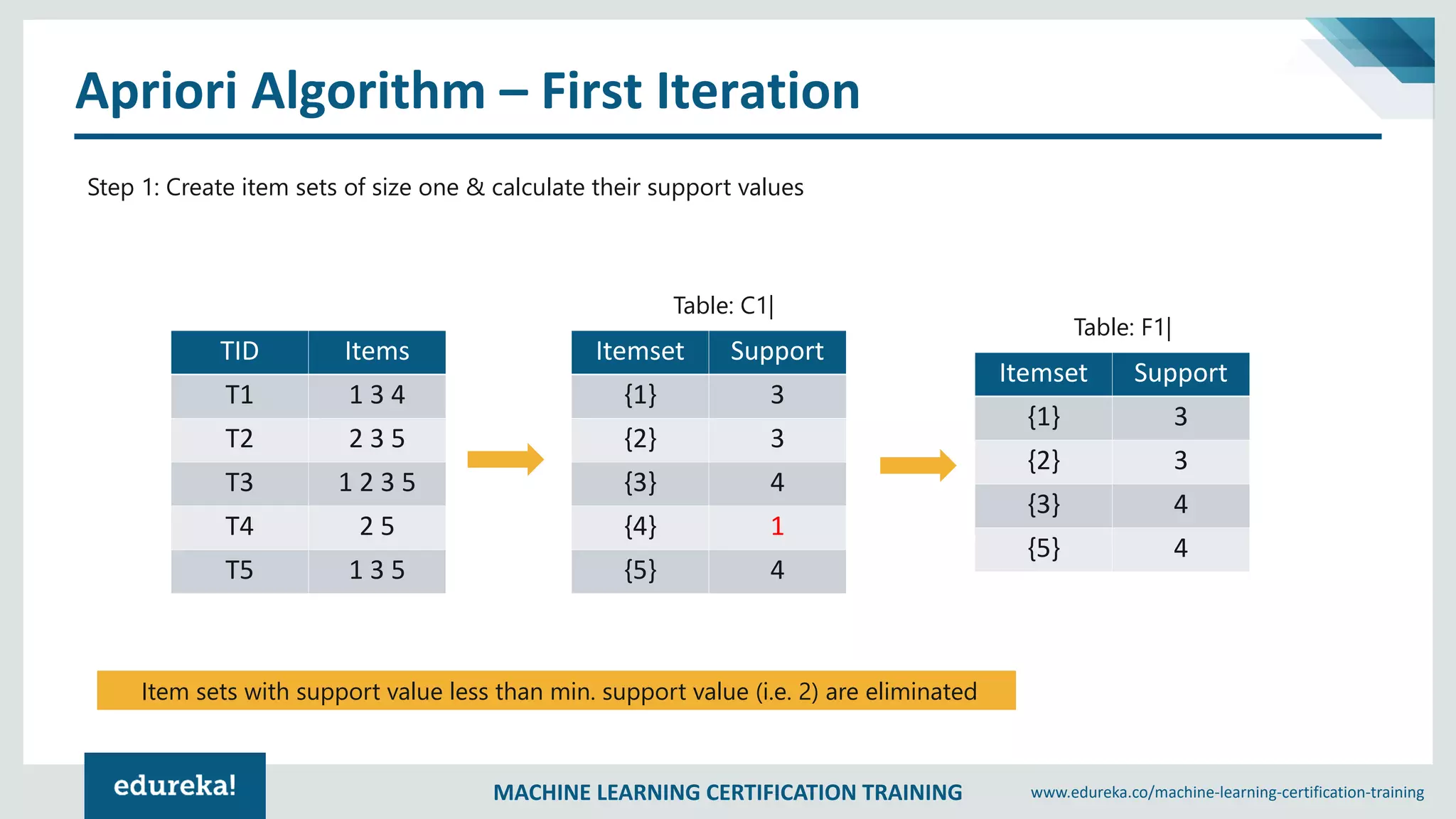
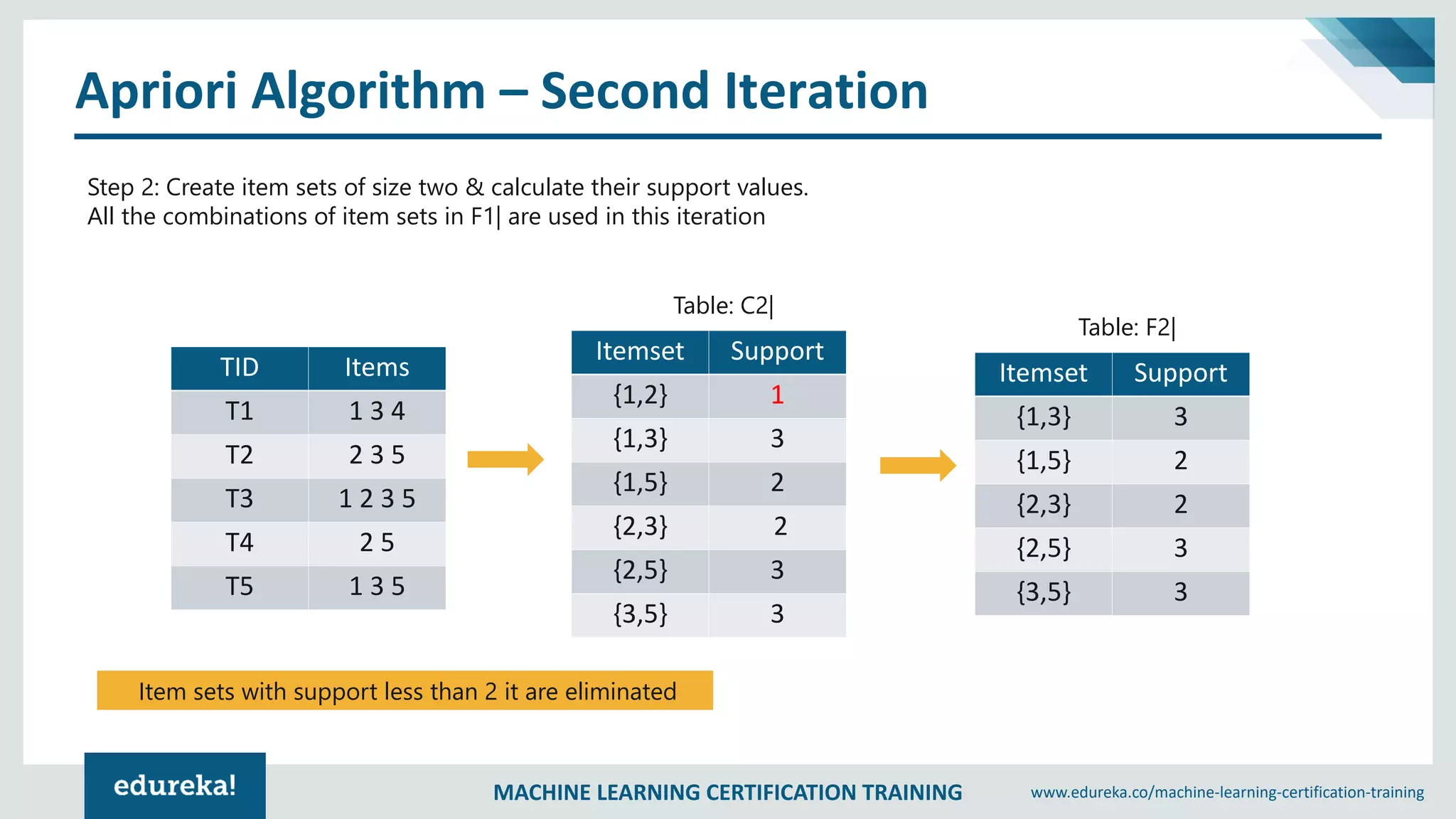


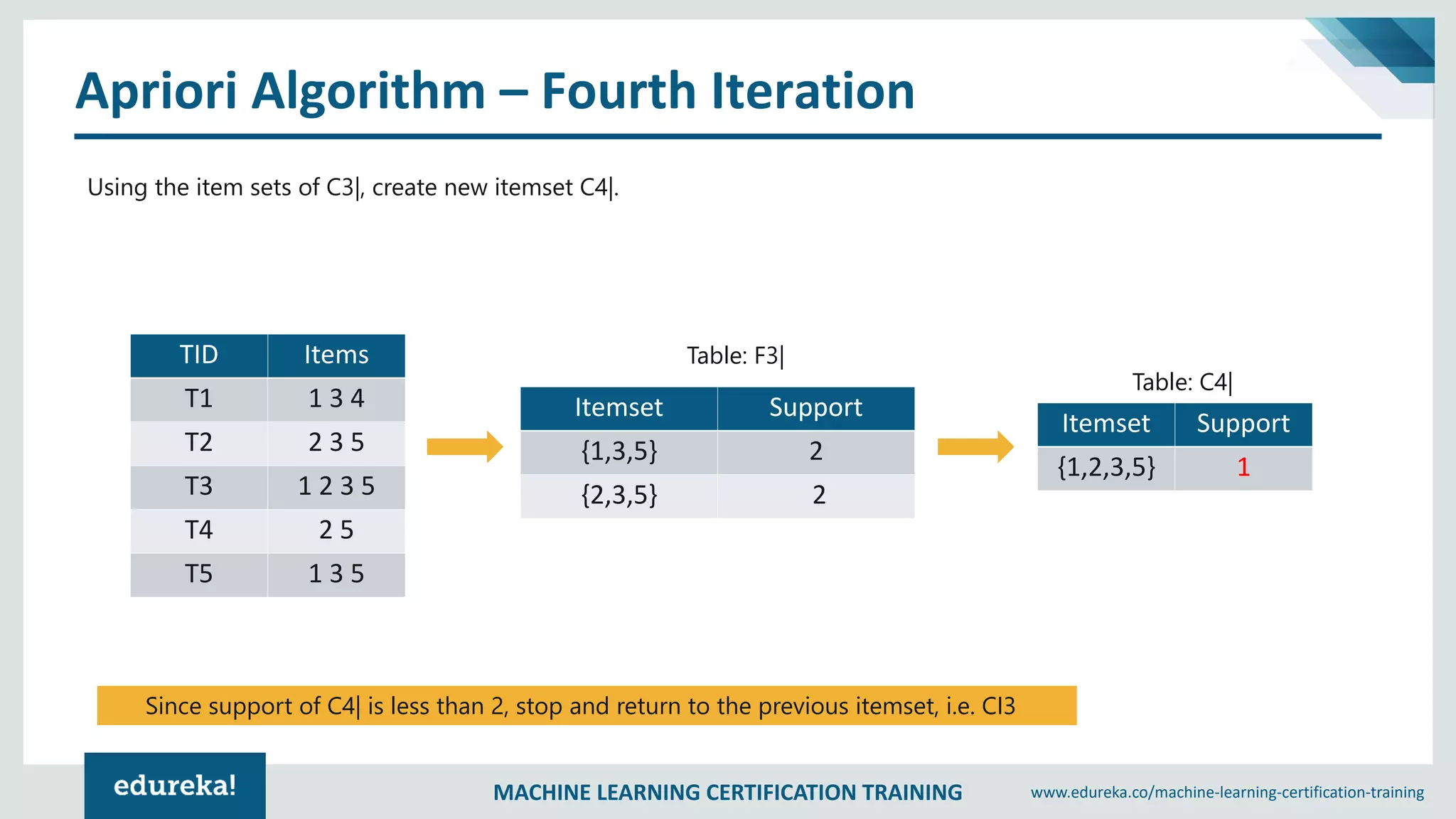
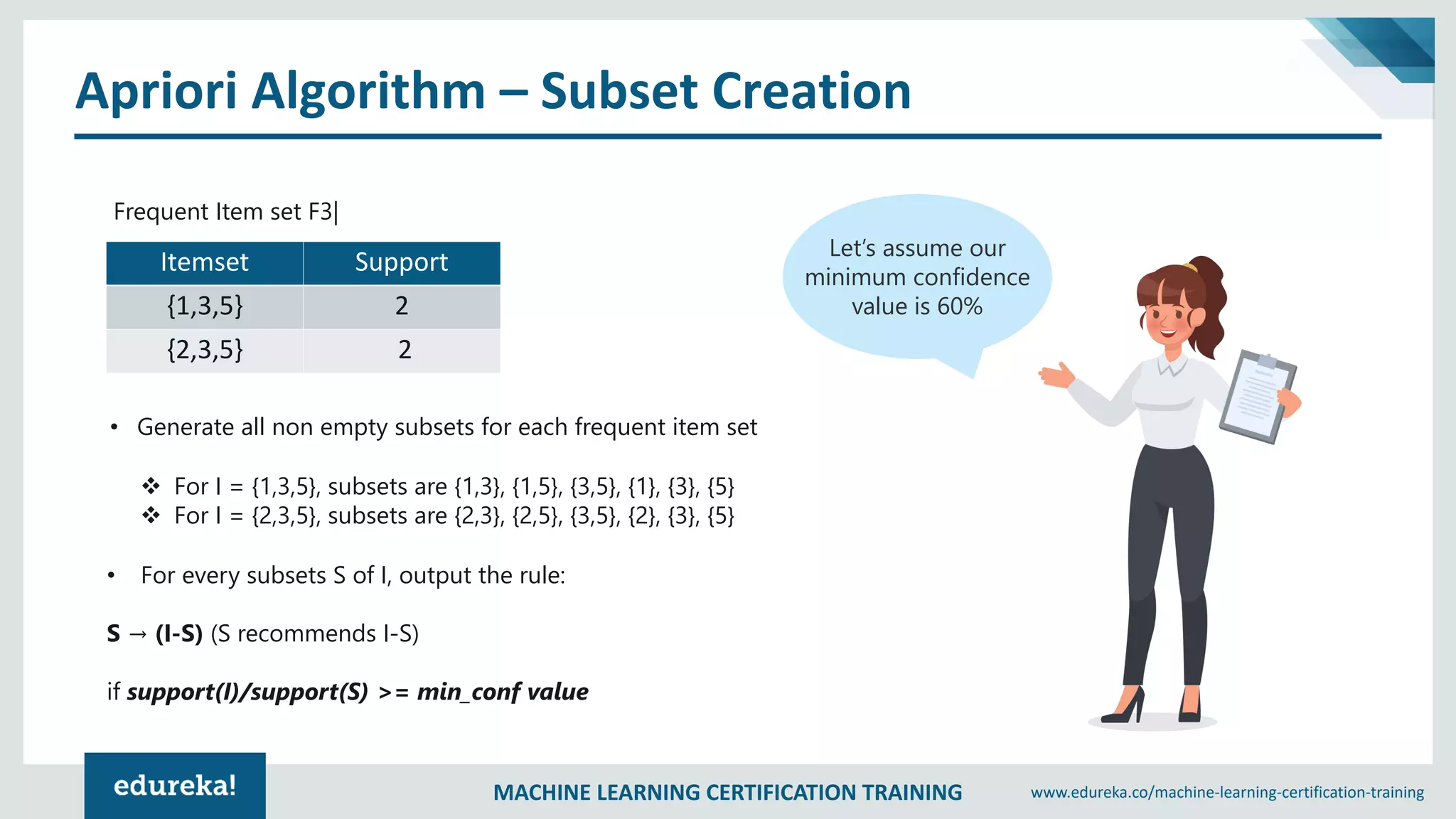
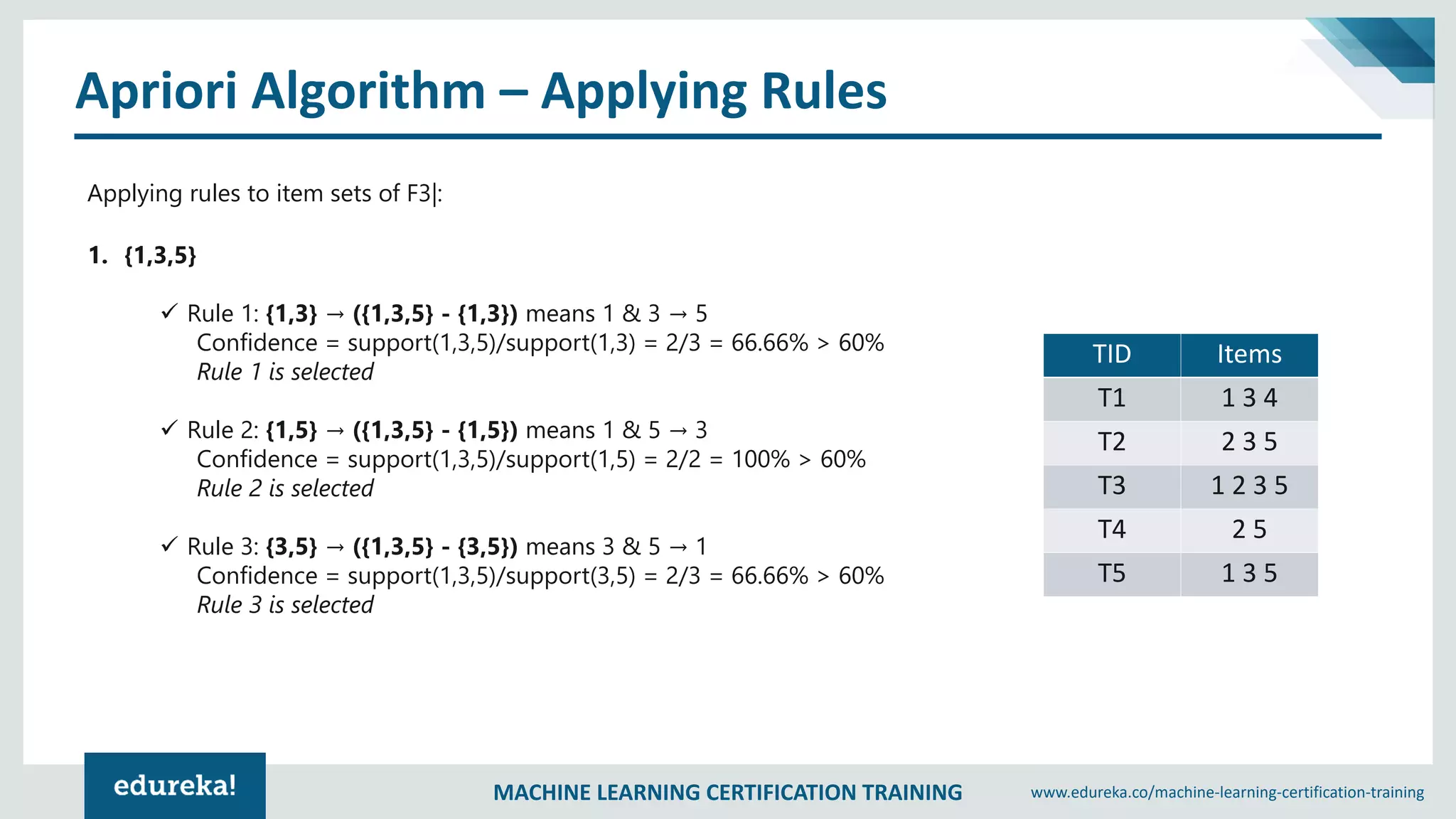
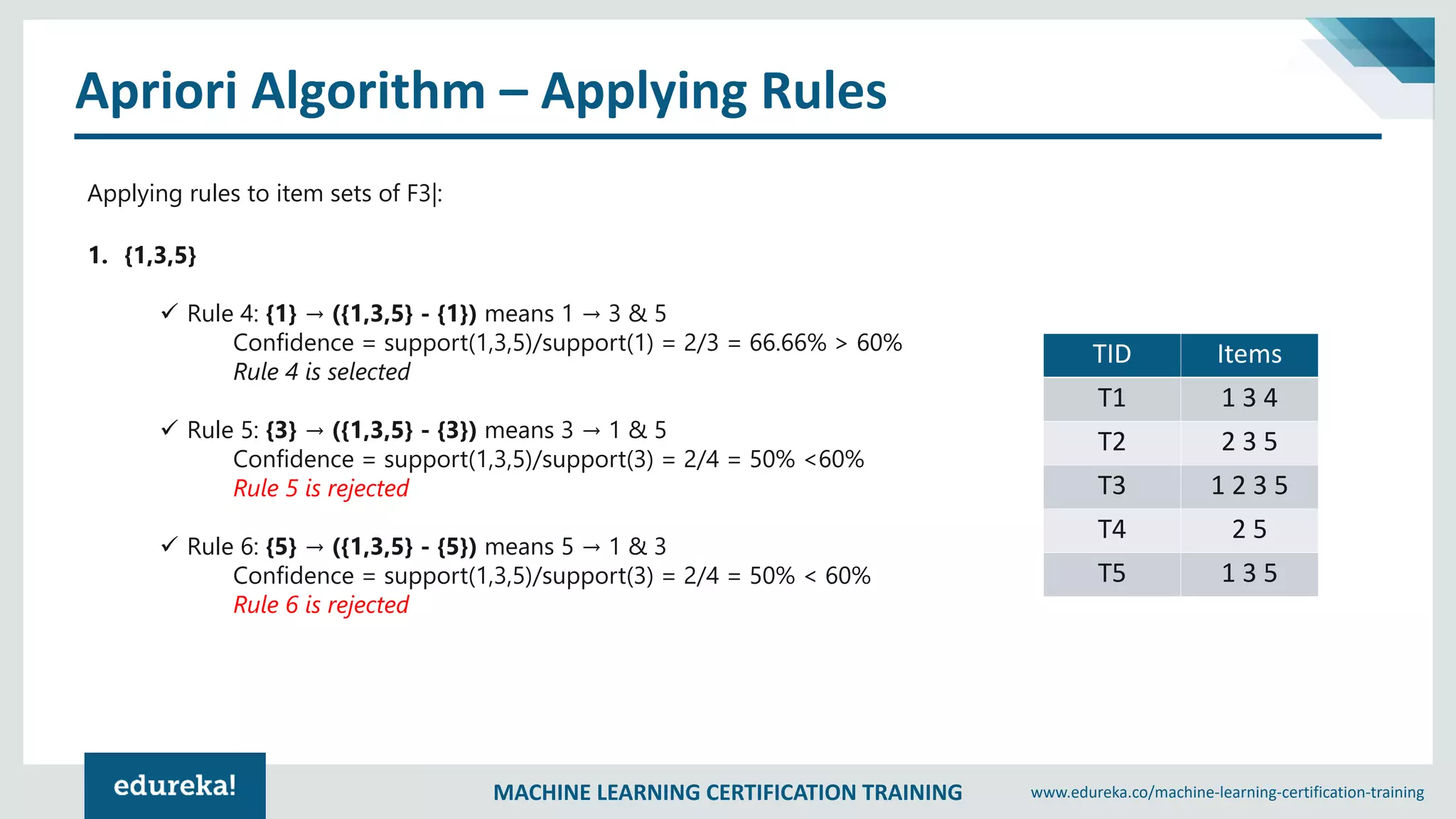

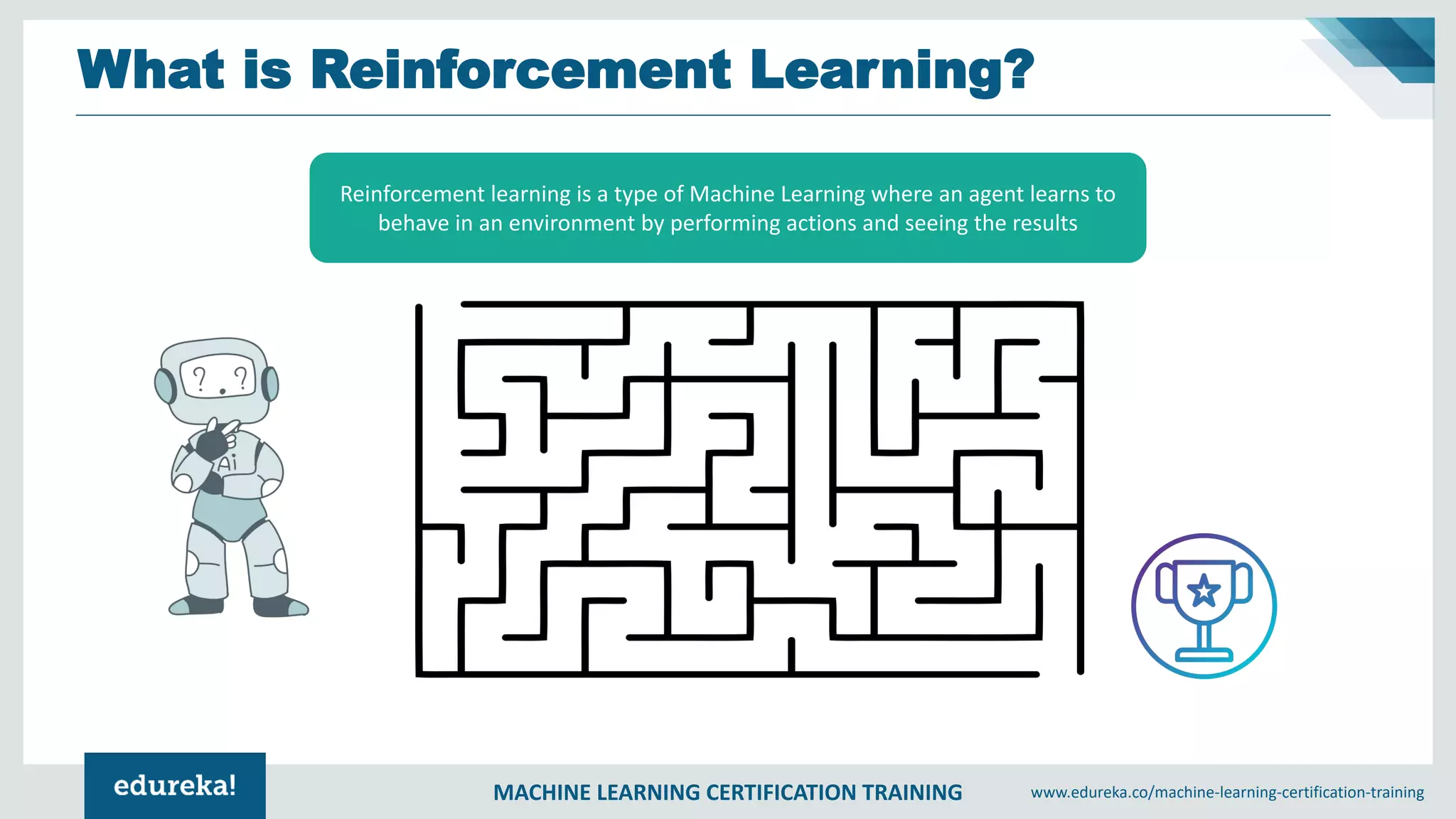
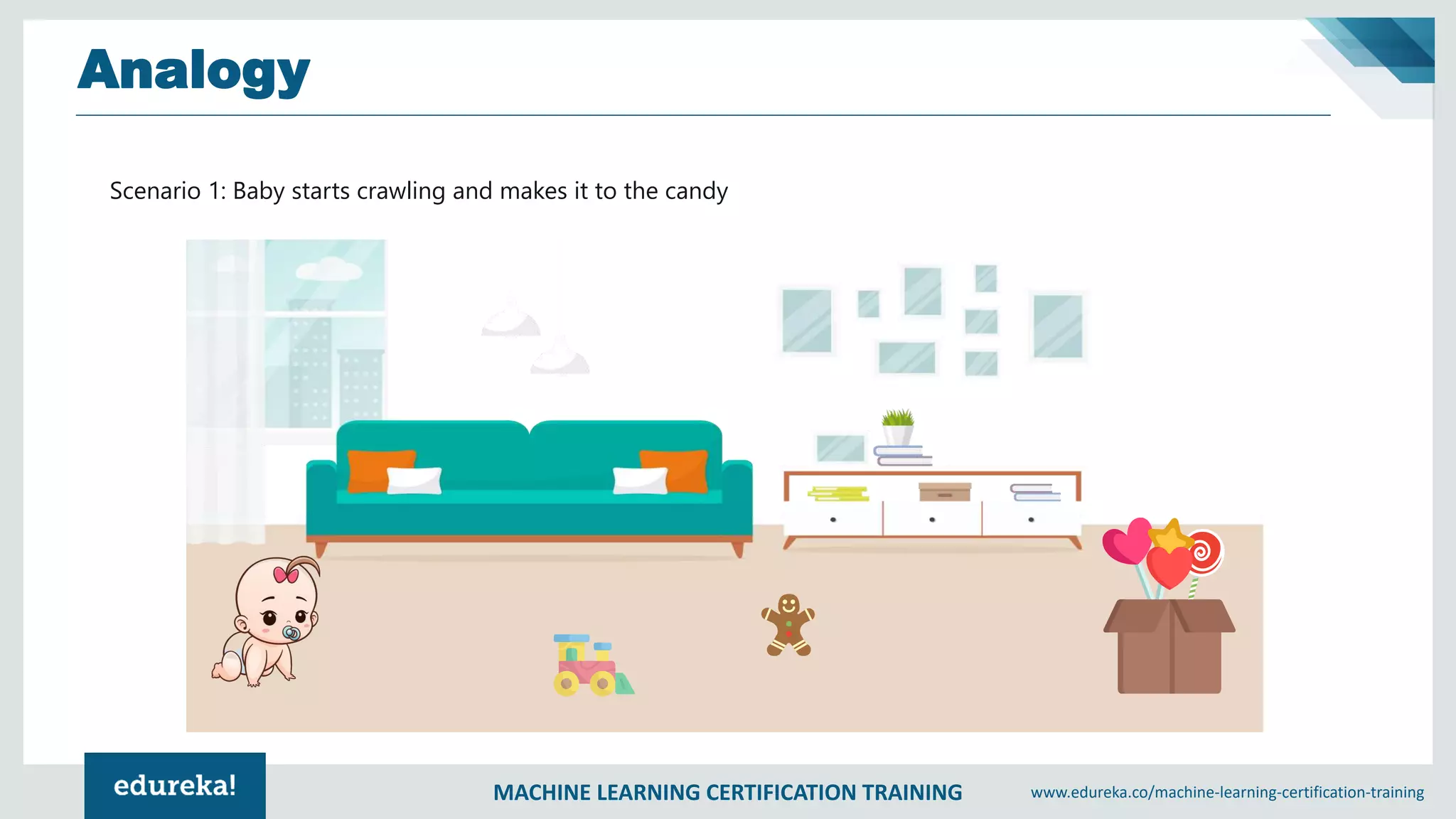
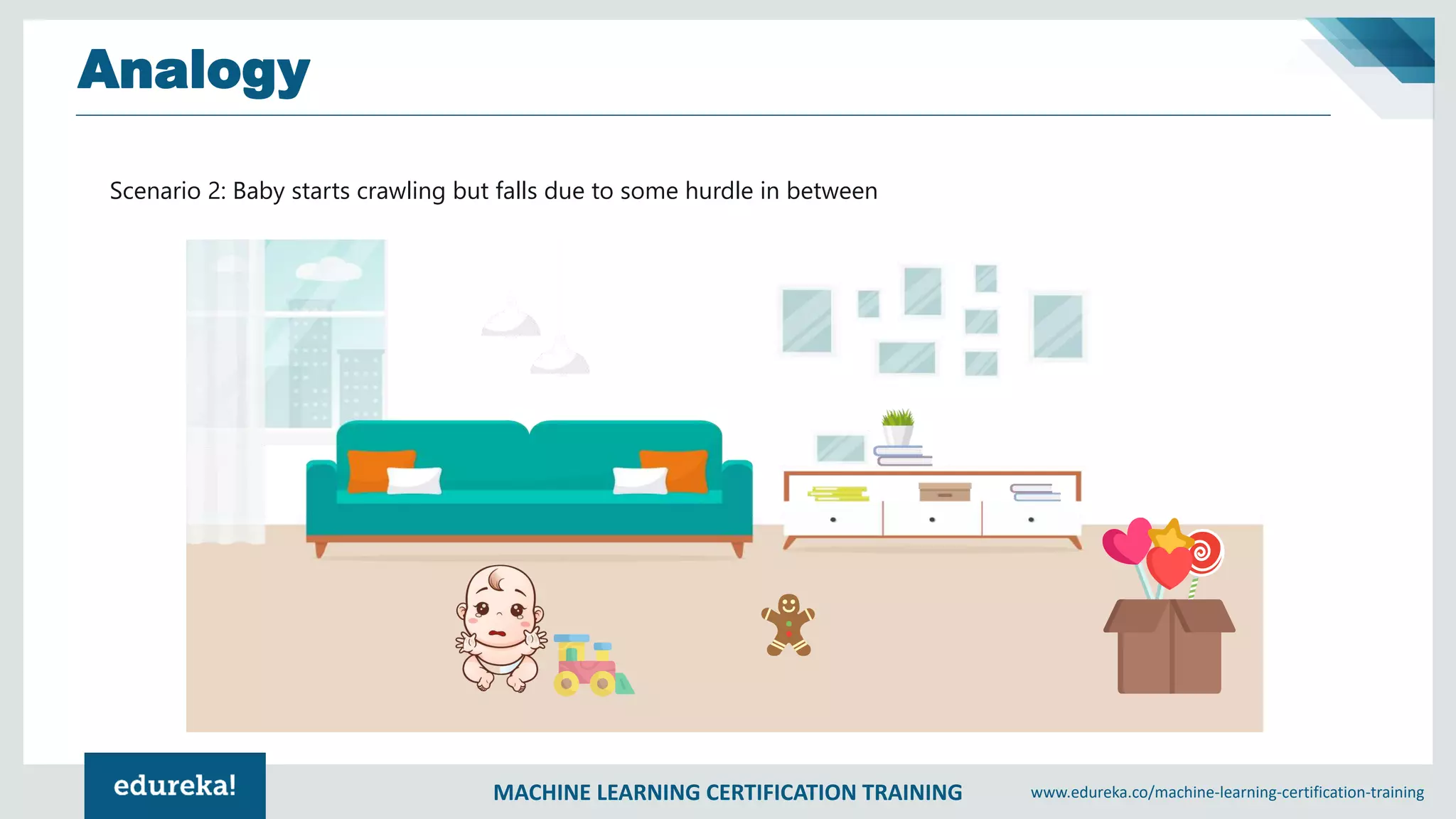
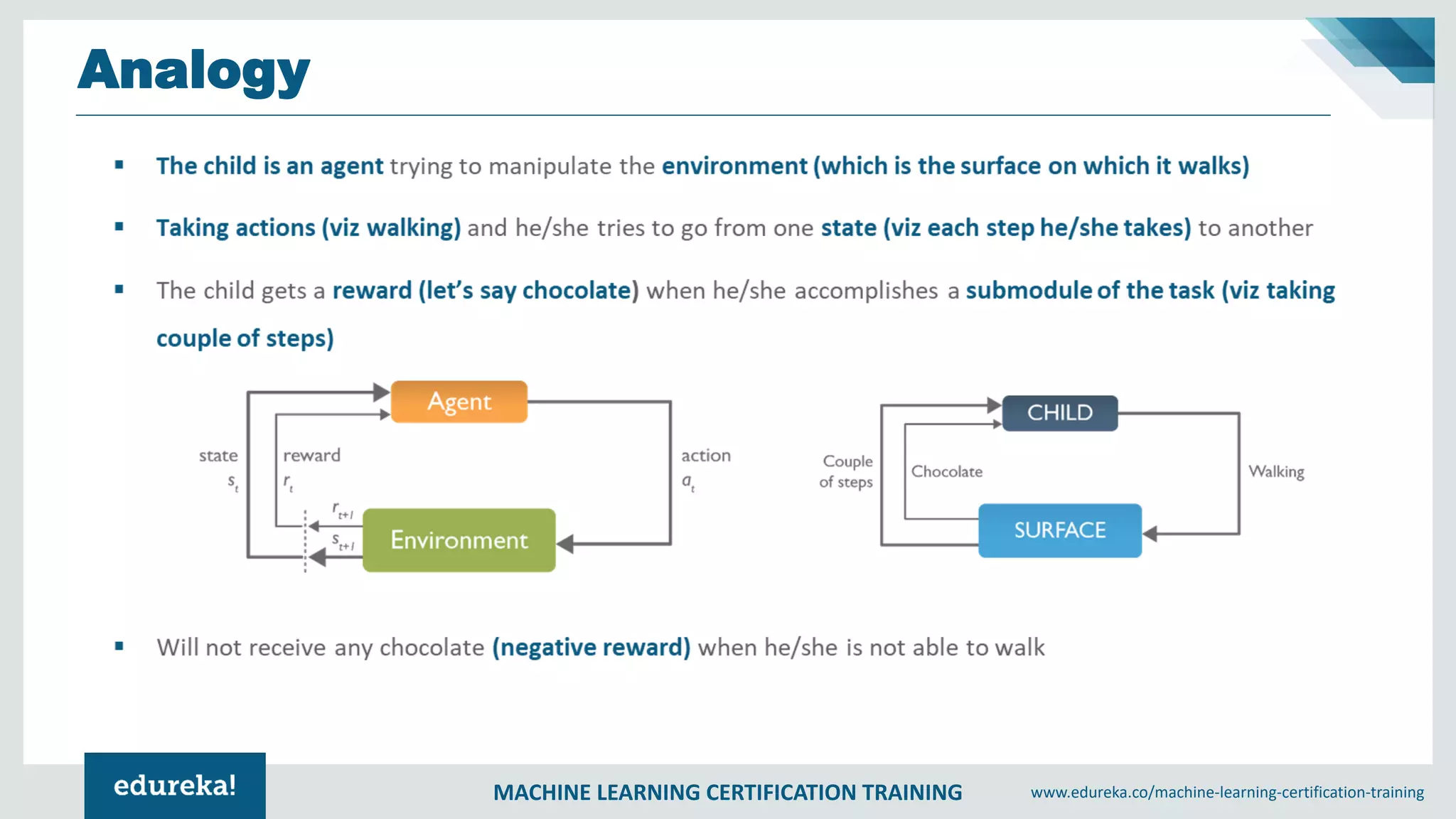
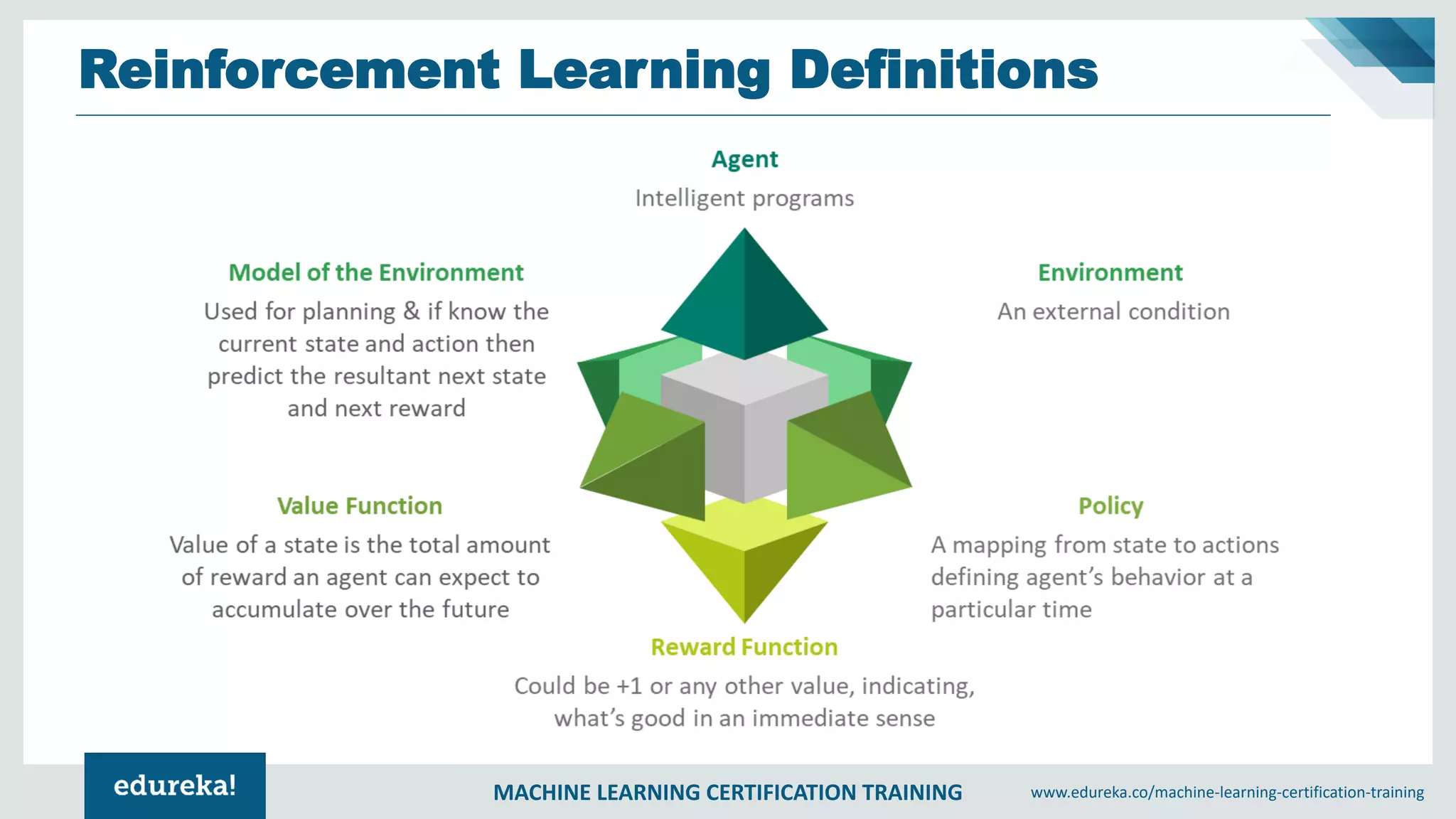
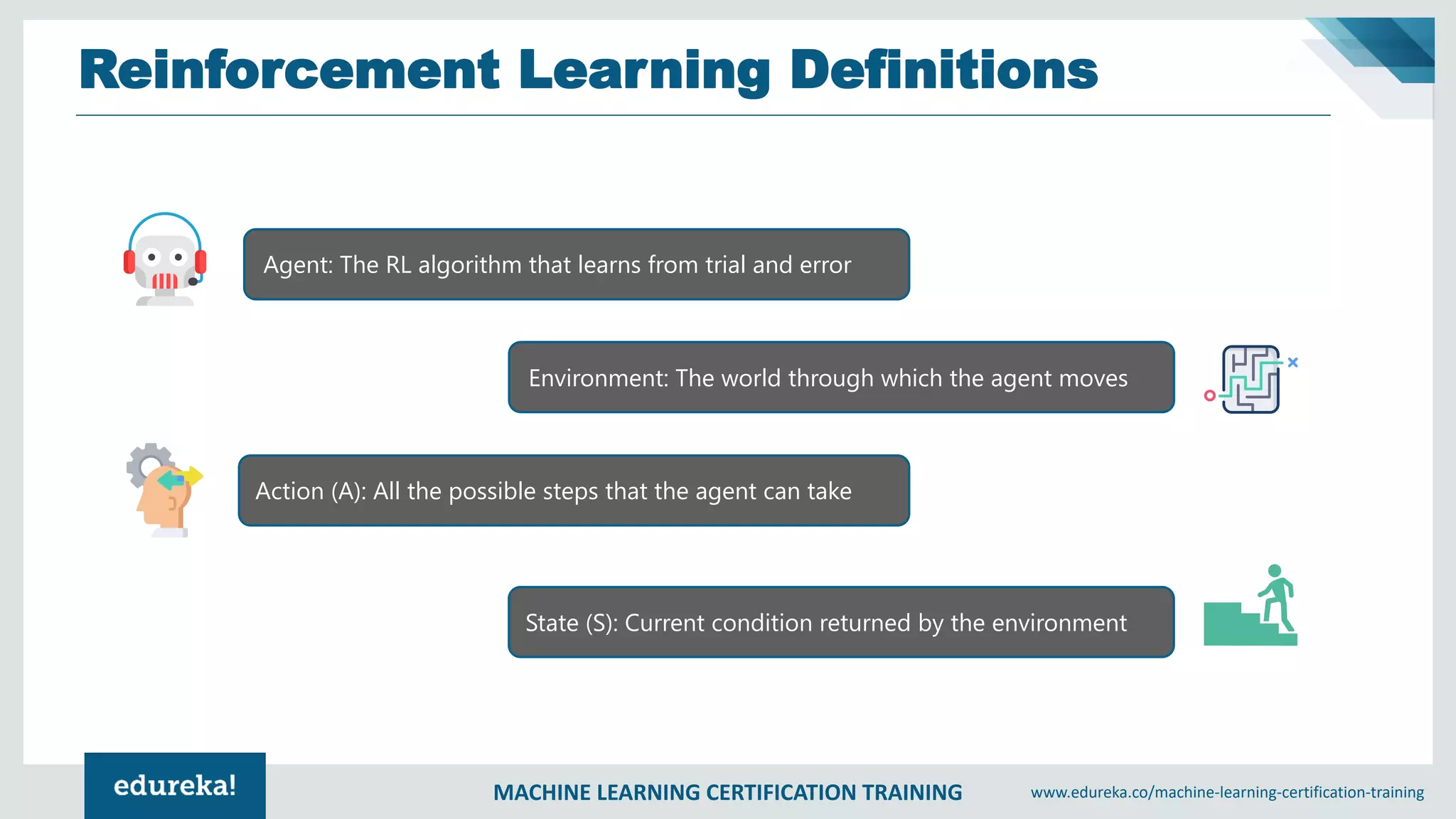
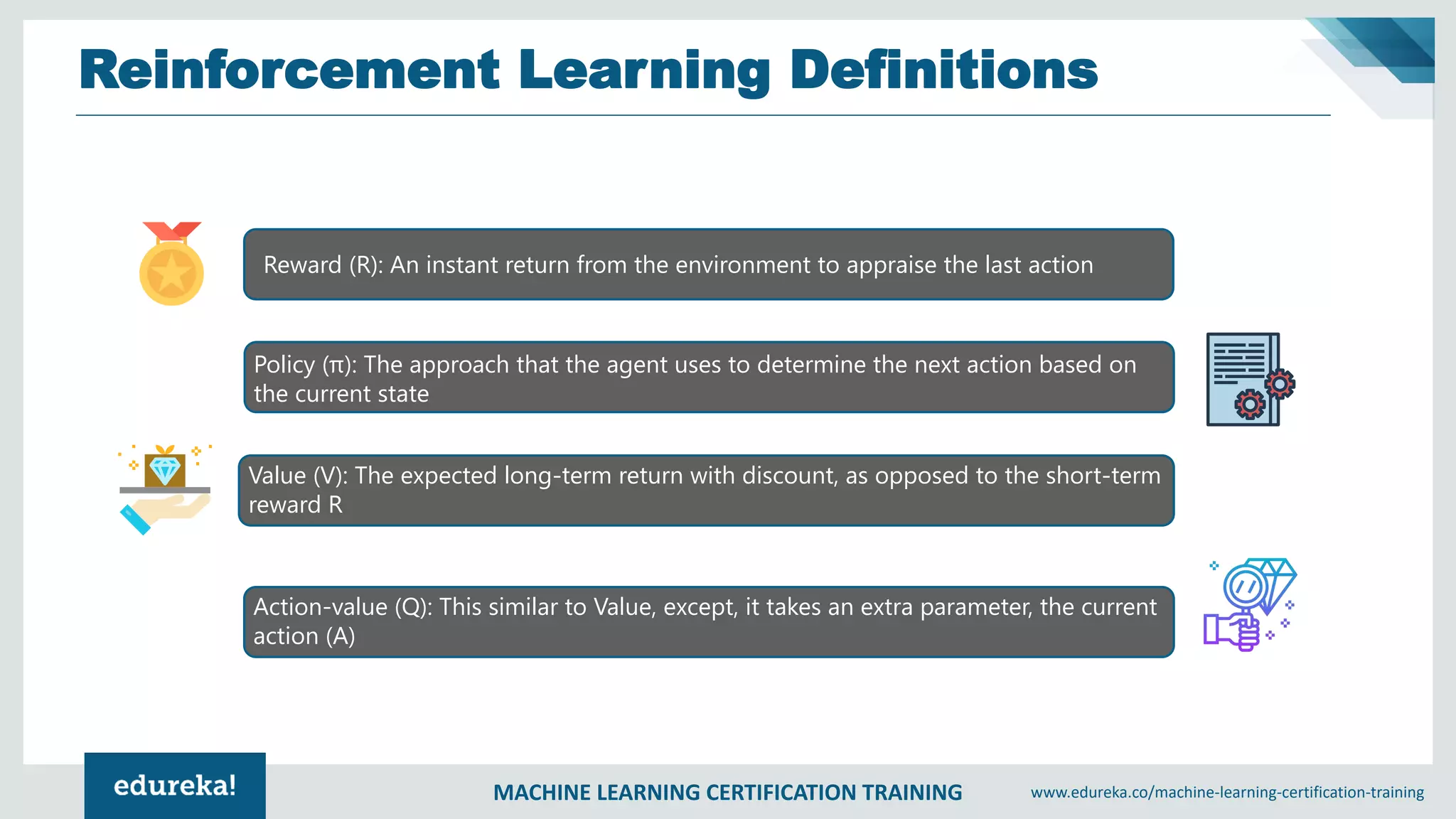
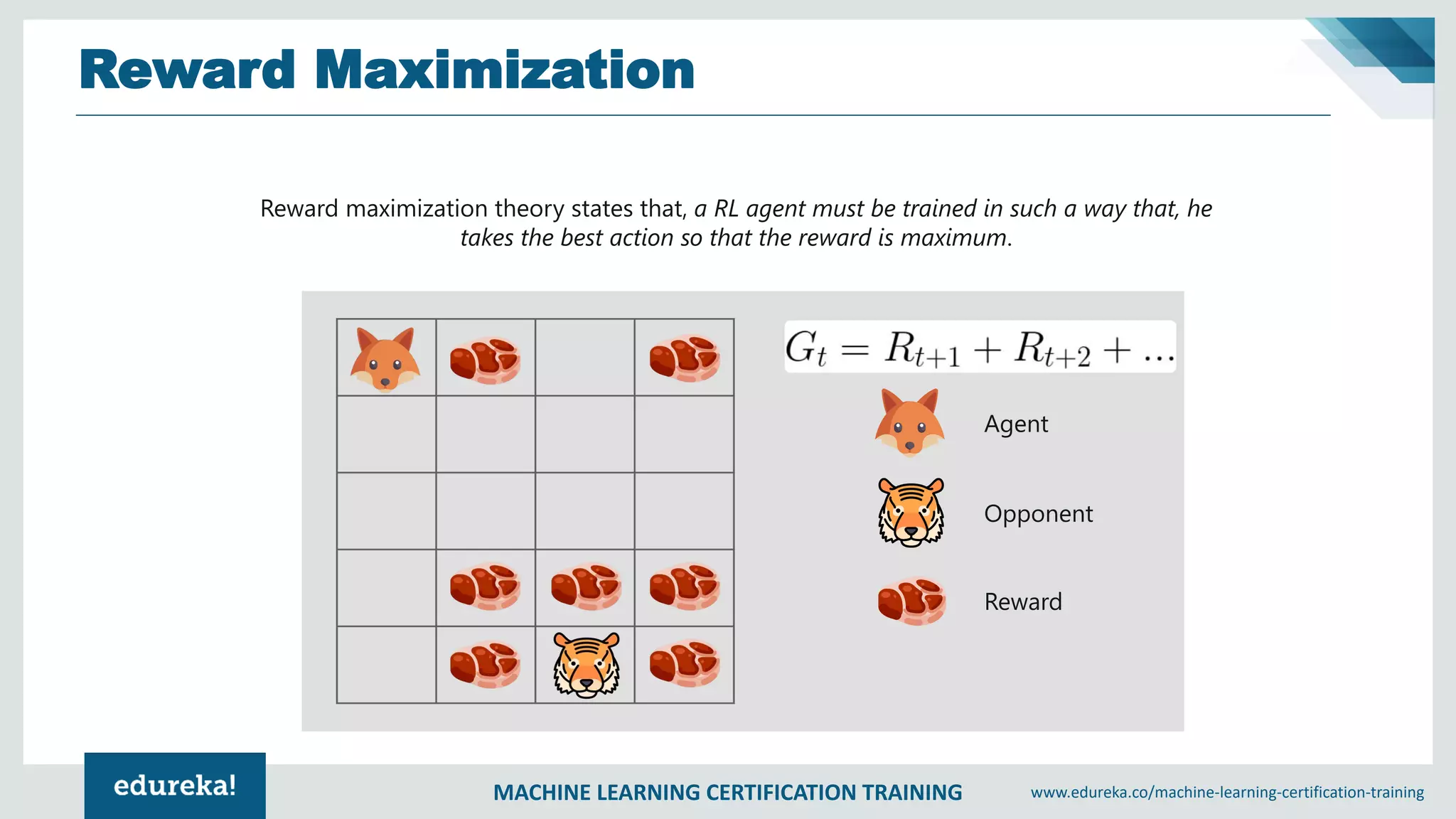
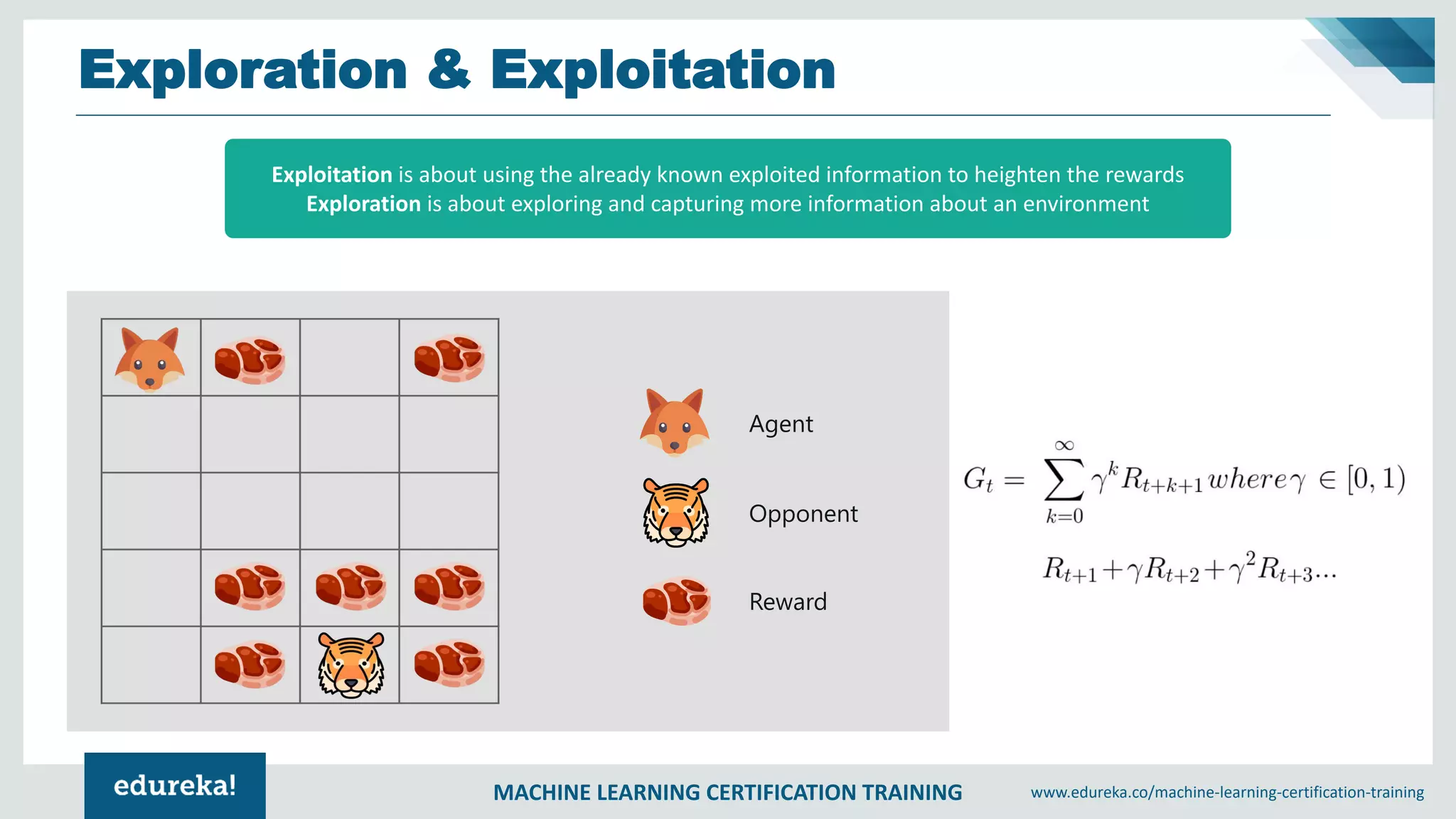
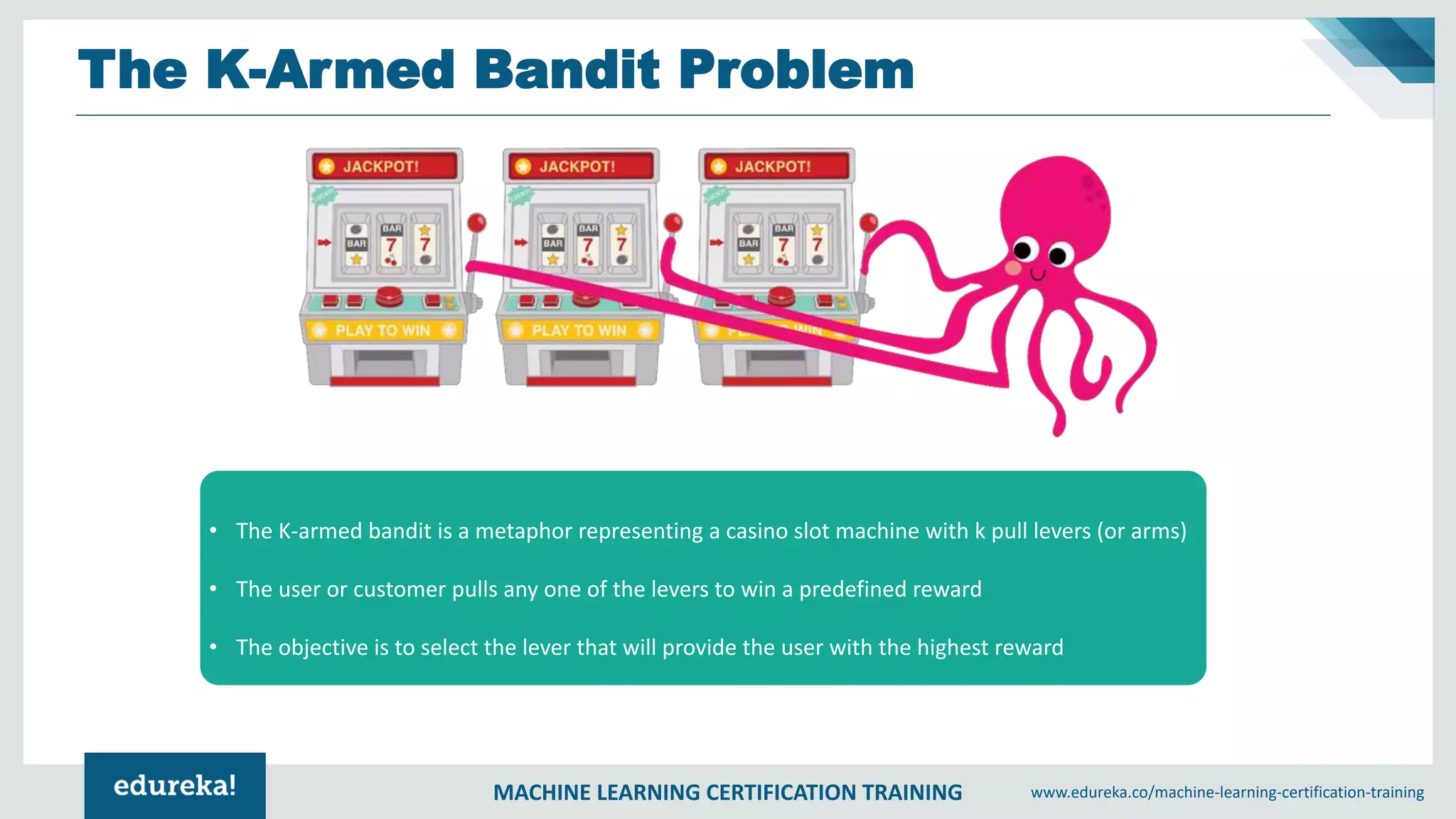
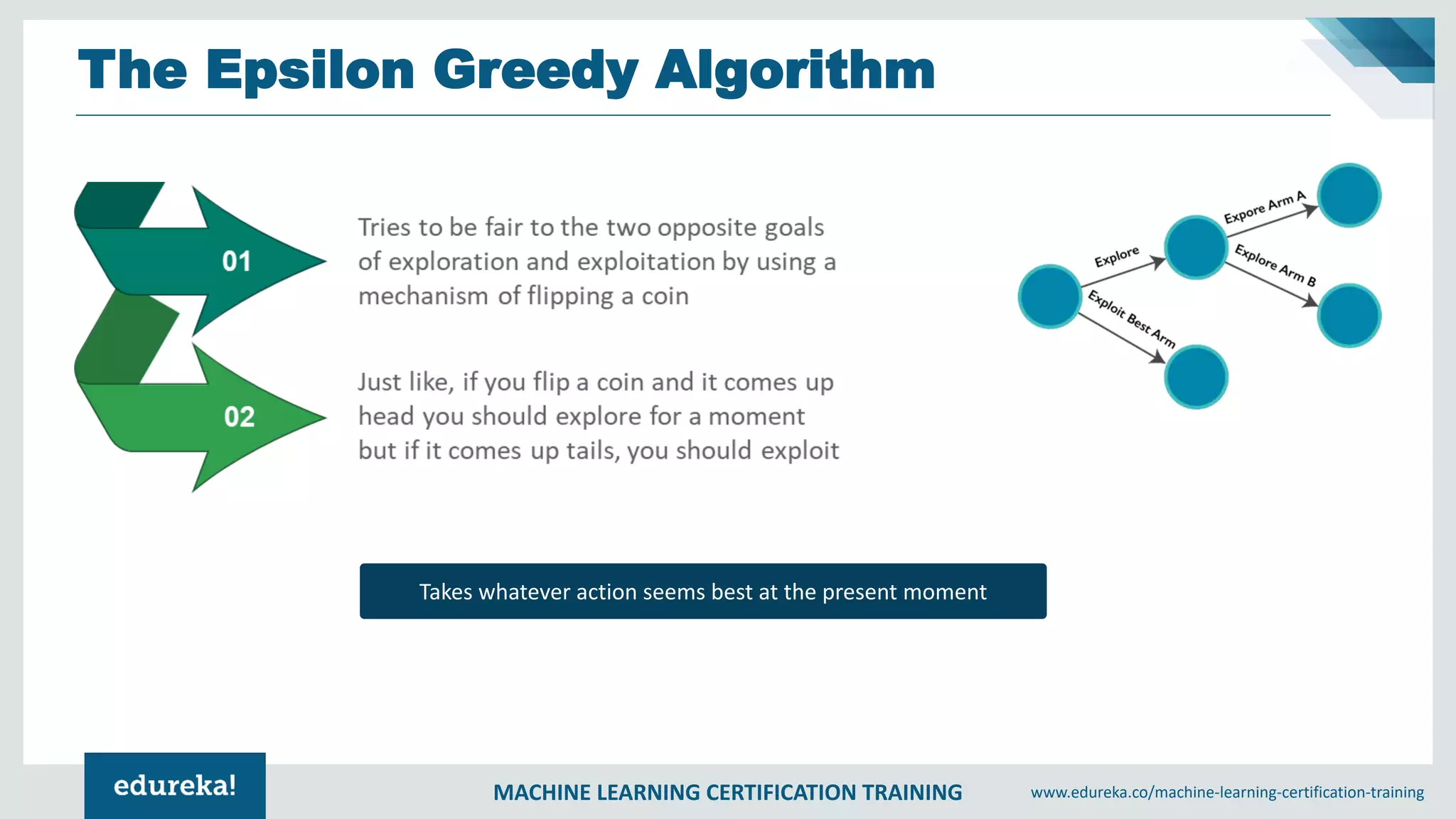
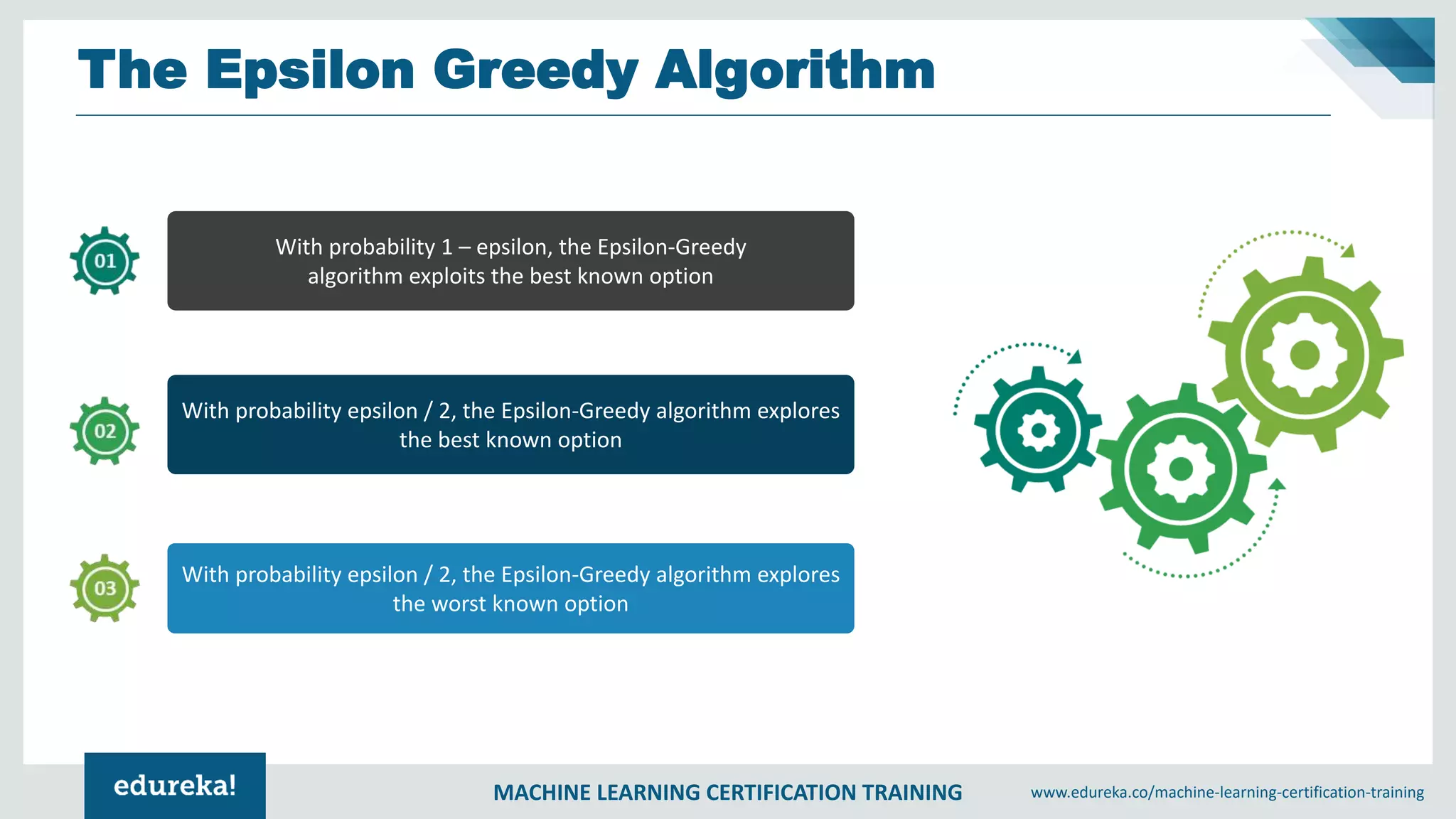

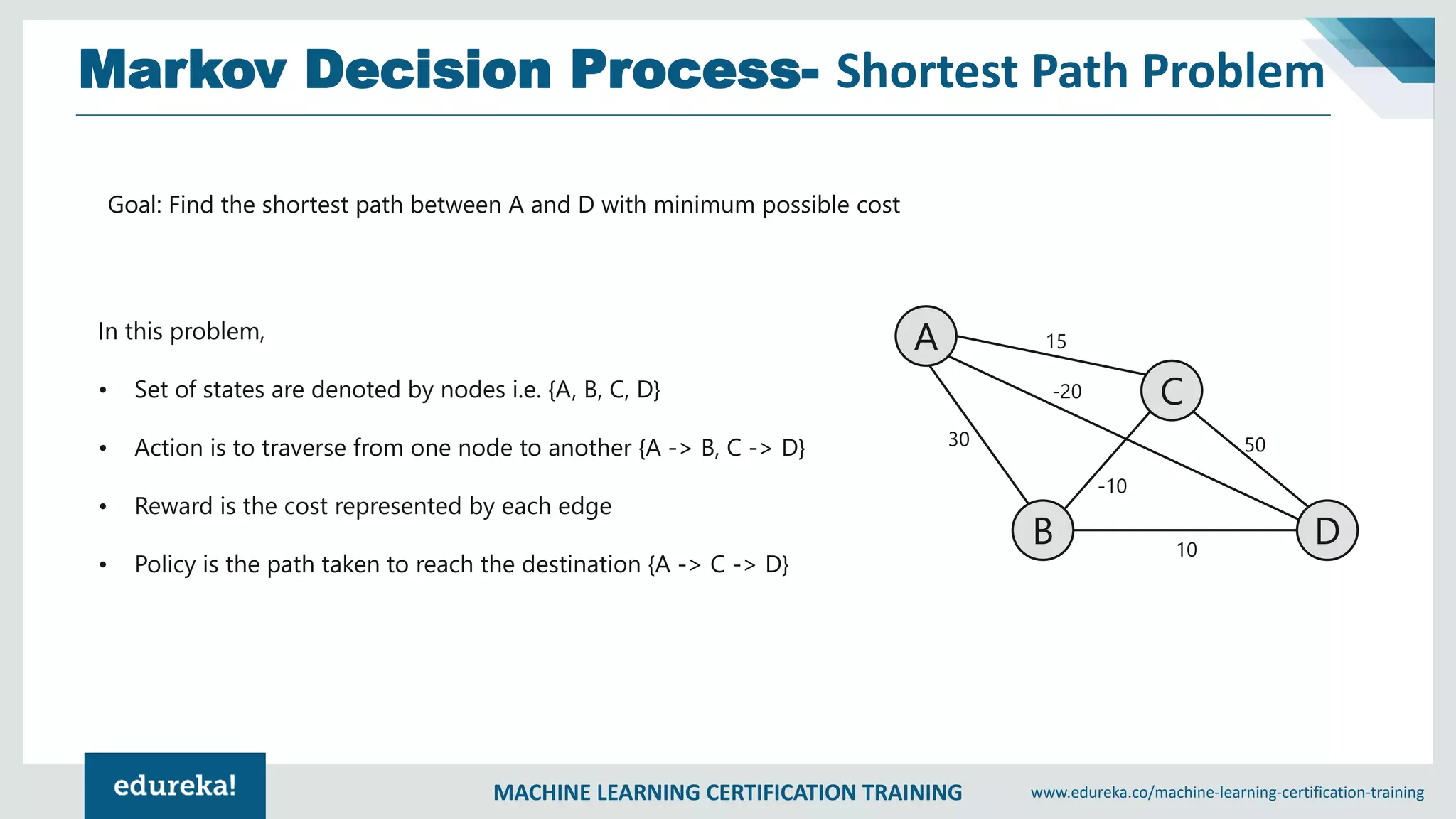

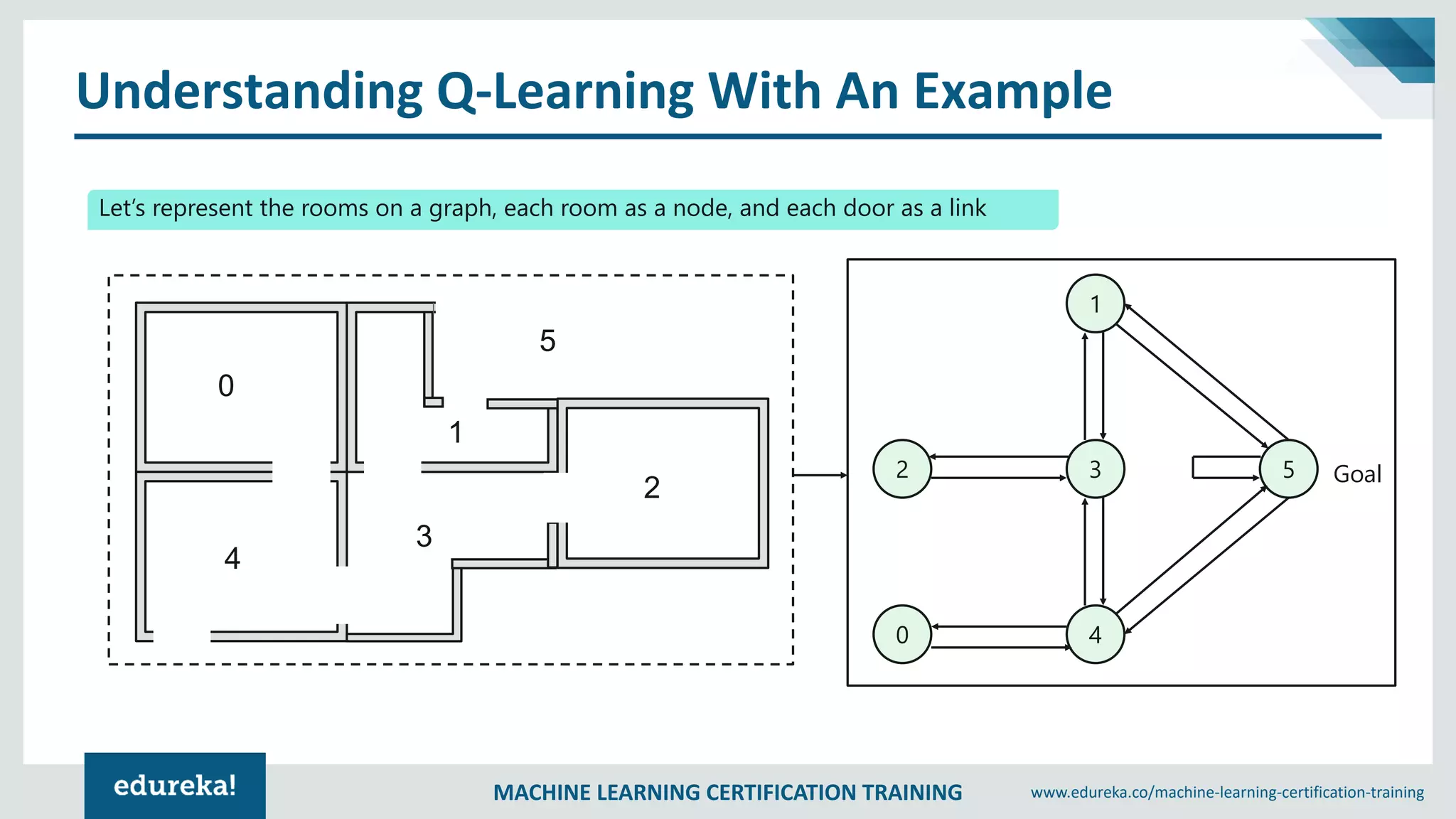
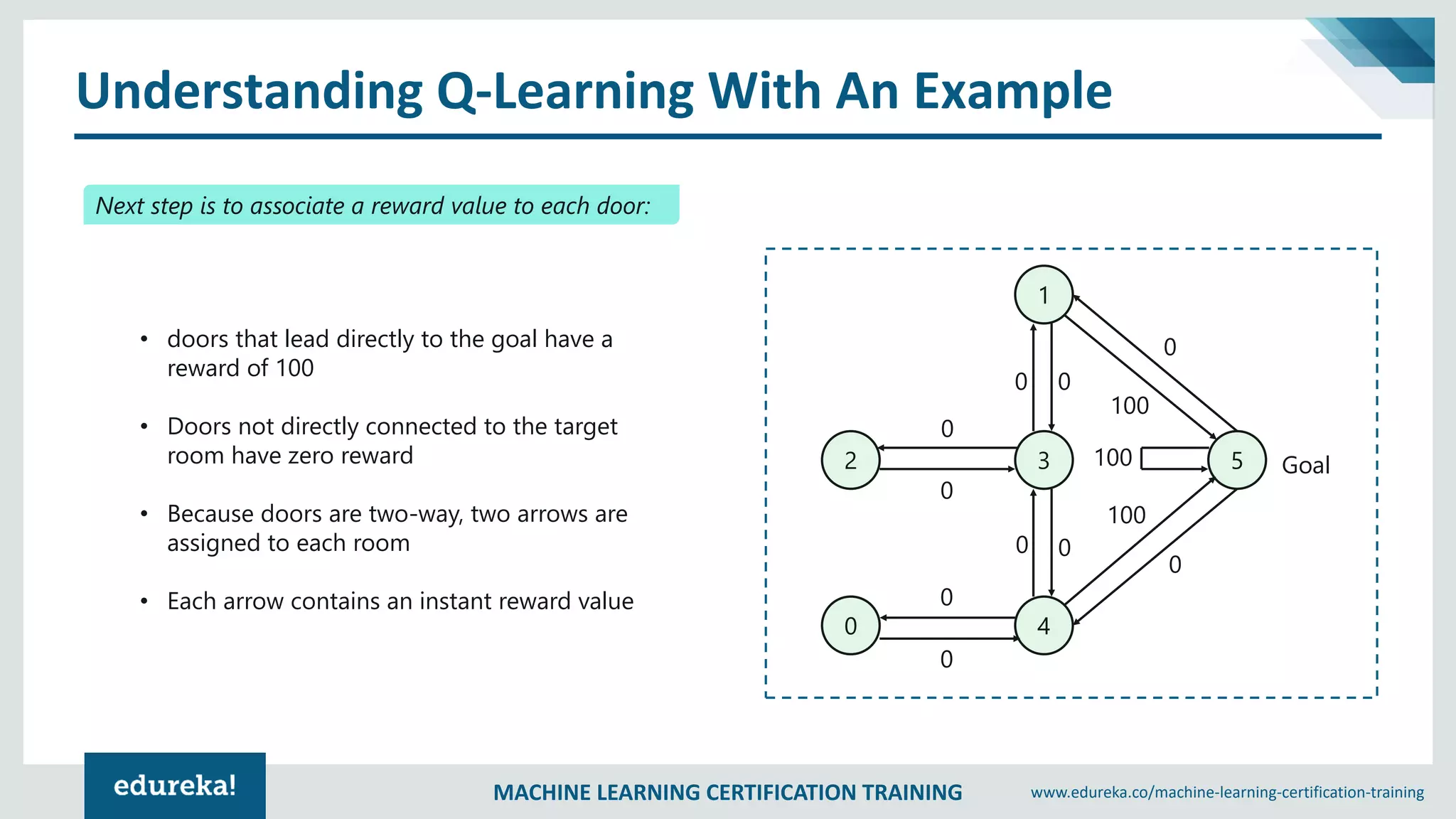
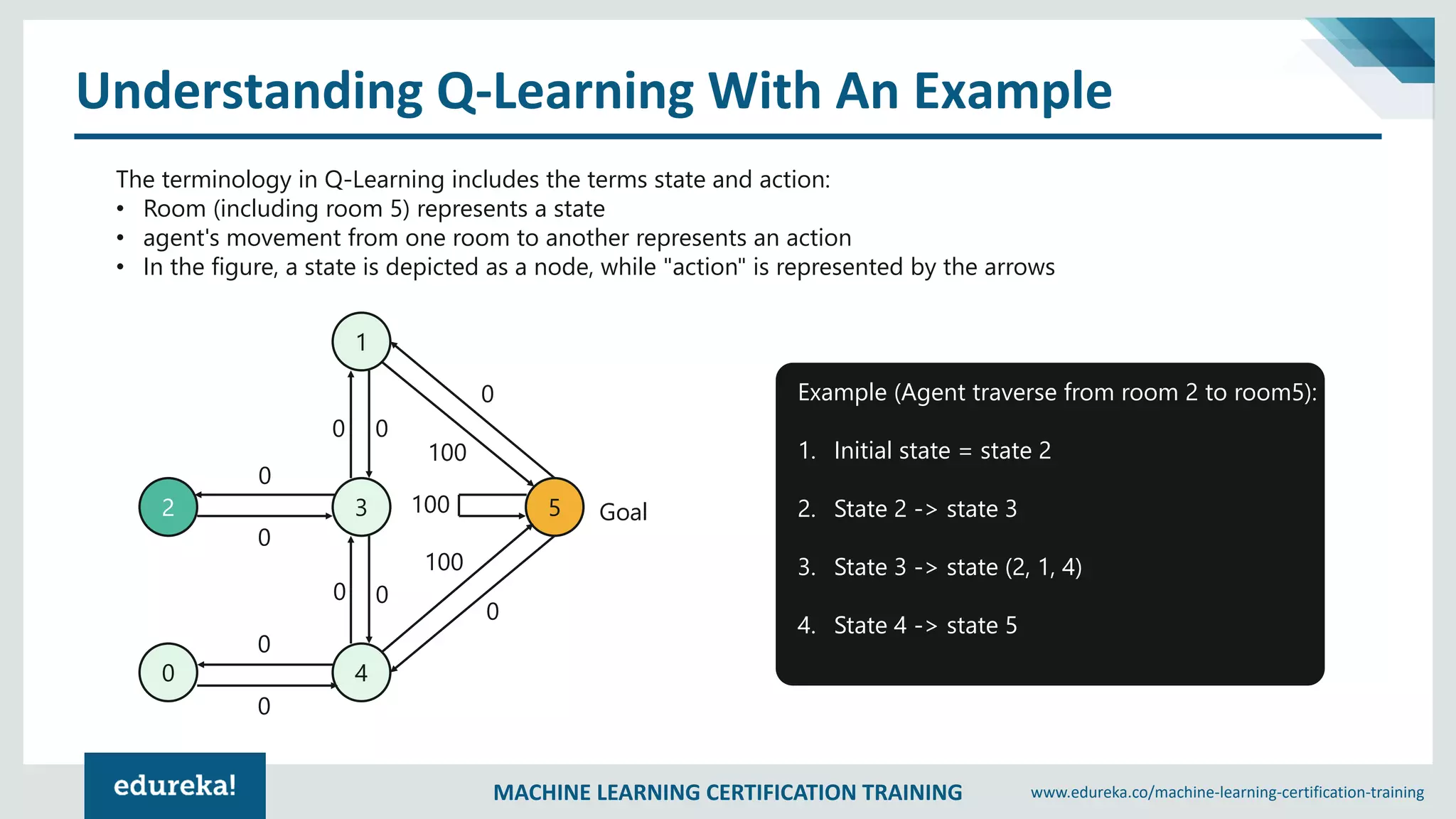
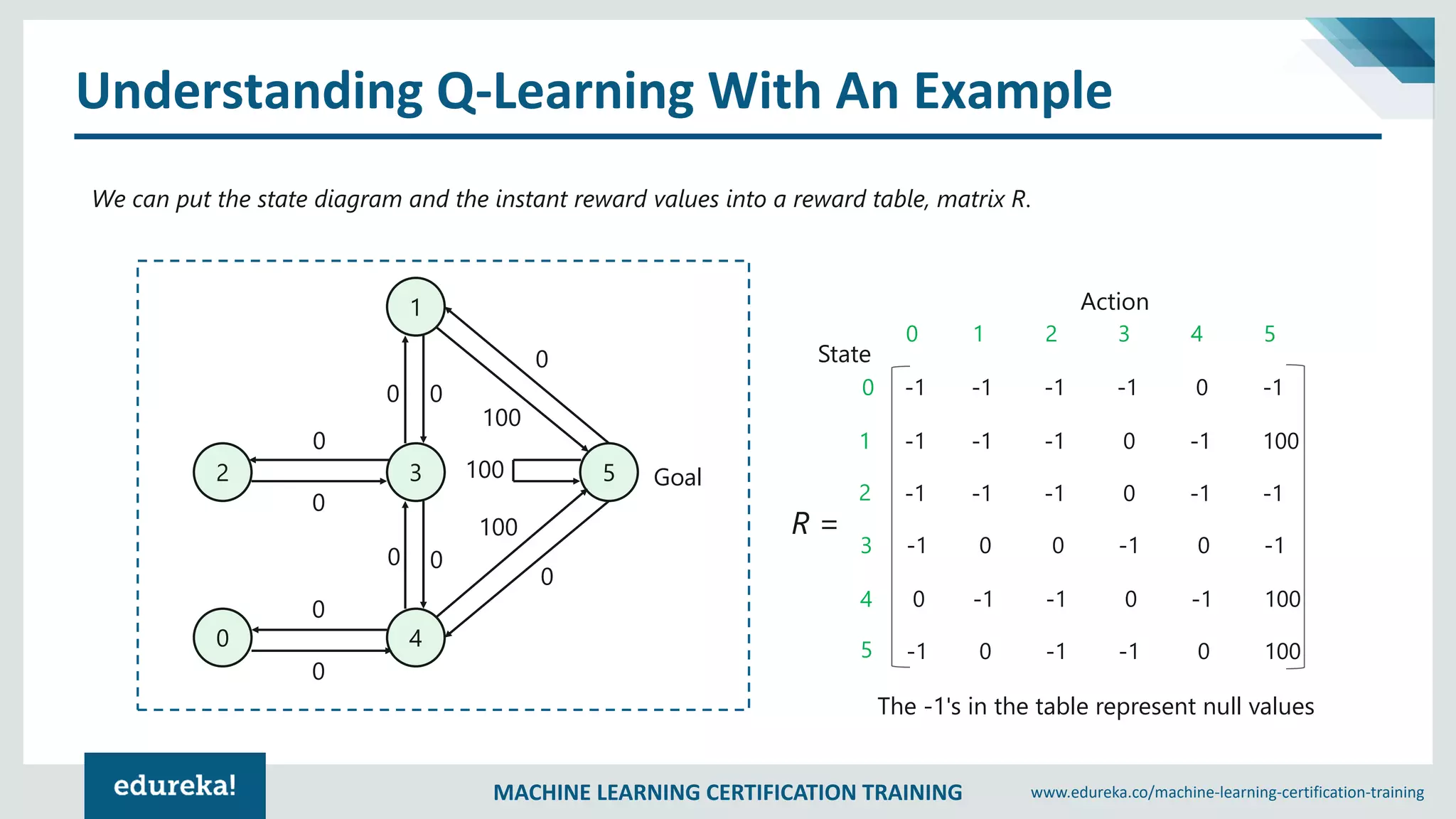
![MACHINE LEARNING CERTIFICATION TRAINING www.edureka.co/machine-learning-certification-training
Add another matrix Q, representing the memory of what the agent has learned through experience.
• The rows of matrix Q represent the current state of the agent
• columns represent the possible actions leading to the next state
• Formula to calculate the Q matrix:
Q(state, action) = R(state, action) + Gamma * Max [Q(next state, all actions)]
The Gamma parameter has a range of 0 to 1 (0 <= Gamma > 1).
• If Gamma is closer to zero, the agent will tend to consider only
immediate rewards.
• If Gamma is closer to one, the agent will consider future rewards
with greater weight
Note
Understanding Q-Learning With An Example](https://image.slidesharecdn.com/machinelearningcourse-190315061341/75/Machine-Learning-Course-Edureka-135-2048.jpg)
![MACHINE LEARNING CERTIFICATION TRAINING www.edureka.co/machine-learning-certification-training
Q – Learning Algorithm
1
2
3
4
5
6
7
8
9
Set the gamma parameter, and environment rewards in matrix R
Initialize matrix Q to zero
Select a random initial state
Set initial state = current state
Select one among all possible actions for the current state
Using this possible action, consider going to the next state
Get maximum Q value for this next state based on all possible actions
Compute: Q(state, action) = R(state, action) + Gamma * Max[Q(next state, all actions)]
Repeat above steps until current state = goal state](https://image.slidesharecdn.com/machinelearningcourse-190315061341/75/Machine-Learning-Course-Edureka-136-2048.jpg)
![MACHINE LEARNING CERTIFICATION TRAINING www.edureka.co/machine-learning-certification-training
Q – Learning Example
First step is to set the value of the learning parameter Gamma = 0.8, and the initial state as Room 1.
Next, initialize matrix Q as a zero matrix:
• From room 1 you can either go to room 3 or 5, let’s select room 5.
• From room 5, calculate maximum Q value for this next state based on all possible actions:
Q(state, action) = R(state, action) + Gamma * Max[Q(next state, all actions)]
Q(1,5) = R(1,5) + 0.8 * Max[Q(5,1), Q(5,4), Q(5,5)] = 100 + 0.8 * 0 = 100
1
3
5
1
4
5](https://image.slidesharecdn.com/machinelearningcourse-190315061341/75/Machine-Learning-Course-Edureka-137-2048.jpg)
![MACHINE LEARNING CERTIFICATION TRAINING www.edureka.co/machine-learning-certification-training
Q – Learning Example
First step is to set the value of the learning parameter Gamma = 0.8, and the initial state as Room 1.
Next, initialize matrix Q as a zero matrix:
• From room 1 you can either go to room 3 or 5, let’s select room 5.
• From room 5, calculate maximum Q value for this next state based on all possible actions
Q(state, action) = R(state, action) + Gamma * Max[Q(next state, all actions)]
Q(1,5) = R(1,5) + 0.8 * Max[Q(5,1), Q(5,4), Q(5,5)] = 100 + 0.8 * 0 = 100
1
3
5
1
4
5](https://image.slidesharecdn.com/machinelearningcourse-190315061341/75/Machine-Learning-Course-Edureka-138-2048.jpg)
![MACHINE LEARNING CERTIFICATION TRAINING www.edureka.co/machine-learning-certification-training
Q – Learning Example
For the next episode, we start with a randomly chosen initial state, i.e. state 3
• From room 3 you can either go to room 1,2 or 4, let’s select room 1.
• From room 1, calculate maximum Q value for this next state based on all possible actions:
Q(state, action) = R(state, action) + Gamma * Max[Q(next state, all actions)]
Q(3,1) = R(3,1) + 0.8 * Max[Q(1,3), Q(1,5)]= 0 + 0.8 * [0, 100] = 80
The matrix Q get’s updated
3
1
2
4
3
5](https://image.slidesharecdn.com/machinelearningcourse-190315061341/75/Machine-Learning-Course-Edureka-139-2048.jpg)
![MACHINE LEARNING CERTIFICATION TRAINING www.edureka.co/machine-learning-certification-training
Q – Learning Example
For the next episode, the next state, 1, now becomes the current state. We repeat the inner loop of the Q
learning algorithm because state 1 is not the goal state.
• From room 1 you can either go to room 3 or 5, let’s select room 5.
• From room 5, calculate maximum Q value for this next state based on all possible actions:
Q(state, action) = R(state, action) + Gamma * Max[Q(next state, all actions)]
Q(1,5) = R(1,5) + 0.8 * Max[Q(5,1), Q(5,4), Q(5,5)] = 100 + 0.8 * 0 = 100
The matrix Q remains the same since, Q(1,5) is already fed to the agent
1
3
5
1
4
5](https://image.slidesharecdn.com/machinelearningcourse-190315061341/75/Machine-Learning-Course-Edureka-140-2048.jpg)

